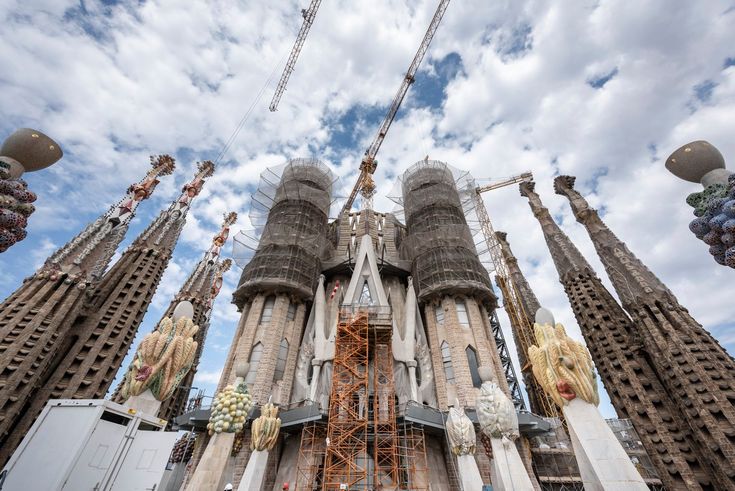Sagrada Familia | Barcelona’s Gothic Masterpiece
One of Barcelona’s most iconic symbols, the Sagrada Familia is the most visited landmark in the whole of Spain. Considered to be a great example of modernist architecture designed by architect Antoni Gaudi, many tourists from across the globe come to visit this unfinished church. If you are planning your Barcelona trip and wondering if a visit to Sagrada Familia is worth it, here is all you need to know!
Quick Facts About Sagrada Familia
- Official name: Basilica I Temple Expiatori de la Sagrada Familia
- Location: Sagrada Familia is located at C/ de Mallorca, 401, 08013 Barcelona, Spain
- Date of opening: 7 November 2010
- Architects Involved: Francisco de Paula del Villar, Antoni Gaudi, Domènec Sugrañes i Gras, Francesc de Paula Quintana i Vidal, Isidre Puig Boada, Lluís Bonet i Gari, Francesc Cardoner, Jordi Bonet i Armengol, and Jordi Faulí i Oller
- Architectural Style: Modernist, Art Nouveau Architecture, Noucentisme, Gothic Revival architecture, Spanish Gothic architecture
- UNESCO World Heritage Site: Since 1984
- Number of Visitors Per Year: 3,000,000 visitors every year (approx.
)
Facts About Sagrada Familia
What is the Sagrada Familia?
The Sagrada Familia is a unique piece of architecture built by the world-renowned architect — Antoni Gaudi — in Barcelona.
This Roman-Catholic church in Barcelona is breathtakingly beautiful and what makes it historically significant is that it holds the title of being the largest unfinished Roman Catholic Church in the world. Under construction for over a century, since 1882, the church was consecrated in 2010 and has been proclaimed a minor basilica.
A UNESCO World Heritage Site, the church combines Gothic Revival and Art Nouveau, and Modernista forms of architecture. Today, 9 of the total 18 planned towers have been completed and the rest of the construction is anticipated to be completed by 2026, which marks the centenary of Gaudí’s death.
Book Tickets to Sagrada Familia
Why Visit Sagrada Familia in Barcelona?
- Sagrada Familia is an iconic example of Antoni Gaudi’s exemplary style, with elements of Art Nouveau, Catalan Modernism, and Spanish Late Gothic design.
- The work revolved around the theme of nature figures, in terms of both, symbolism and the usage of organic shapes and forms.
- Inspired by nature, this man-made masterpiece is the tallest building in Europe to explore.
- Journey up the Sagrada Familia’s famous towers to witness a breathtaking panoramic view of the city of Barcelona.
- Witness the great architecture of a structure that has been under construction for over a century as you explore the different facades up close.
- Explore the historical drawings, pictures, and figures of the Sagrada Familia’s evolution, all the way from the beginning in 1882.
- Discover the life and works of Antoni Gaudi, Barcelona’s most famous architect.
- Explore the Sagrada Familia crypt, where Antoni Gaudi is buried.
- As you explore the basilica’s inside, you can view the columns towering 70 meters to the ceiling and the huge stained-glass windows through which the sunlight seeps into the interiors, to produce a dreamlike experience.
What’s Inside Sagrada Familia?
Plan Your Visit to Sagrada Familia
Where is Sagrada Familia Located?
What Are Sagrada Familia Opening Hours?
Address: C/ de Mallorca, 401, 08013 Barcelona, Spain
Find On Map
The Sagrada Familia is situated in the Eixample Right district of Barcelona, Catalonia, Spain.
Nearest Metro Station: Sagrada Familia Station (34 m)
Directions to Sagrada Familia
Depending on the time of the year you intend to visit Sagrada Familia, the opening hours may vary accordingly:
- April – September: Mon-Sat, 9 AM to 8 PM; Sun, 10:30 AM to 8 PM
- March – October: Mon-Sat, 9 AM to 7 PM; Sun, 10:30 AM to 7 PM
- November – February: Mon-Sat, 9 AM to 6 PM; Sun, 10:30 AM to 6 PM
- 1 and 6 January, 25 and 26 December: 9 AM to 2 PM
Mass Timings:
The international mass takes place every Sunday at 9 AM.
Best Time to Visit Sagrada Familia
Who Built the Sagrada Familia in Barcelona?
The initial architect was Francisco de Paula del Villar but the project was taken over by Gaudi who created a stunning display of Art Nouveau and Catalan Noucentisme architecture.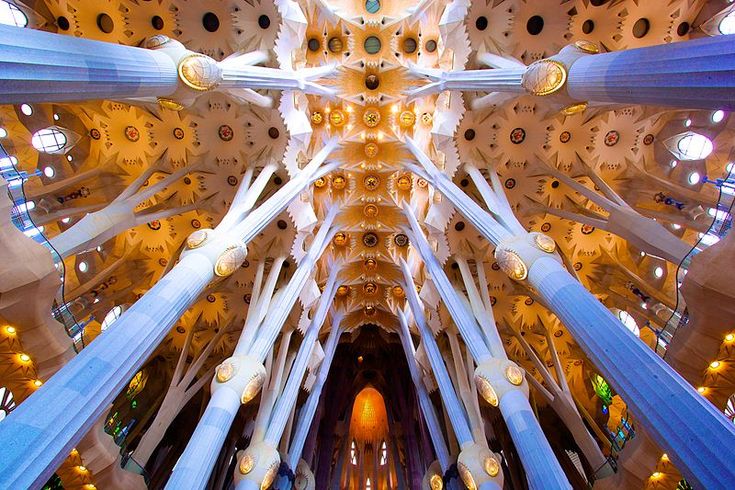
Although during Gaudi’s lifetime only less than a quarter of the basilica was complete, he is considered the designer of the Sagrada Familia. While many are of the opinion that the work post-Gaudi disregarded his design, it has attempted to true to Gaudi’s vision. After parts of the unfinished basilica and Gaudi’s models and workshop were destroyed during the Spanish Civil war, these plans were reconstructed and adapted to be made more modern. The plan of Sagrada Familia, as it stands, is a creation of Gaudi’s genius.
More About Gaudi
What To Do At Sagrada Famiilia, Barcelona?
Enjoy the View From the Nativity & Passion Towers
Having a peep from either of the two towers is going to offer you nothing, but sheer beauty.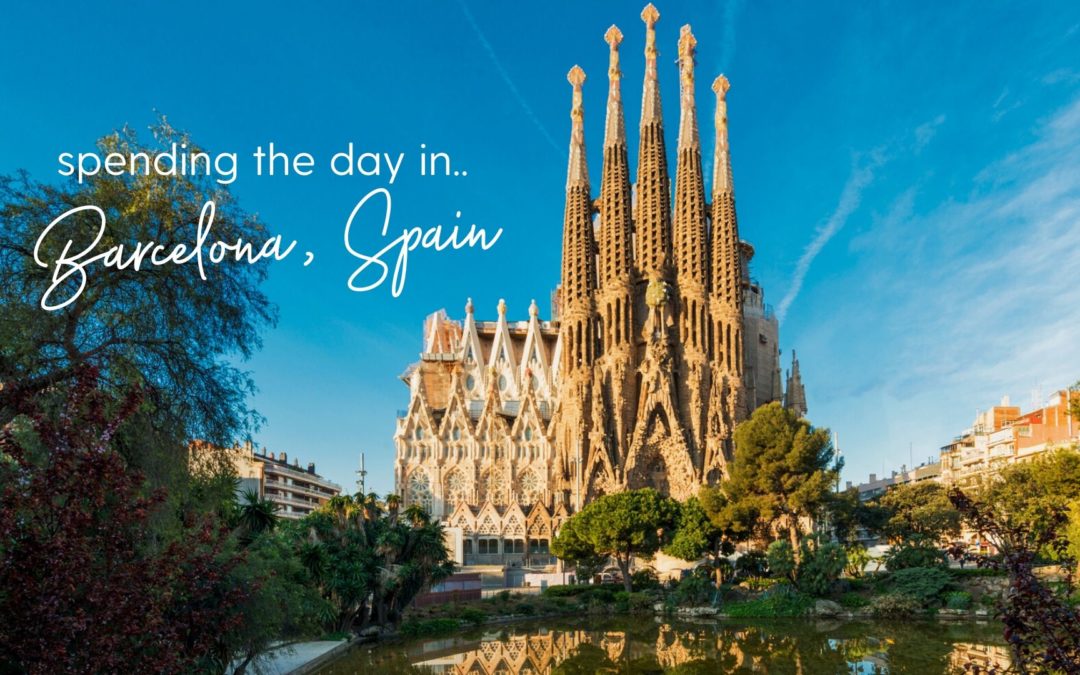
The Sagrada Familia Towers
Take the Sagrada Stairway
On visiting the Sagrada Familia Towers, the coiled stairs spiral in shape and are a must-use. With over 500 stairs to climb, it may seem exhausting but is entirely safe and in sync with Gaudi’s architecture and style. Children below 6 years of age and people with physical disabilities are not recommended to take the stairs and are refrained from accessing the Towers.
Visit the Sagrada Familia Museum
The Sagrada Familia Museum houses an exquisite collection of Antoni Gaudi’s construction models, drawings, furnishings, and much more, in an underground exhibit. You can find the space under the Passion Facade inside the semi-basement. Take a close look at the mind of this renowned architect and how his plans were initiated.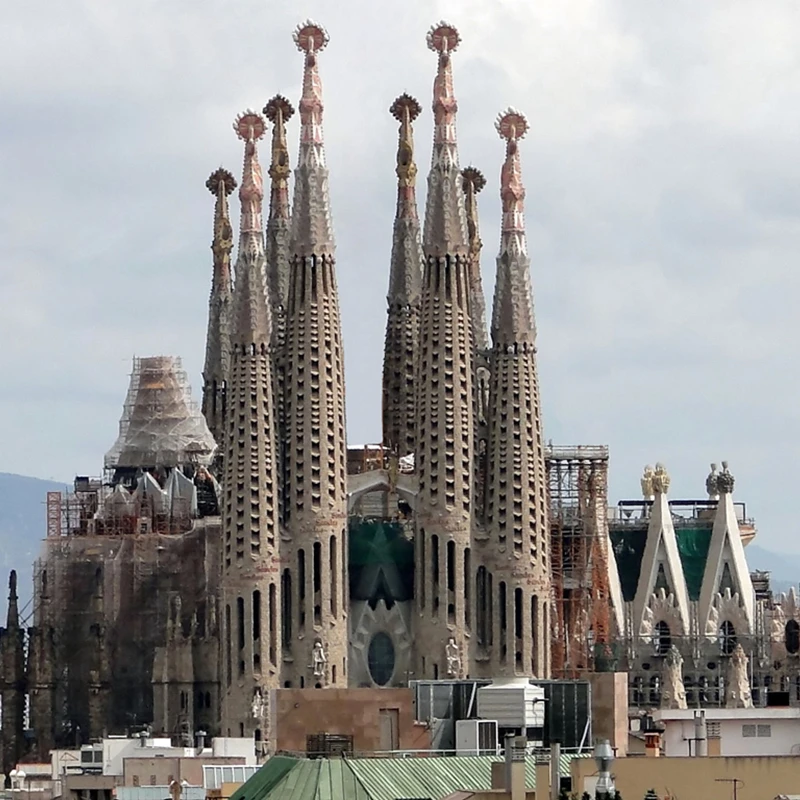
Attend Mass at the Sagrada Familia
Mass is held regularly at the Sagrada Familia and is open to all. Mass is held on Saturdays, Sundays, and on holy days of obligation. On Saturdays and the eve of holy days of obligation, mass takes place at 8 AM and on Sundays and holy days of obligation, it takes place at 9 AM.
Know More
What’s Inside Sagrada Familia?
Thanks to Gaudi’s distinctive design Sagrada Familia stands tall as an architectural marvel. People from all over the world come to view the towers and the facades they form. However, the inside of the basilica is just as spectacular.
As you enter the basilica you will be treated by the massive columns that resemble trees of a forest evoking the sense of walking into a botanical garden, which has been lit with various hues of reds, blues, and yellows thanks to the stained glass windows. At the center of the Apse, you will find the altar. Above this, you will view the hectagon-shaped Baldachin, rife with symbolism, suspended in the air.
The crypt, located below the apse, is also a key highlight. A UNESCO Heritage Site, it houses Gaudi’s tomb and also is a chapel where the masses are celebrated regularly.
Explore the Sagrada Familia Inside
Book Sagrada Familia Tickets
Combo (Save 5%): Park Güell + Sagrada Familia Skip-the-Line Tickets
Instant Confirmation
Mobile Ticket
Flexible Duration
Guided Tour
More details +
€44.65
Priority Access to Sagrada Familia + Escorted Entrance
Instant Confirmation
Mobile Ticket
Flexible Duration
More details +
Fast Track Guided Tour of Sagrada Familia
Instant Confirmation
Mobile Ticket
1 hr.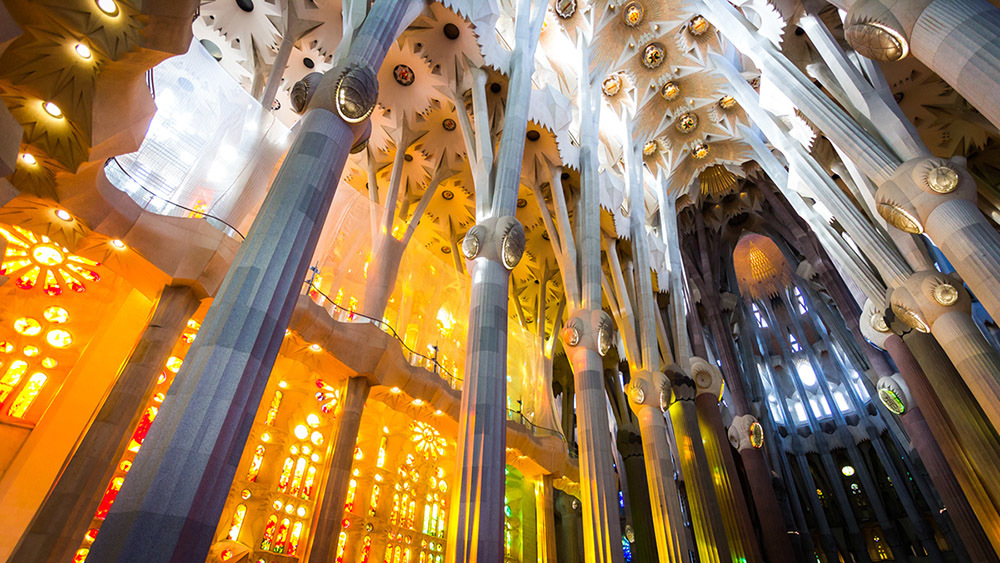
Guided Tour
More details +
Brief History of Sagrada Familia
The Basilica de la Sagrada Familia, also popularly known as the Sagrada Familia, is a Roman Catholic church situated in Barcelona. The work on the masterpiece began in 1874 when talks began to emerge in order to construct a church honoring the Holy family.
Under the guidance of the original architect Francisco de Paula del Villar y Lozano, the construction work began but was soon replaced by Antoni Gaudi, where work focussed on modernist creation. Soon, by 1923, he had a vision of the basilica. The church’s first tower finished in 1925. Unfortunately, he died on 10 June 1926 and the work came to a standstill.
After his passing, for over a century, five generations of architects have worked toward bringing Gaudi’s vision to reality even after a large chunk of his ideas was destroyed when a fire broke out in 1936. In 2010, the church was finally consecrated by Pope Benedict XVI.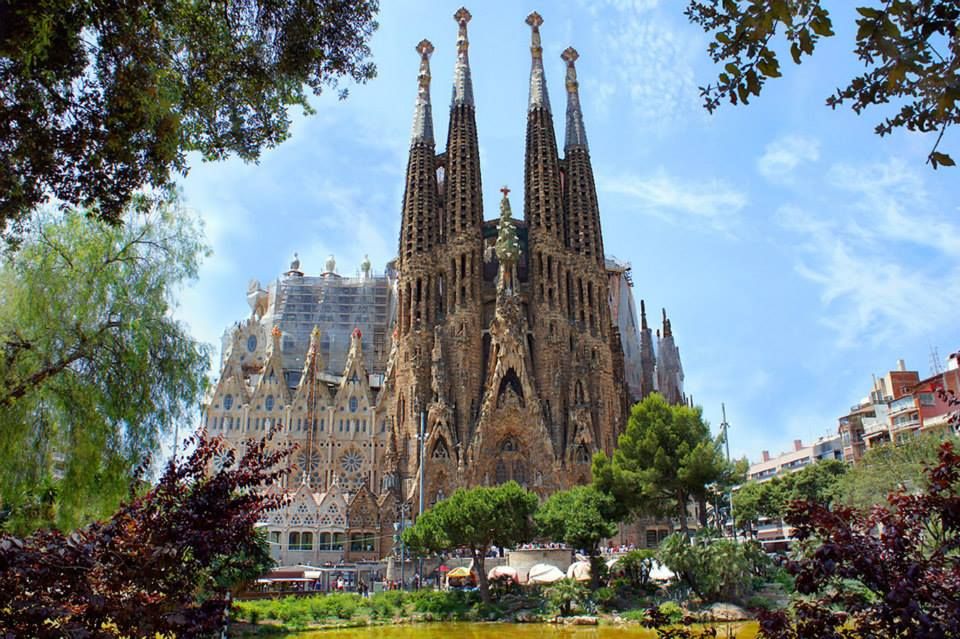
Detailed History of Sagrada Familia
Architecture of the Sagrada Familia
Sagrada Familia was envisioned by the famous architect Antoni Gaudi who was known for bringing Art Nouveau into the surface decoration of the cathedral. The church is shorter in width than most of the cathedrals in Europe and showcases a mix of Catalan Modernism, Catalan Noucentisme, Art Nouveau, and Spanish Late Gothic.
The structure has numerous steeples, seven apsidal chapels, three portals, double aisles, and 18 towers, each of which is very distinct. The interiors of the church are quite extraordinary with covered passages forming a rectangle around the church, passing through the three portals. There are no right angles present in the interiors or exteriors of the church and consists of a few straight lines in terms of design.
The areas that are open to the visitors give you a feel of walking through a castle consisting of colorful and magnificent large glass windows and ceilings that are carved intricately.
Design of the Sagrada Familia
Sagrada Familia Finish Date
The Sagrada Familia is believed to be completed in 2026. The year also marks the centenary of Antoni Gaudi’s death.
However, this finish date only corresponds to the remaining towers under construction. it is believed that the various sculptures and symbols that will form part of the church, as well as the main entrance, will take longer. It could be even 2040 before the church is fully completed.
View Sagarda Familia Completed
UNESCO World Heritage Site
Sagrada Familia was registered as a UNESCO World Heritage site in 1984. During the additional registration process in 2005, the registered name was changed to include it as a part of Works of Antoni Gaudí.
A total of seven properties created by the architect Antoni Gaudí in or near Barcelona have been declared UNESCO World Heritage Sites are they are believed to stand as a testament to Gaudi’s contribution to the development of architecture and building technology in Barcelona during the late 19th and early 20th centuries.
The seven buildings are: Park Güell, Palacio Güell, Casa Mila, Casa Vicens, Gaudí’s work on the Nativity façade and Crypt of the Sagrada Familia, Casa Batlló, and the Crypt in Colonia Güell.
Frequently Asked Questions About Sagrada Familia in Barcelona
Q. What is the Sagrada Familia?
A. Sagrada Familia, one of Barcelona’s iconic symbols, is a Basilica designed by the famous architect Antoni Gaudi. This attraction has been under construction since 1882.
Q. Where is Sagrada Familia?
A. One of Gaudi’s most famous works, the Sagrada Familia is situated in the city of Barcelona, Spain at C/ de Mallorca, 401, 08013 Barcelona, Spain.
Q. What is Sagrada Familia famous for?
A. Constructed by Antoni Gaudi, the iconic structure is famous for its unique style that combines elements of Art Nouveau, Spanish Late Gothic design, and Catalan Modernism. It has also gained fame for the being the largest unfinished Roman Catholic Church in the world.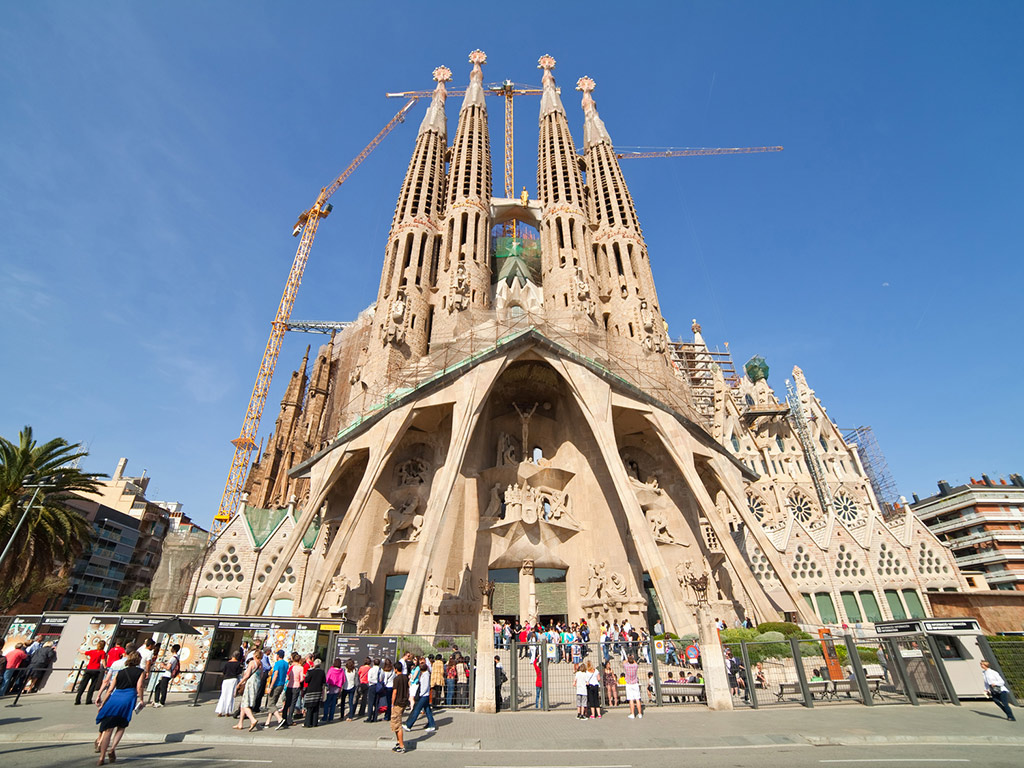
Q. Who built the Sagrada Familia?
A. The construction of Sagrada Familia began under architect Francisco de Paula del Villar and was eventually taken over by Antoni Gaudi as the chief architect to transform the project. While seven other architects have taken over the project, Gaudi is recognized as the main architect of the Sagrada Familia.
Q. When did Sagrada Familia open?
A. Sagrada Familia began its construction on 19 March 1882 and continues to be still under construction, with just parts of the Cathedral being open to the public after the church was consecrated by Pope Benedict XVI on 7 November 2010.
Q. What are the Sagrada Familia opening hours?
A. The opening hours of Sagrada Familia vary: April to September – 9 AM to 8 PM, March to October – 9 AM to 7 PM, November to February – 9 AM to 6 PM. On January 1 and 6 and December 25 and 26 it is open from 9 AM to 2 PM.
Q. What are the mass timings at Sagrada Familia?
A. The Sagrada Familia mass is held at the crypt on Monday to Saturday, at 9 AM (Catalan) and 8 PM (Spanish).
Q. What’s inside Sagrada Familia?
A. Sagrada Familia has 18 towers, each one carrying an intricate significance of its own. If you climb these towers, you will be able to view the various depictions on the towers up close as well as a spectacular view of the city of Barcelona. Inside the main basilica, you will be able to view the main altar, the crypt, and various design elements such as the high columns that make the basilica unlike anything you have seen before.
Q. Why should I visit Sagrada Familia?
A. The Sagrada Família is one of the most iconic examples of Antoni Gaudí’s unique style. If you visit Sagrada Familia, you will not only get to experience Gaudi’s genius, bit also witness the depcitions of the resurrection of Jesus Christ. You can view the towers dedicated to prominent Christian figures such as theTwelve Apostles, the Virgin Mary, the four Evangelists and, Jesus Christ.
Q. Is it worth visiting Sagrada Familia?
A. Famously known for its Art Nouveau and Catalan Noucentisme architecture, the Sagrada has been constructed for a really long time and is worth visiting to get an insight into its design and history that the place holds.
Q. How much is a ticket to visit Sagrada Familia?
A. Your Sagrada Familia ticket prices start from €34.
Q. How do I book tickets to visit Sagrada Familia?
A. You can book your Sagrada Familia tickets online.
More Reads
Christmas at Sagrada Familia
Sagrada Familia Dresscode
Sagrada Familia Entrances
The Sagrada Familia – Travel Guide Tickets & Tours
History of the Sagrada Familia
Originally, it was the work of architect Francisco de Paula del Villar who was envisioned a Gothic-style church consisting of three-nave elements, exterior buttresses and high spire, all of which were typical of Gothic architecture at that time.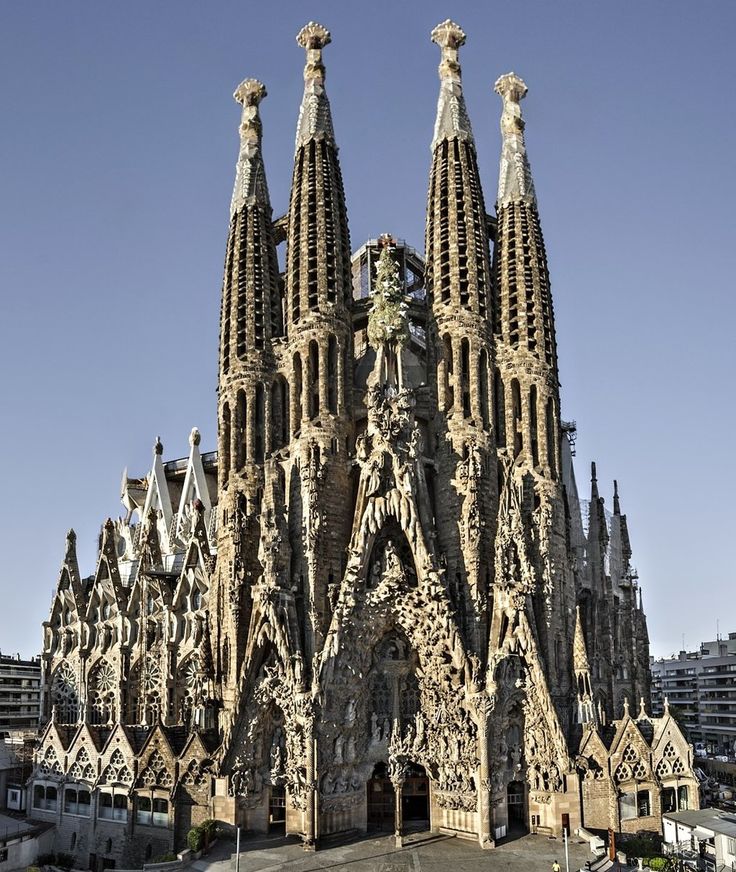
The construction of the Sagrada Familia is thought to have started in August 1882 and was handed over to the enigmatic young Architect, Antoni Gaudi at the end of 1883, he was just 31 years old.
Antoni Gaudi completely changed the architecture, the building soon started to take on the unique style he was world-renowned for. He knew it would take many years to finish and he worked tirelessly on the project up until his death in 1926.
The Sagrada Familia was intended to be a universal masterpiece embracing all symbols of Christianity. It is an expiatory temple, a place to commemorate the repatriation of sins made against God or the laws of the church.
All works on this enormously complicated project is financed by donations made by visitors, which explains its slow progress. It is due for completion in 2026. A symbolic date as it celebrates 100 years since the death of Gaudi.
The Project
Gaudi was a highly religious person who incorporated his faith throughout the Sagrada Familia.
His plans though have been used to inspire the further construction of the other naves, facades and towers.
Naves
The interior of the Basilica has five naves which are large spaces used by visitors to sit during mass or when watching performances.
The main nave rises high above the others and connected by a transept.
It is one of the largest church buildings in the world at around 90 metres long. The five naves are connected to the transept which are 60 metres long and 45 metres wide.
The construction of the naves started in 1897 using models created by Antoni Gaudi.
Towers of the Sagrada Familia
The outside facades are bound by four impressive towers with four bell towers that represent the 12 apostles.
There are four main bell towers connected by bridges and each decorated with magnificent pinnacles.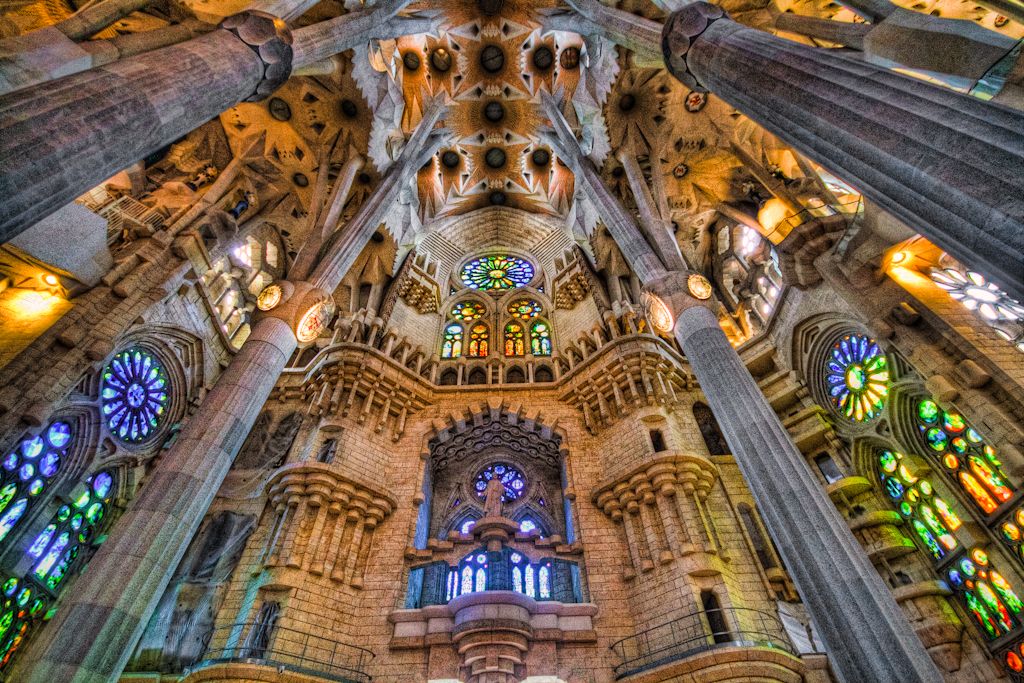
A total of 18 towers are planned will be dedicated to Joseph, Mary and Jesus, St. Andrew, St. Peter, St. Paul and Jacques d’Alpheus.
The Facades
The exterior has three facades, each one depicting a moment in the life of Jesus Christ, they are the Nativity, Passion and Glory facades
» Nativity Facade
The nativity façade is located on the northeast side and was built first in the Catalan modernist style.
The facade has three gates with sculptures of the virtues, Faith, Hope and Charity.
The three entrances of this façade are separated by two columns which have displayed a tortoise at the base. The middle and largest gate of the Nativity facade is decorated with the three Kings and Joseph and Mary with baby Jesus on the pillar.
» The Passion Facade
Using drawings made by Gaudi, construction on the Passion façade commenced in 1954 and was completed in 1976.
The façade is dedicated passion of Christ, simplistic in its design with lots of bare stone.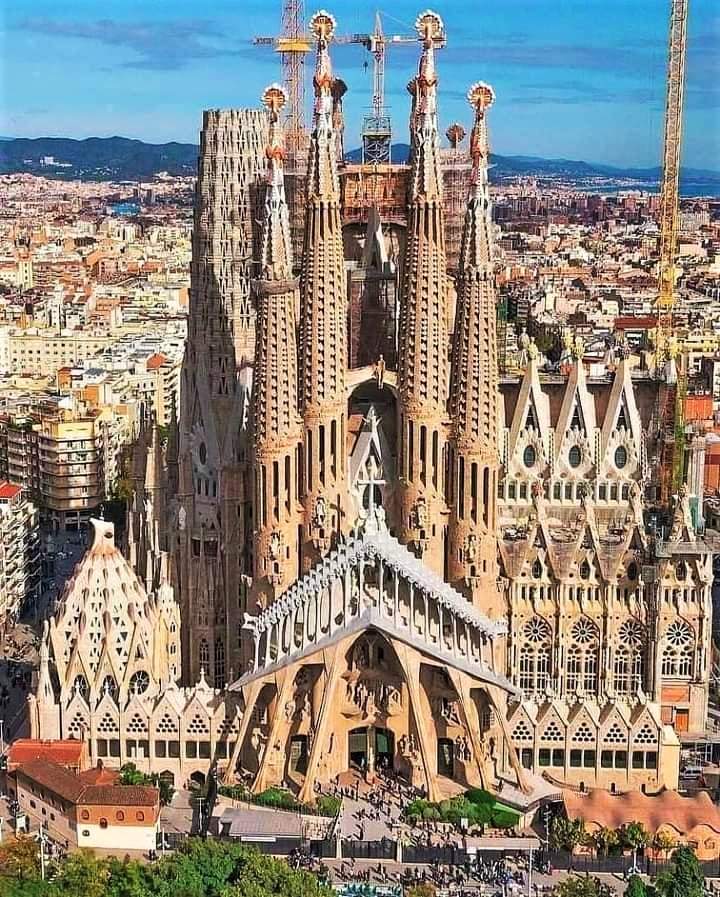
It was Gaudi’s desire to impose extravagance and fear with his design. Hence there are no extruding motifs, it was to create a dark effect and give an idea of the cruelty of sacrifice.
» The Glory Facade
The glory façade is the largest and most important of the three facades as this is where access if gained to the Basilicas central nave.
Work on the glory facade only started in 2002 and is dedicated to the heavenly glory of Jesus which represents his rise to heaven.
Sagrada Familia (Sagrada Família) – Barcelona, Spain
Sagrada Familia (full name: Expiatory Sagrada Familia , cat. Temple Expiatori de la Sagrada Família), sometimes in Russian inaccurately called Cathedral of the Holy Families is a church in Barcelona, in the Eixample district, built on private donations since 1882, the famous project of Antoni Gaudí. One of the most famous long-term construction projects in the world.
The first project was developed by the architect Francisco del Villar (Cat.
November 7, 2010 the temple was consecrated by Pope Benedict XVI and was officially declared ready for daily worship. On the same day, he awarded the temple the title of Small Papal Basilica (lat. Basilica minor).
History of construction
1882-1926
The idea of creating an expiatory church dedicated to the Holy Family originated in 1874 and, thanks to generous donations, in 1881 a plot of land was purchased in the Eixample district, which at that time was located a few kilometers from cities. The first stone in the foundation of the new temple was laid on 19March 1882, and this day is considered the date of commencement of construction.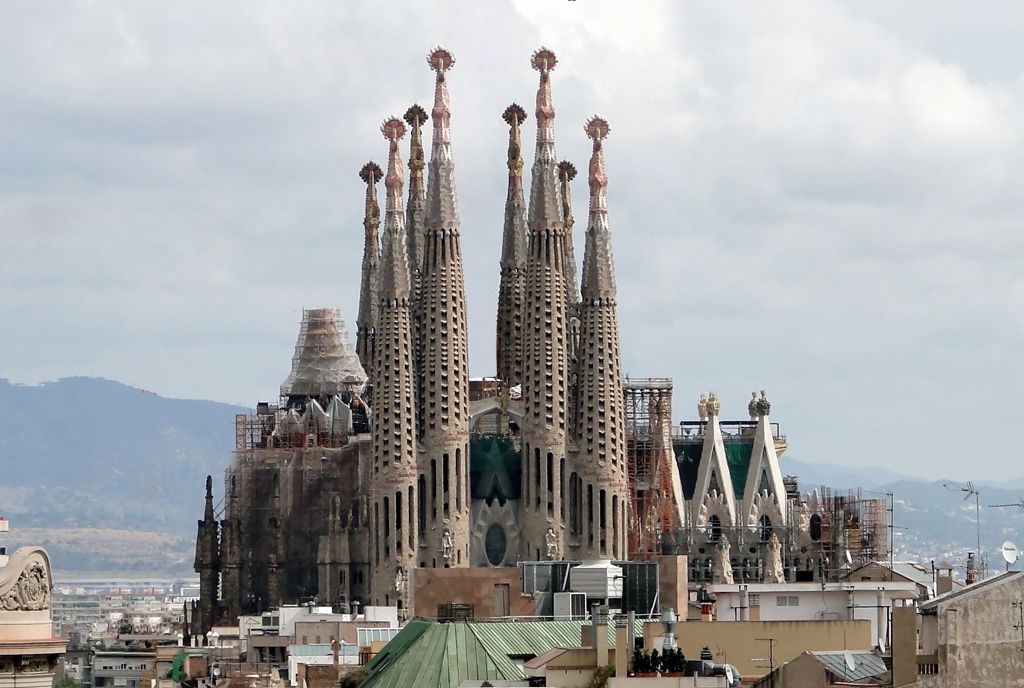
Between 1883 and 1889, Gaudí completed the crypt begun by his predecessor. A higher vault was erected over the previously created del Villar building, which allowed the windows to be opened to the outside. The vault is adorned with an amazingly beautiful keystone with a relief on the theme of the Annunciation, and the crypt itself is surrounded by a shallow moat that protects the walls from dampness and improves access to daylight.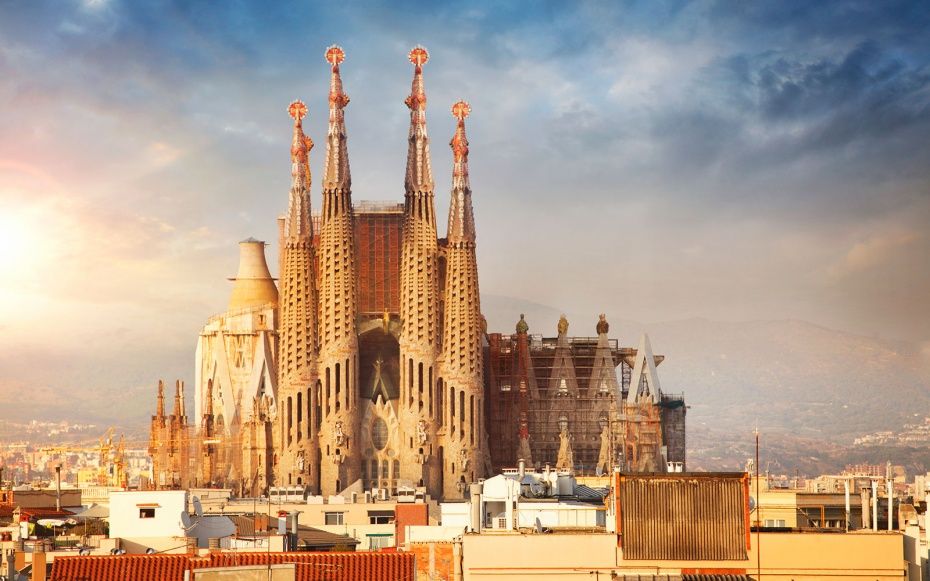
The construction of the neo-Gothic apse had already begun when, having received an unusually large anonymous donation, Gaudí decided to seriously alter the original project, retaining only the layout in the form of a Latin cross and completely changing the shape and structure of the building. In accordance with Gaudí’s project, the building was to be crowned with a multitude of monumental towers soaring upwards, and all elements of the decoration were to receive a deep symbolic meaning associated with the Gospel or church rites.
In 1892, the architect began work on the Nativity façade. He started with this facade, because he was afraid to scare away the inhabitants of the city by implementing the plan of the Passion facade, which frankly and harshly tells about the crucifixion of Christ. In 1895, work on the neo-Gothic apse was completed. One of its features are the decorative tops of the turrets and the gutters of the drainpipes, inspired by the local flora and fauna, lizards and snails, which could be found in abundance in the surroundings.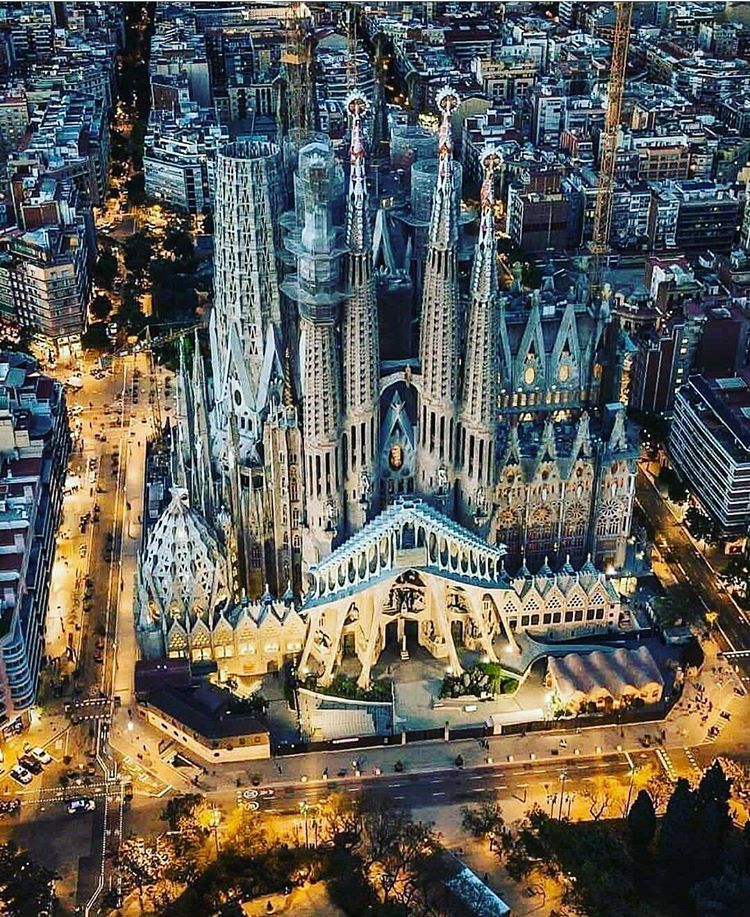
In 1909-1910, a temporary school building was built on the site of the future main facade. It was created by Gaudi for the children of builders and, as a temporary structure, did not have load-bearing walls. Despite its ephemeral nature, this school has a unique design. The strength of the building is achieved through the use of curved partitions and roofing, and the division of classrooms with weight-bearing partitions allows you to easily change the layout of the interior space.
In 1911, A. Gaudí designed the second façade, the Passion façade, although the final architectural solution for the naves and vaults appeared only in 1923, and the construction of this façade began after Gaudí’s death. The creation of sketches of the third facade – the facade of Glory – also dates from the beginning of the 10s of the 20th century.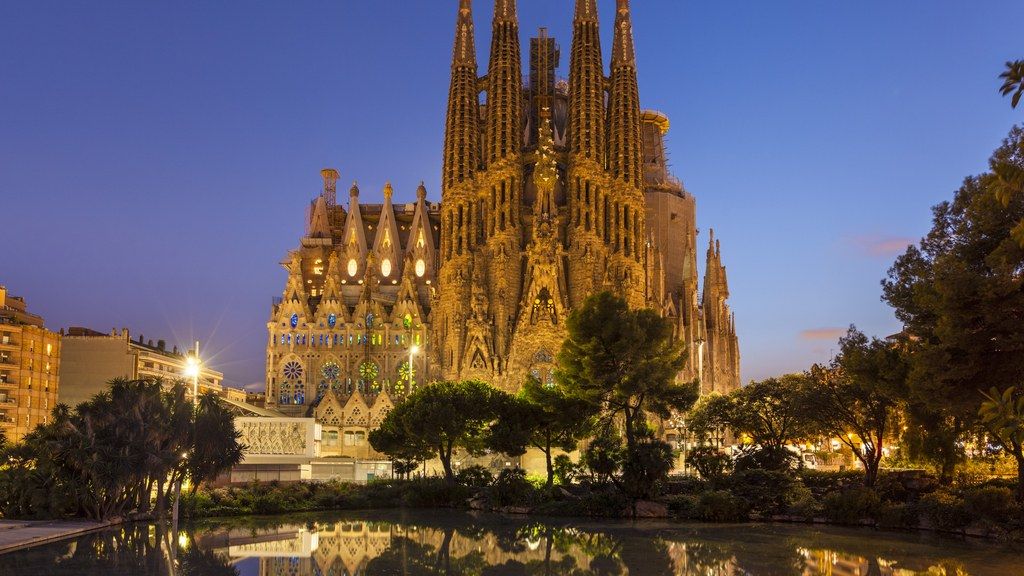
On November 30, 1925, the 100-meter bell tower of the Nativity facade dedicated to St. Barnabas was completed. It turned out to be the only bell tower completed during the lifetime of the architect, who devoted more than forty years of his life to the construction of the Temple.
After 1926
After Gaudí’s death, the management of the work was taken over by his closest associate Domènec Sugrañes i Gras, who had worked with Gaudí since 1902 and helped in the construction of the Sagrada Familia and many other famous buildings (for example, houses of Batlló and houses of Mila).
In 1954, the construction of the Passion façade began. The work was based on developments and surveys carried out by Gaudi in the period from 1892 to 1917. After the completion of the crypt in 1961, a museum was opened in it, dedicated to the historical, technical, artistic and symbolic aspects of the project.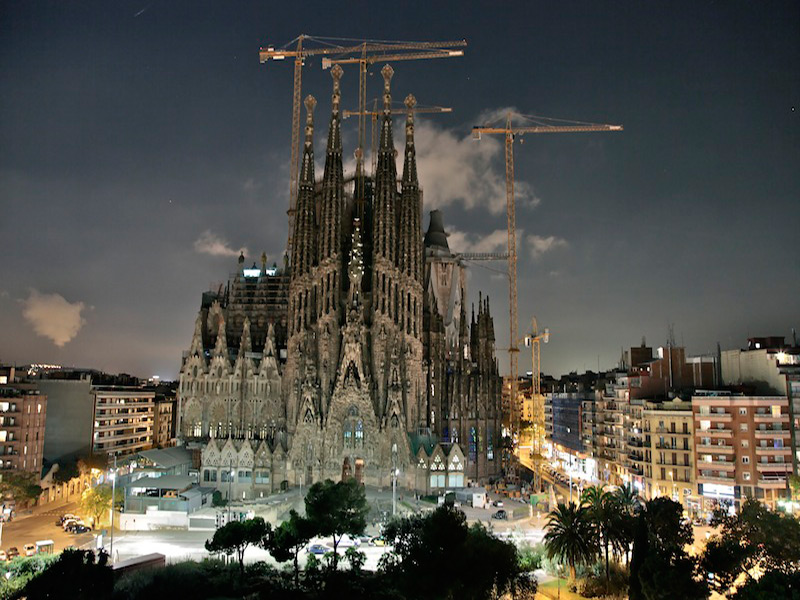
Between 1978 and 2000, the main nave and transepts, as well as their vaults and facades, were built. In the first decade of the 21st century, the vaults of the gallery were completed, and by 2010 a crossroads and an apse should appear. Two towers will be erected on them: a 170-meter tower of the central lantern, crowned with a cross, and an apse tower dedicated to the Virgin Mary. According to the plan, this part of the building should contain four more towers in honor of the Evangelists. The expected completion of all construction work is 2026, when the creation of the Glory facade, which began in 2000, should also be completed. The Finnish company Outokumpu takes part in the supply of steel structures for the completion of construction.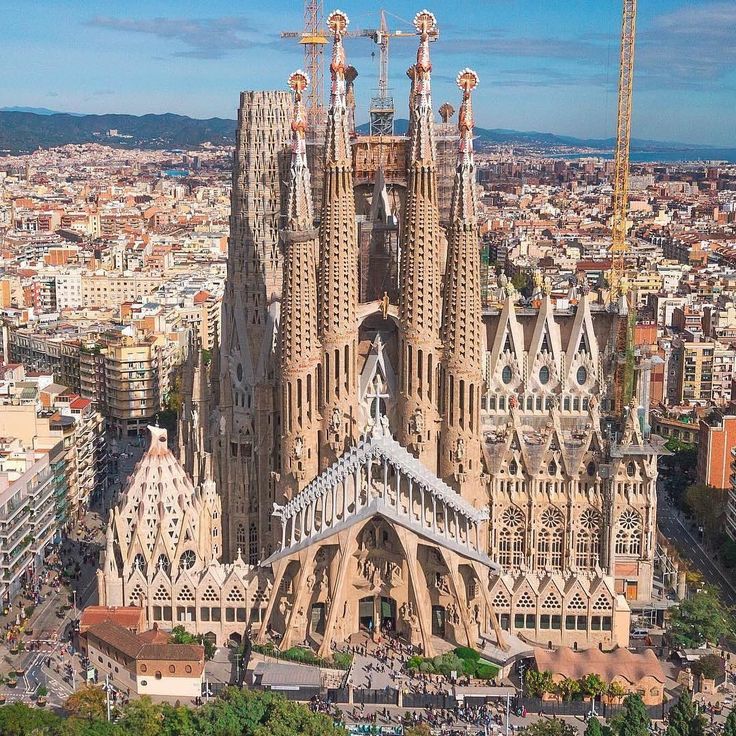
Architecture of the Temple
External device
The illustration shows the mutual position of the main elements of the Sagrada Familia. This five-nave church is planned in the form of a Latin cross formed by the intersection of the main nave with a three-aisled transept. The unusually large apse, under which the crypt is located, includes seven chapels and a bypass gallery behind the choir. The cloister surrounding the building will have to connect all the facades of the church: southern facade of the Passion of Christ , the east facade of Glory and the north facade of the Nativity . The structure will be crowned with eighteen towers. Twelve of them, four on each facade (in the illustration, all the towers are shown in white circles), from 98 to 112 meters high, will be dedicated to the twelve apostles. Four 120-meter towers above the crossroads in honor of the Evangelists will surround the central 170-meter tower of Jesus, and a slightly smaller bell tower of the Virgin Mary will be located above the apse.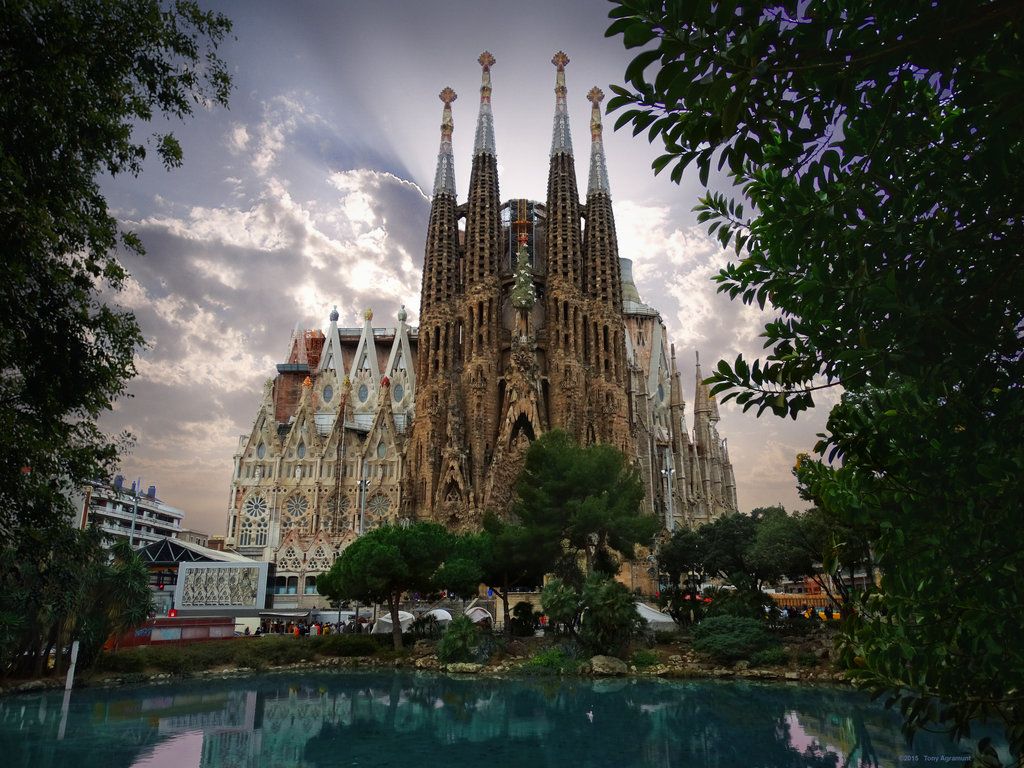
The façade of the Nativity, most of which was created during Gaudí’s lifetime, is formed by three portals glorifying the Christian virtues – Faith, Hope and Mercy. The portals are decorated with realistic sculptures dedicated to the earthly life of Christ. So, above the left portal of Hope, scenes of the betrothal of Mary and Joseph, flight to Egypt and beating of babies are presented, and its top symbolically depicts Mount Montserrat with the inscription “ Save us “. The right portal of Vera contains the sculptural paintings “Meeting Elizabeth with the Mother of God”, “Jesus and the Pharisees”, “Entrance into the Temple” and “Jesus Working in the Carpenter’s Workshop”.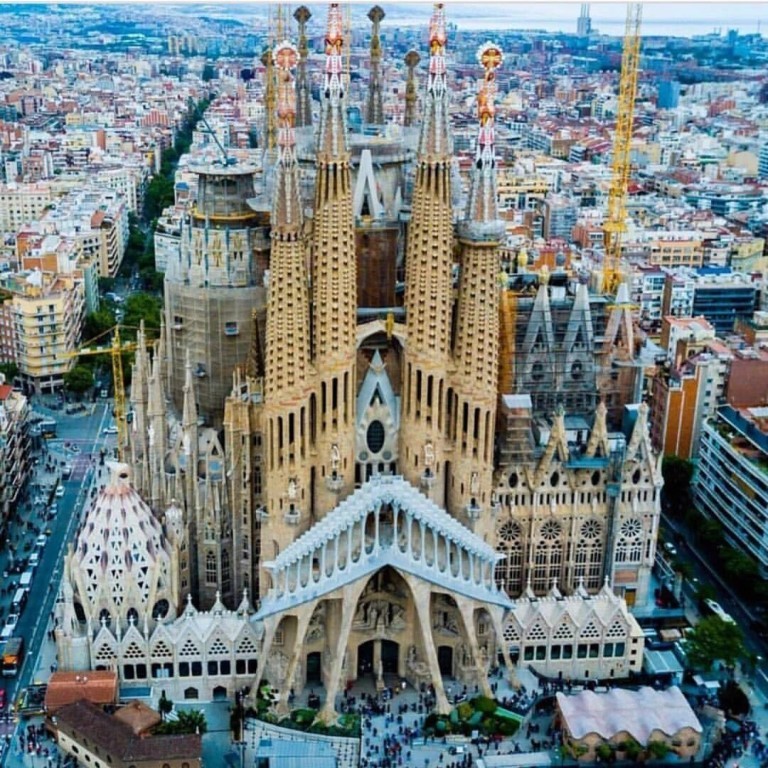
The spindly shape of the bell towers, reminiscent of sandcastles, is determined by the structure of the spiral staircases inside. Each tower is dedicated to its own apostle, whose statues are placed at the points where the shape of the towers changes from square to round. In the upper part of the towers, Gaudí intended to place tubular bells, the ringing of which would be combined with the sound of five organs and the voices of 1,500 chanters, located, according to the architect, on both sides of the longitudinal naves and on the inside of the Glory facade. On each bell tower, from top to bottom, there is the motto “Glory to the Almighty” (“Hosanna Excelsis”), above which rise polychrome spiers, decorated with a stylized image of the symbols of episcopal dignity – the Ring, Mithra, Wand and Cross.
Liturgy texts are widely used in decoration, the main gate of the Passion Facade is decorated with quotations from the Bible in several languages, including Catalan. The facade of Glory is supposed to be decorated with the words of the Apostolic Creed.
Interior arrangement
Knowing that the temple would not be completed during his lifetime, Gaudí planned many of the interior details. The desire to avoid straight lines, together with the desire to simplify the design, led to the principle decision to use geometric figures with a ruled surface, such as hyperboloid, hyperbolic paraboloid, helicoid and conoid. All these surfaces can be obtained by moving a straight line, therefore their intersection is a straight line, which greatly facilitates the articulation of various parts of the structure. The design uses another geometric figure – an ellipsoid.
Geometric shapes appeared in the project after about 1914. The master’s earlier experiments with the form of columns and other interior details do not yet contain the above-mentioned strict geometric surfaces, but indicate the architect’s desire to find certain spatial solutions known to him alone.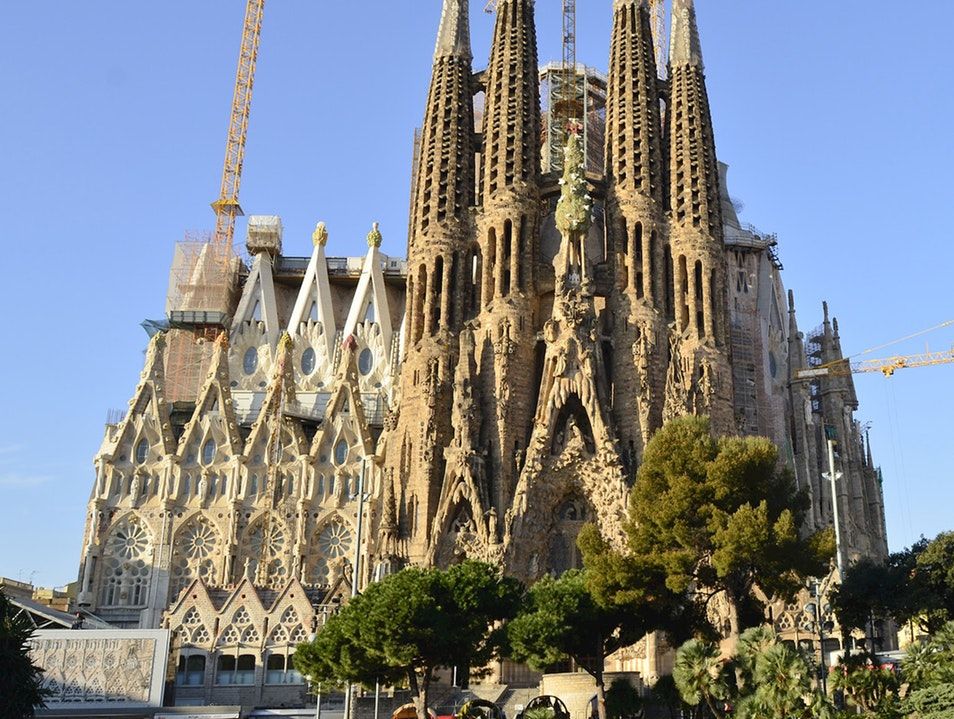
Everything in the interior is subject to strict geometric laws. Round and elliptical windows and stained-glass windows, hyperbolic vaults, helicoidal staircases, numerous stars that appear at the intersection of various ruled surfaces and ellipsoids decorating the columns – this is an incomplete list of the geometric details of the Temple’s decoration.
The main load-bearing element in the construction of the main volume of the church are the columns that distribute the weight of the towers and vaults. Depending on the magnitude of the load, the columns differ in section thickness and height. The sections of the base of the columns have the shape of stars with a different number of vertices (from 4 to 12, which is determined by the load on the column) with a slight parabolic rounding of the rays on the inner and outer diameters.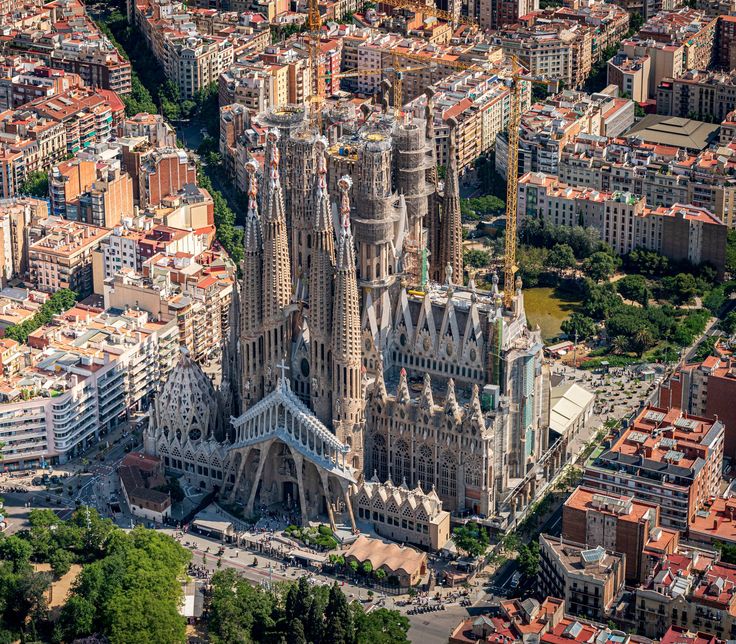
Images of interior elements
Interesting facts
- The unusual appearance of the temple made it one of the main attractions of Barcelona. According to the newspaper El Periódico de Catalunya , in 2006 the construction was visited by 2.26 million people, which puts the object on a par with the Prado Museum and the Alhambra Palace in popularity.
- Started and continued solely on private donations, construction is being carried out on a site that does not belong to the Church and is not supervised by the episcopate.
As a result, sometimes observed in Russian-language texts and oral practice, the naming of the church Sagrada Familia cathedral is erroneous. It should be remembered that the main diocesan church of Barcelona remains the Cathedral of St. Eulalia (“La Seu”) in the Old City, and not the church Sagrada Familia.
- In 2008, a group of more than 400 Spanish cultural figures called for a halt to the construction of the temple. In their opinion, the creation of the great architect was the victim of a careless, inept restoration for the sake of the tourism industry.
- Completion of the construction is hampered by the difficulty of manufacturing stone blocks that form the eccentric forms of the structure. According to the computer model, each of them requires individual processing and fitting.
- According to the Spanish government, the temple will be fully completed no earlier than 2026.
- On November 7, 2010, Pope Benedict XVI consecrated the Sagrada Familia, as it was deemed fit for church services.
Not Found (#404)
Not Found (#404)
Whoops…something went wrong!
Sorry, we did not find the page you are looking for
Tours
Hotels
Railway tickets
Route
Countries and cities
Egypt
Türkiye
UAE
From
Date there
date back
From
Countries
AbkhaziaAustriaAzerbaijanAsiaAlbaniaAlgeriaNorthAmericaSouthAmericaAngolaAndorraAntarcticaAntarcticaAntigua and BarbudaArgentinaArmeniaArubaAfghanistanAfricaBahamasBangladeshBarbadosBahrainBelarusBelizeBelgiumBeninBermudaBulgariaBoliviaBosnia and HerzegovinaBootswanniBurkijaBrazil tanVanuatuVatican CityUnited KingdomHungaryVenezuelaVietnamGabonHawaiiHaitiGuyanaGambiaGhanaGuadelupeGuatemalaGuineaGuinea BissauGermanyHondurasHongKongGrenadaGreeceDenmarkDjiboutiDominicaDominicaEuropeEurope BeneluxEurope ScandinaviaIndonesiaIndoniaIraqibiaZambia IrelandIcelandSpainSpain – Canary IslandsItalyYemenCape VerdeKazakhstanCayman IslandsCambodiaCameroonCanadaCaribbean IslandsQatarKenyaCyprusKyrgyzstanKiribatiChinaColombiaComorosCongoCongo-KinshasaCosta RicaIvory CoastCote d’IvoireWorld tripCrimeaCubaKuwaitLaosLatviaLesotoMichwanLiberiburgLithensteinLithuanian auritaniaMadagascarMacedoniaMalawiMalaysiaMaliMaldivesMaltaMoroccoMartiniqueMarshall IslandsMexicoMozambiqueMoldovaMongoliaMyanmarNamibiaNauruNepalNigerNigeriaNetherlandsNicaraguaNiueNew ZealandNew CaledoniaNorwayOAEOmanSaint HelenaPakistanPalauPanamaPapua Rguinea Reunion Russia Russia – Arctic Russia – Far East Russia – Golden Ring Russia – Caucasus Russia – Karelia Russia – Leningrad region Russia – Moscow Russia – Moscow region Russia – Baltic states Russia – Volga region Russia – St.

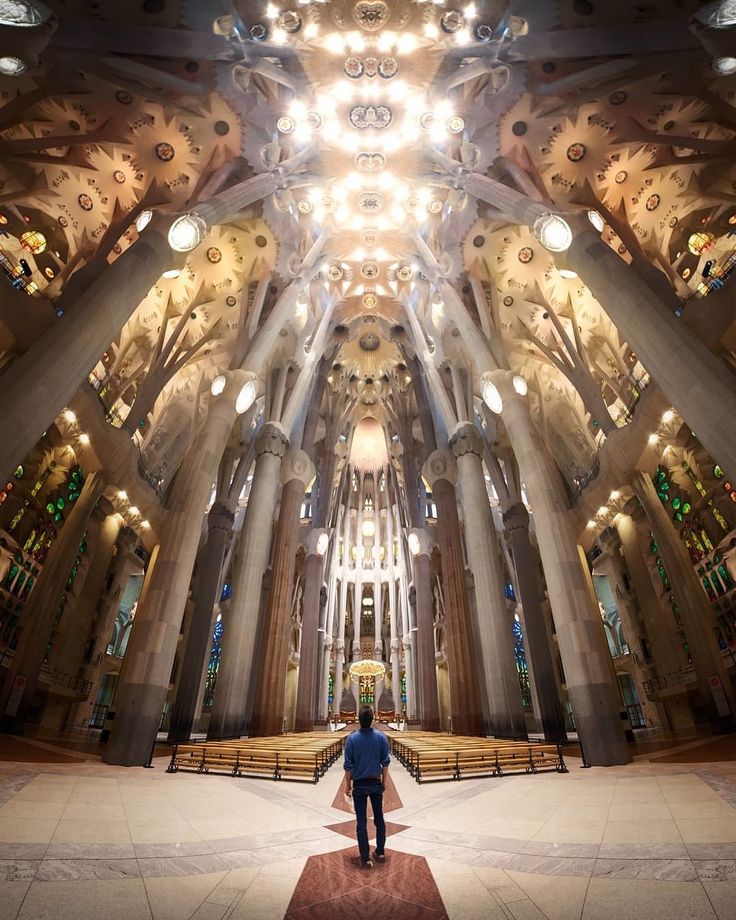
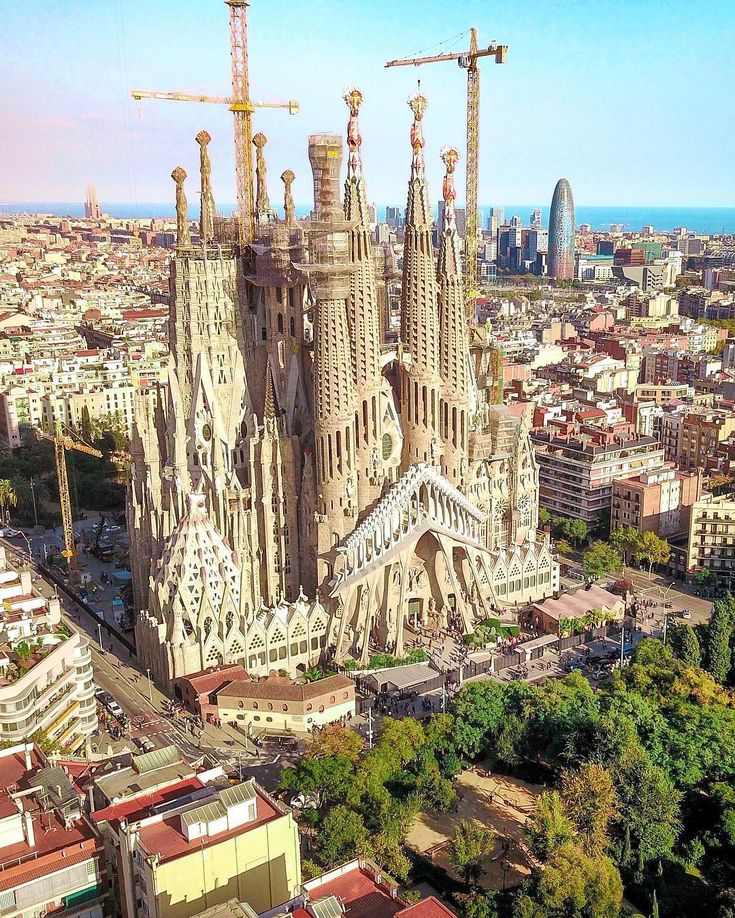
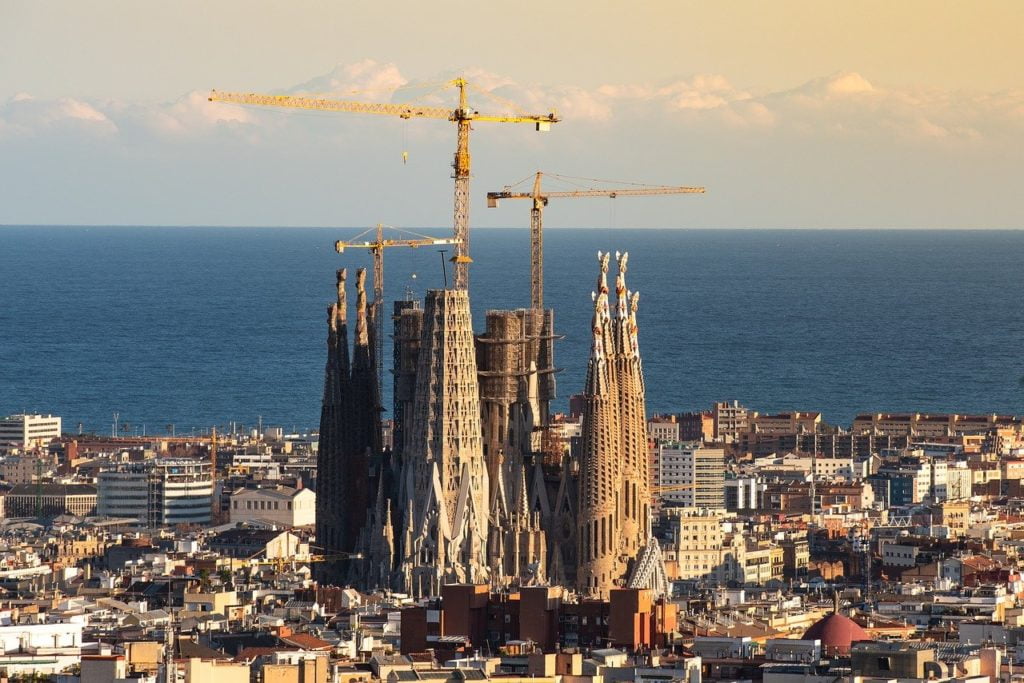 As a result, sometimes observed in Russian-language texts and oral practice, the naming of the church Sagrada Familia cathedral is erroneous. It should be remembered that the main diocesan church of Barcelona remains the Cathedral of St. Eulalia (“La Seu”) in the Old City, and not the church Sagrada Familia.
As a result, sometimes observed in Russian-language texts and oral practice, the naming of the church Sagrada Familia cathedral is erroneous. It should be remembered that the main diocesan church of Barcelona remains the Cathedral of St. Eulalia (“La Seu”) in the Old City, and not the church Sagrada Familia. 
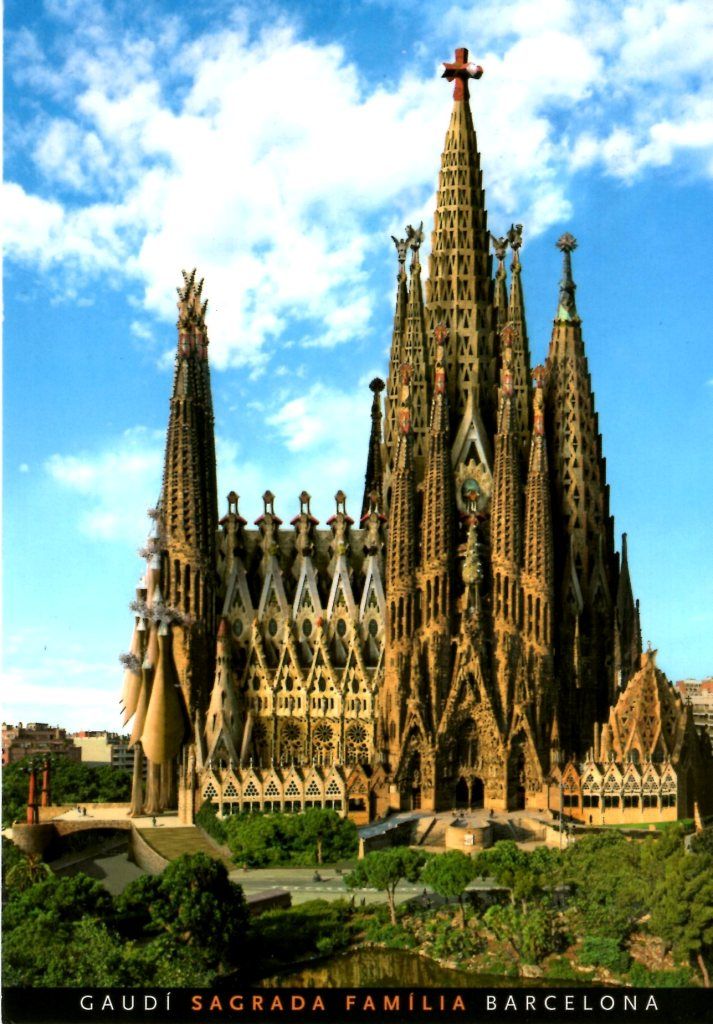

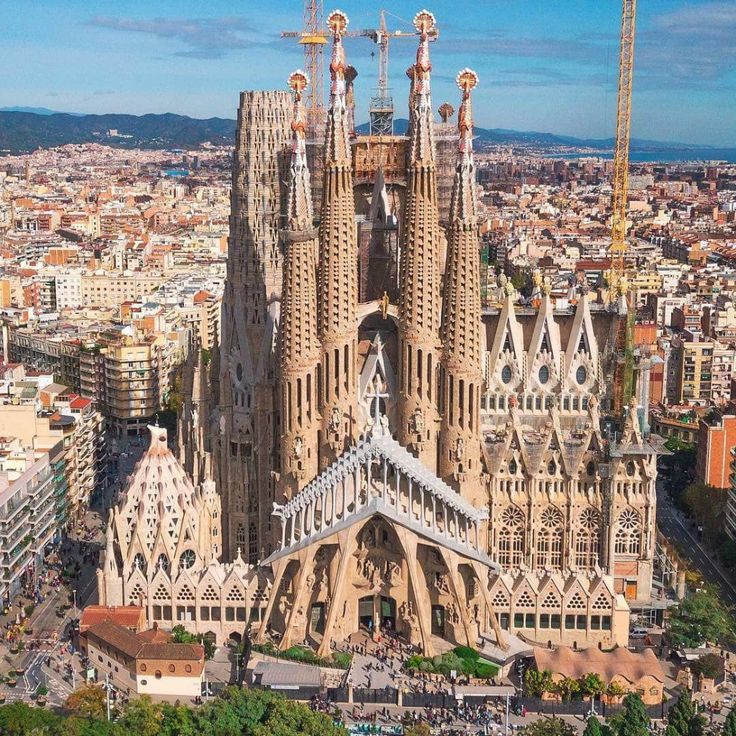 For the football club, see FC Barcelona. For other uses, see Barcelona (disambiguation).
For the football club, see FC Barcelona. For other uses, see Barcelona (disambiguation).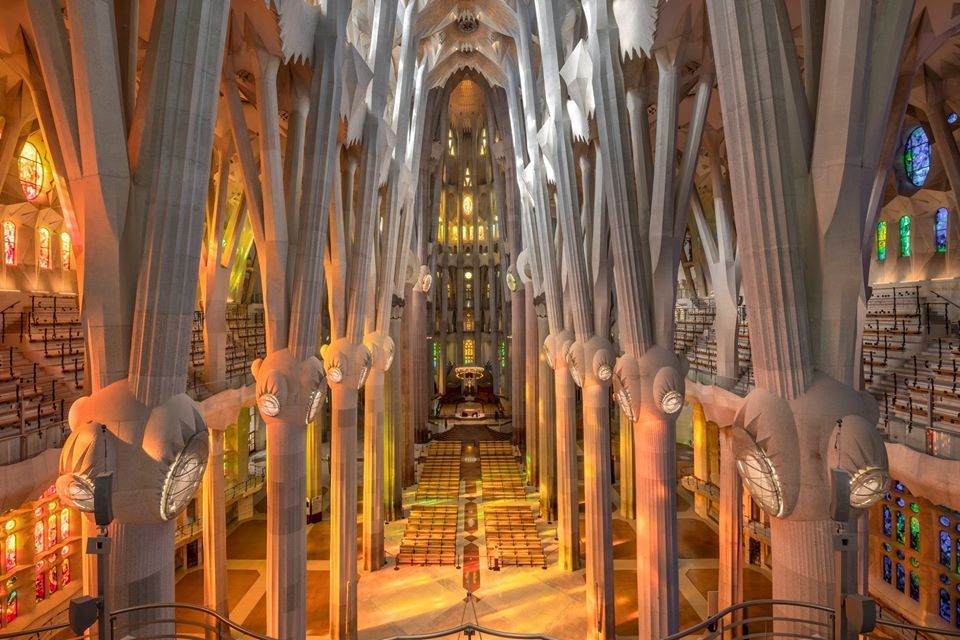
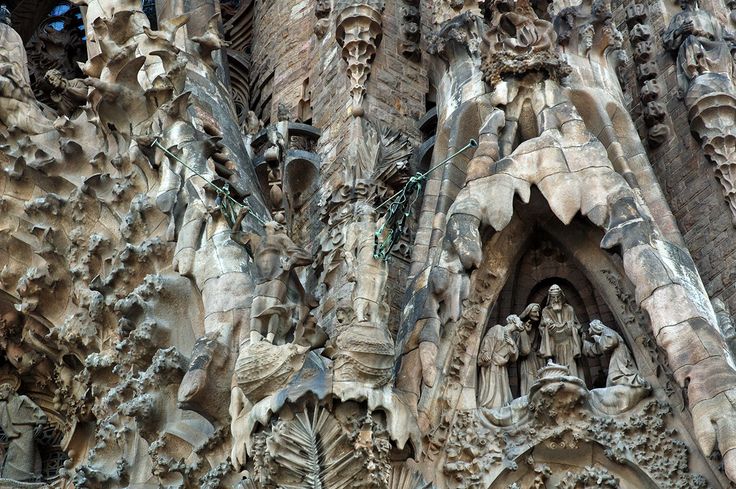
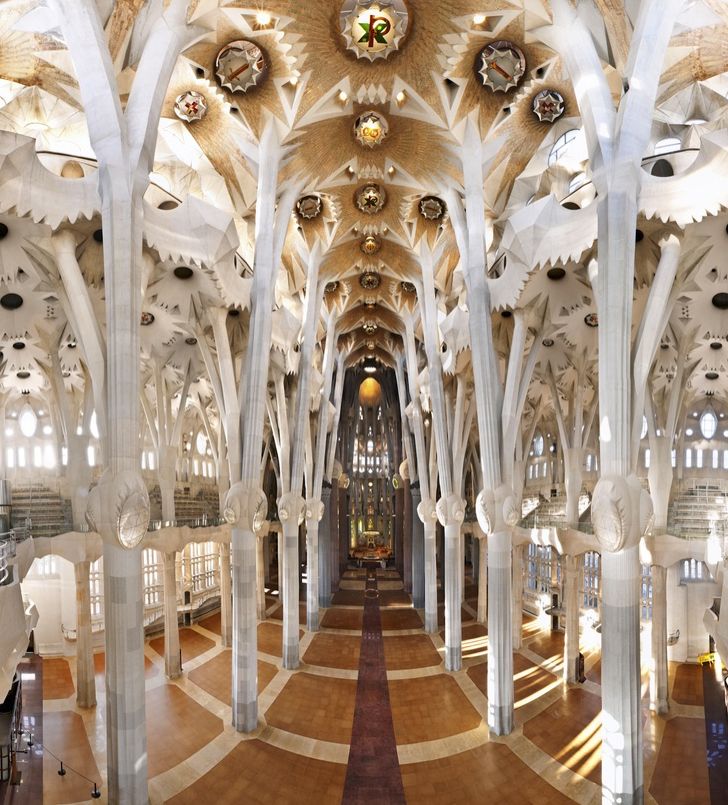
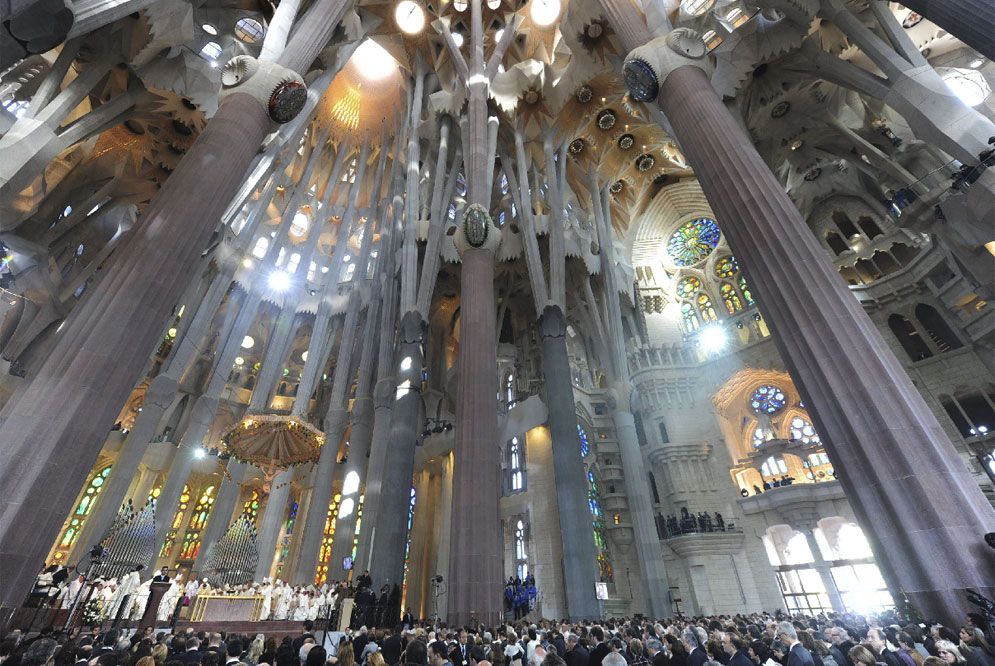 Generalitat of Catalonia. Archived from the original on 4 January 2017. Retrieved 13 November 2015.
Generalitat of Catalonia. Archived from the original on 4 January 2017. Retrieved 13 November 2015.
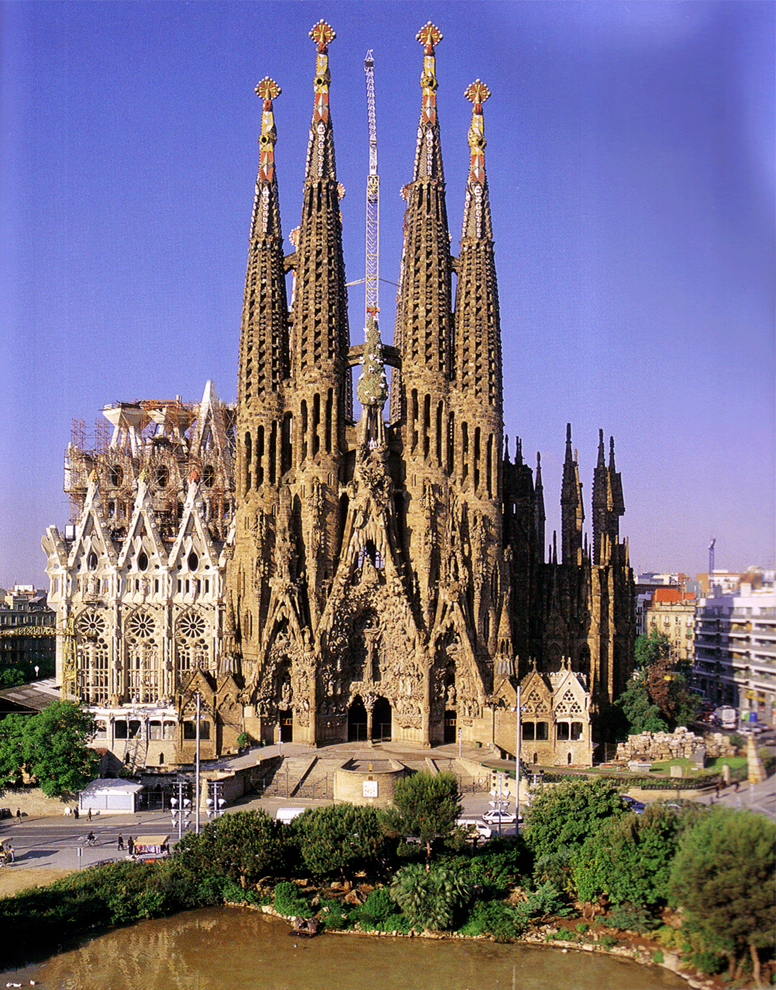 doi:10.6035/Millars.2019.47.2. ISSN 1132-9823. S2CID 213459824.
doi:10.6035/Millars.2019.47.2. ISSN 1132-9823. S2CID 213459824.
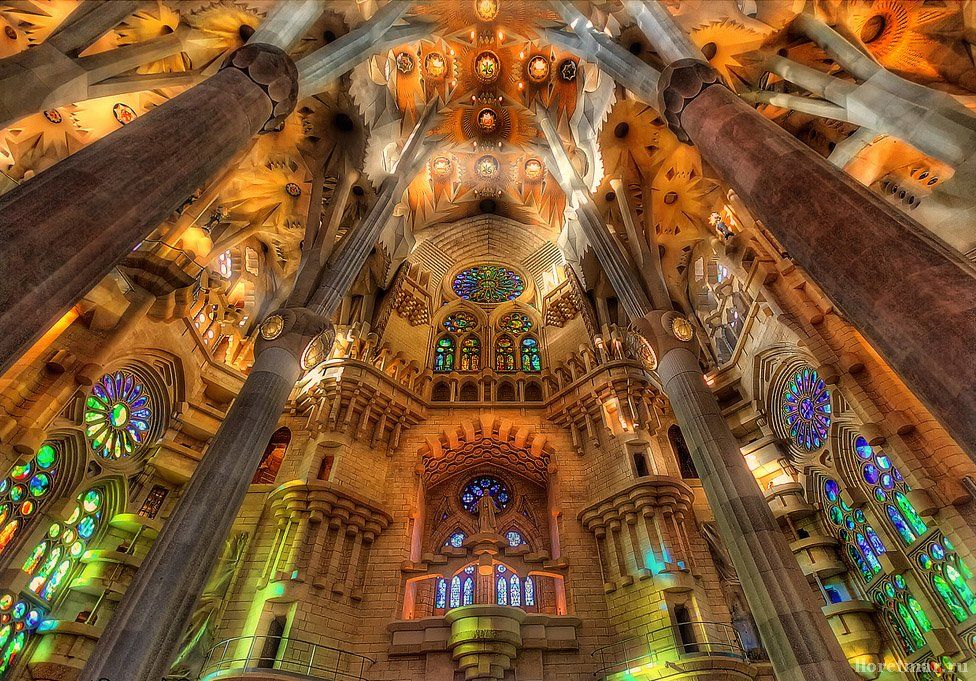 The modern architect Lozano completed the crypt of the cathedral in 1882.
The modern architect Lozano completed the crypt of the cathedral in 1882. 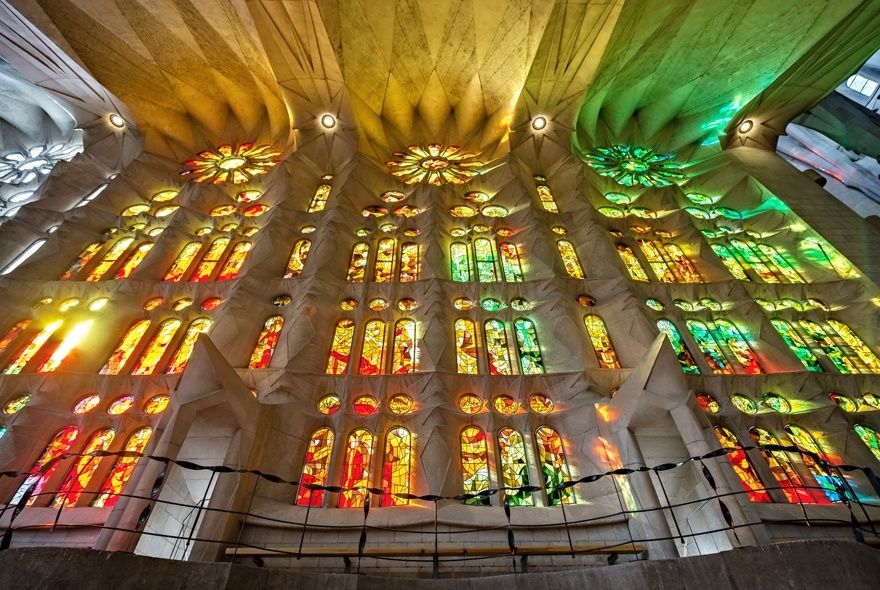 sagradafamilia.cat/sf-eng/docs_instit/vvirtual.php?vv=1&noMobile=1
sagradafamilia.cat/sf-eng/docs_instit/vvirtual.php?vv=1&noMobile=1 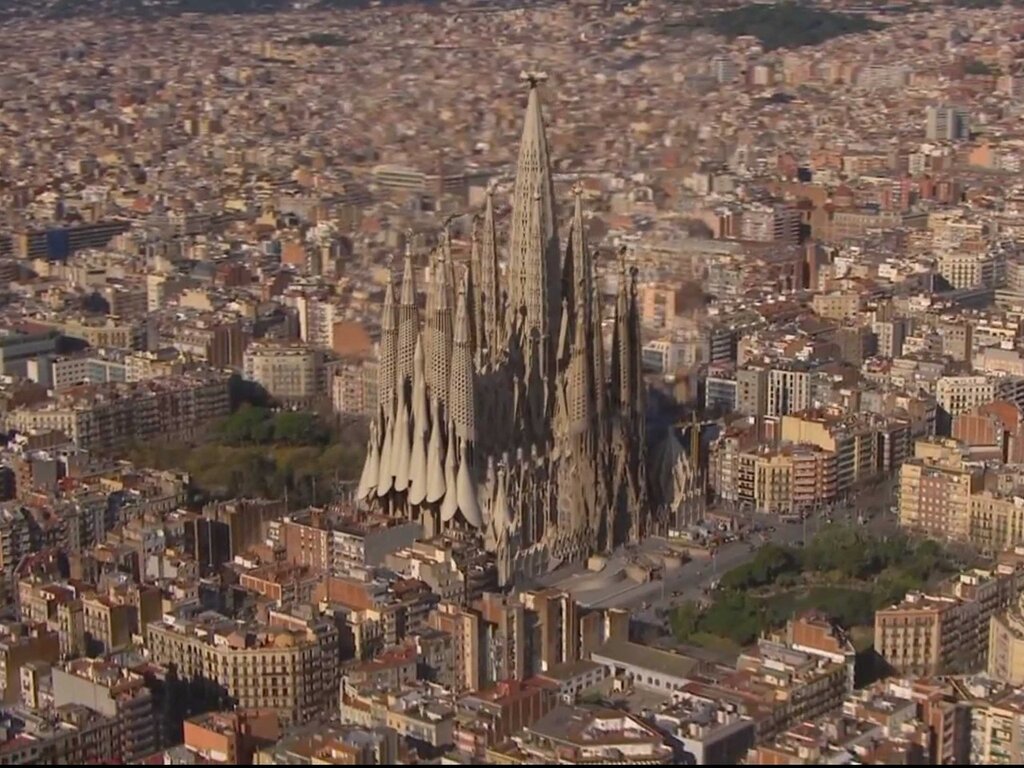 It is still under construction, now in its third century, and is considered one of the most outstanding buildings in Barcelona. It is located in the heart of the city of Barcelona and is surrounded by other buildings, but its spiers rise so high into the sky that they can be seen from almost anywhere in the Barcelona area. It is often described as a “iced cake” because of the intricate design of the beautiful and elaborate sculptures on the façade of the basilica. But inside it is just as beautiful and original.
It is still under construction, now in its third century, and is considered one of the most outstanding buildings in Barcelona. It is located in the heart of the city of Barcelona and is surrounded by other buildings, but its spiers rise so high into the sky that they can be seen from almost anywhere in the Barcelona area. It is often described as a “iced cake” because of the intricate design of the beautiful and elaborate sculptures on the façade of the basilica. But inside it is just as beautiful and original. 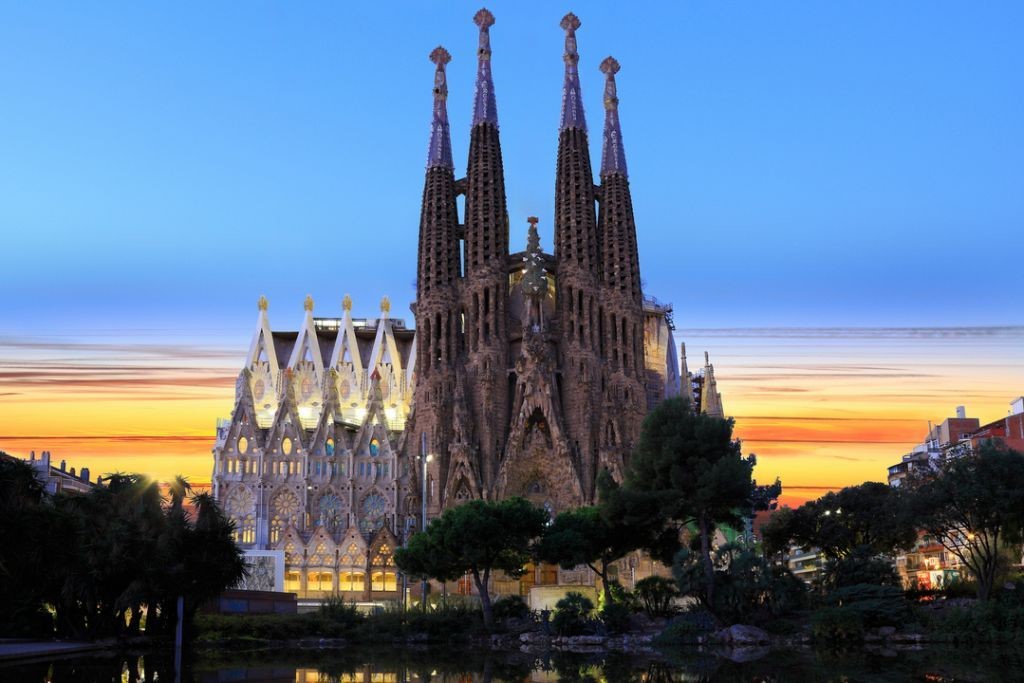 Bocabella made a pilgrimage to Rome to visit the Vatican and returned from his journey to build a church inspired by one in Loreto. He started a fundraiser in Barcelona to build a church. The construction of the church began in 1882 and will continue to this day.
Bocabella made a pilgrimage to Rome to visit the Vatican and returned from his journey to build a church inspired by one in Loreto. He started a fundraiser in Barcelona to build a church. The construction of the church began in 1882 and will continue to this day. 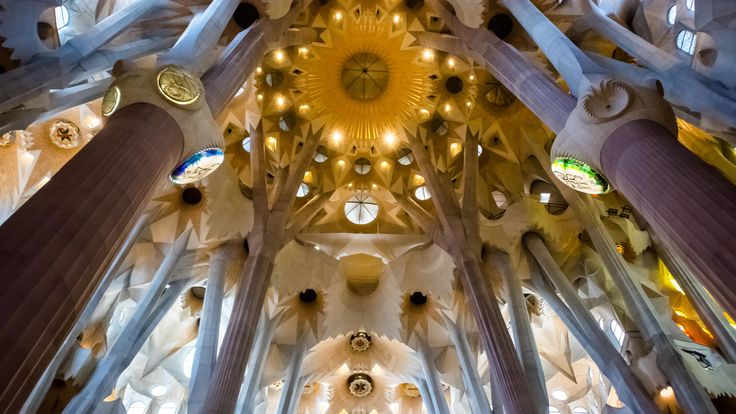 They continued to follow Gaudí’s plan and his model.
They continued to follow Gaudí’s plan and his model. 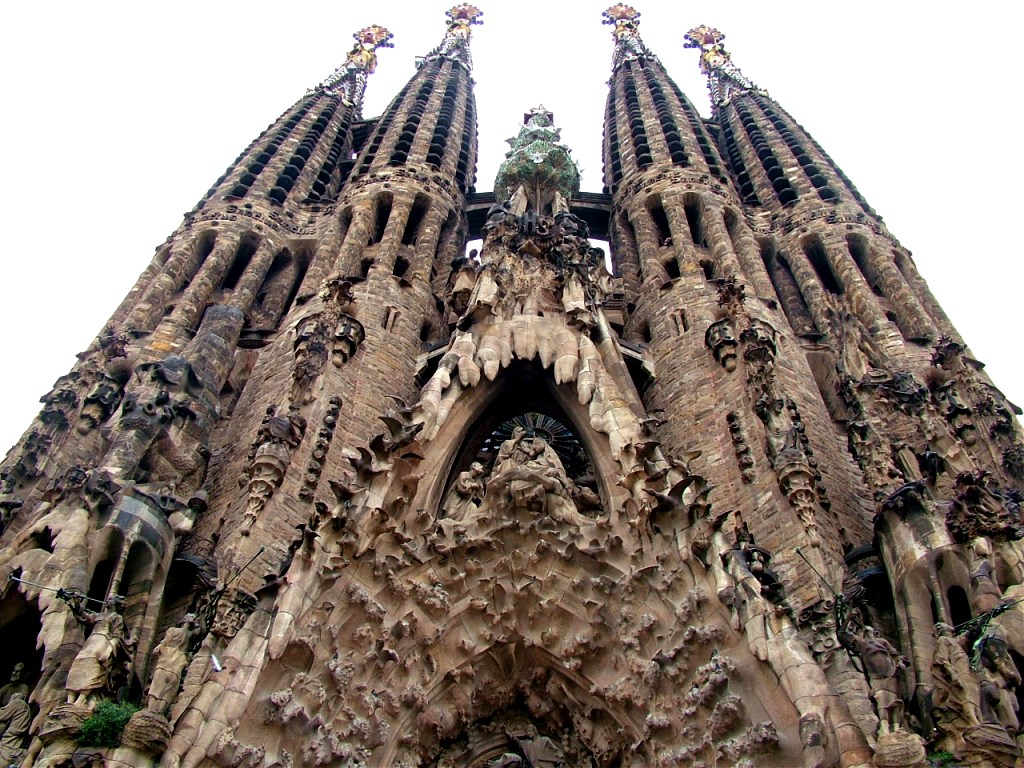
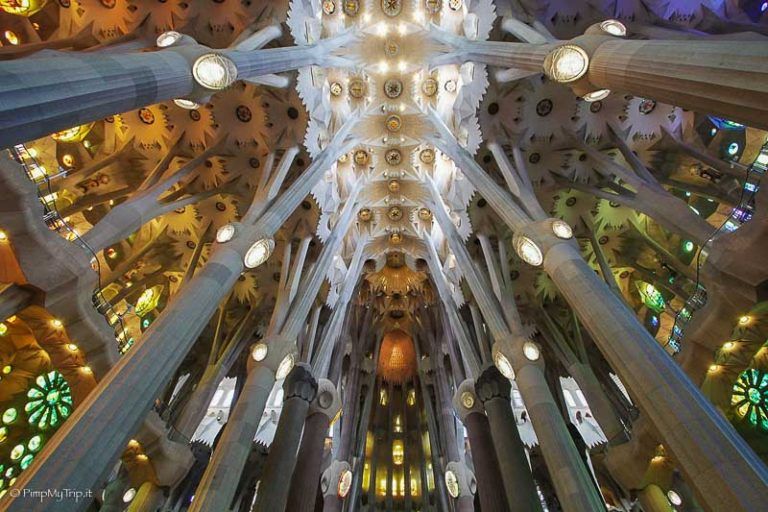 00. Guided Sagrada Familia tours start around EUR 50.00 per person.
00. Guided Sagrada Familia tours start around EUR 50.00 per person.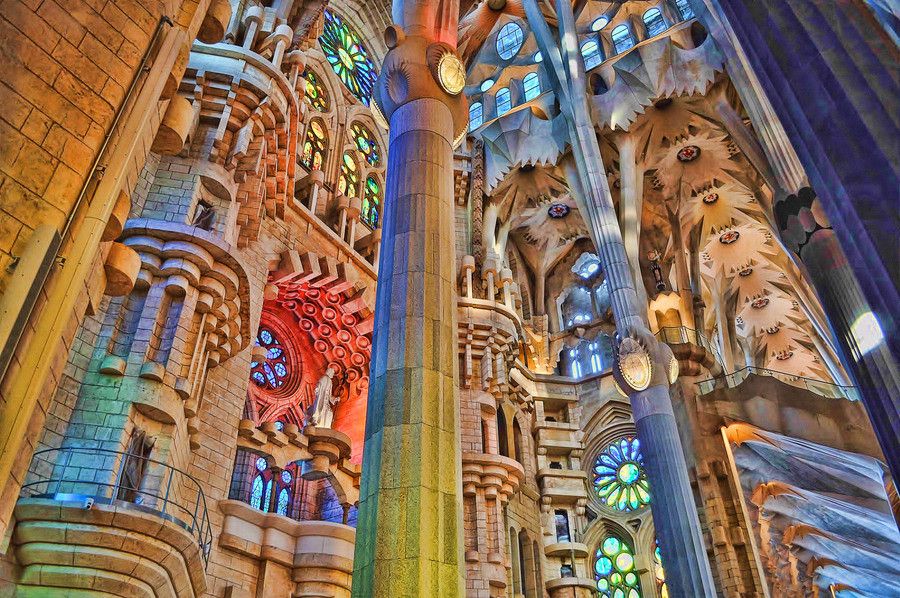 Mark’s Basilica (Basilica di San Marco)
Mark’s Basilica (Basilica di San Marco)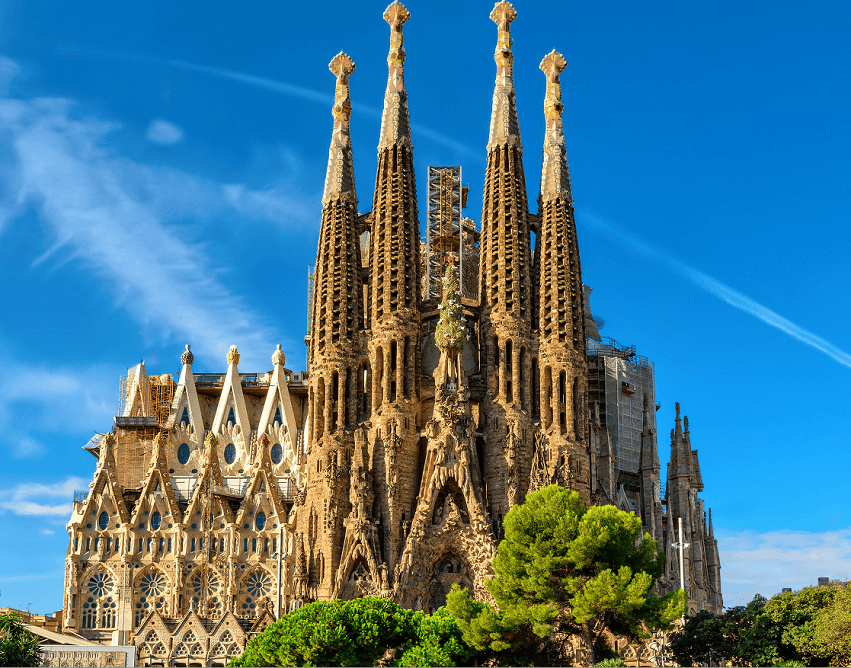 6/5
6/5 7/5
7/5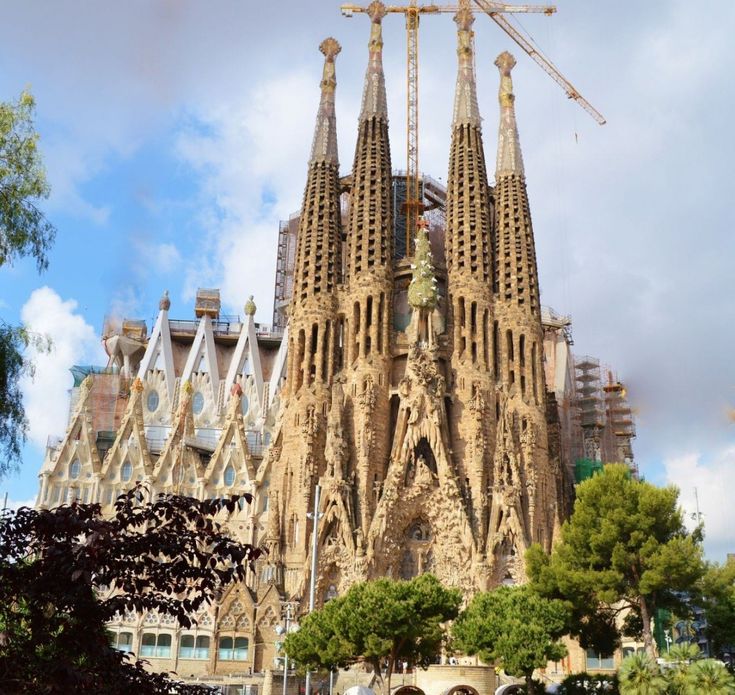 Then, return to Barcelona and explore the outside and inside of Antoni Gaudí’s spectacular La Sagrada Familia.
Then, return to Barcelona and explore the outside and inside of Antoni Gaudí’s spectacular La Sagrada Familia.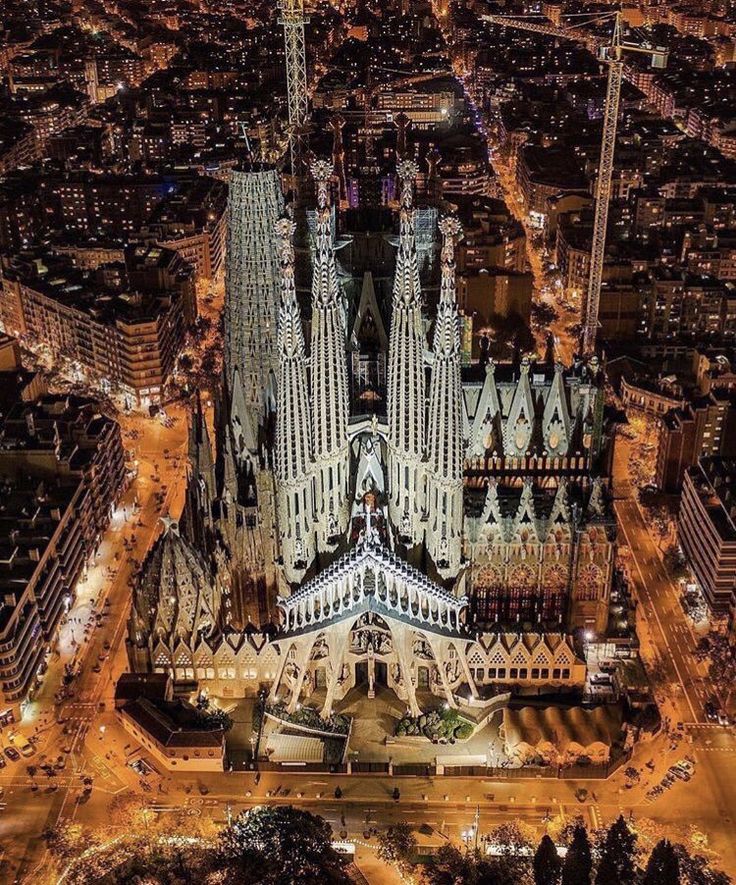 Check out the official Sagrada Família website. It is a great place to get these tickets online. Another alternative is travel agencies or reseller websites for discounts or any offers that may get you a better deal.
Check out the official Sagrada Família website. It is a great place to get these tickets online. Another alternative is travel agencies or reseller websites for discounts or any offers that may get you a better deal.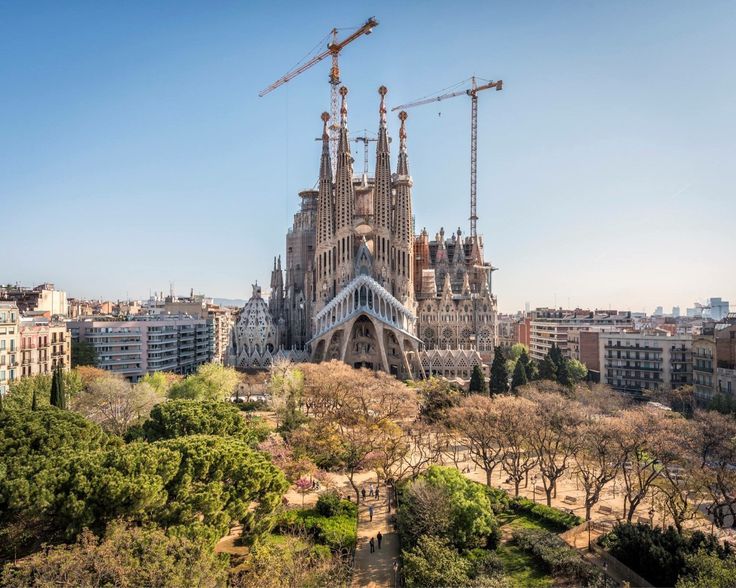 The entrance fee for seniors is €21 and free for children under the age of 11.
The entrance fee for seniors is €21 and free for children under the age of 11.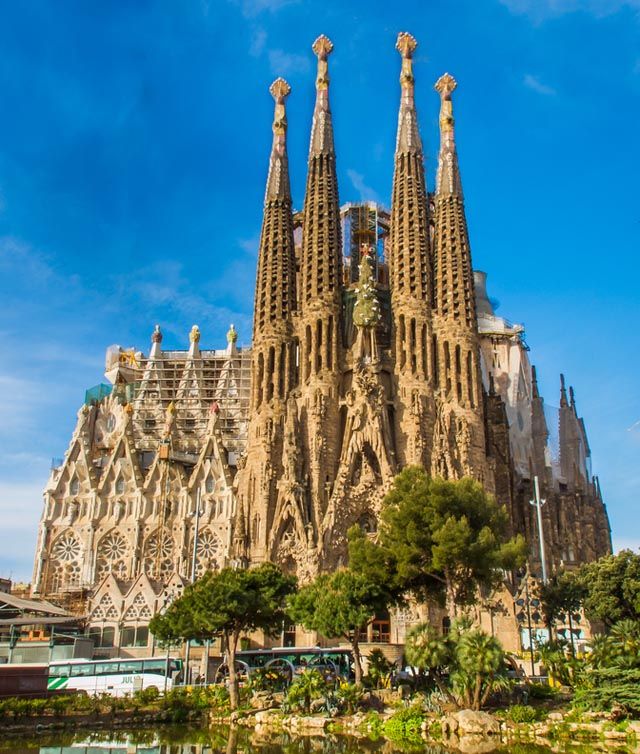
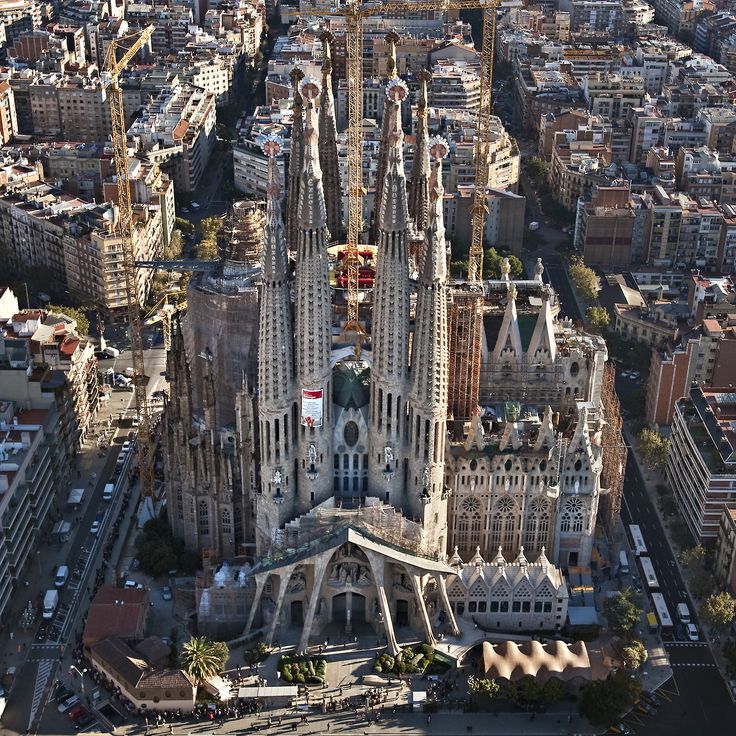
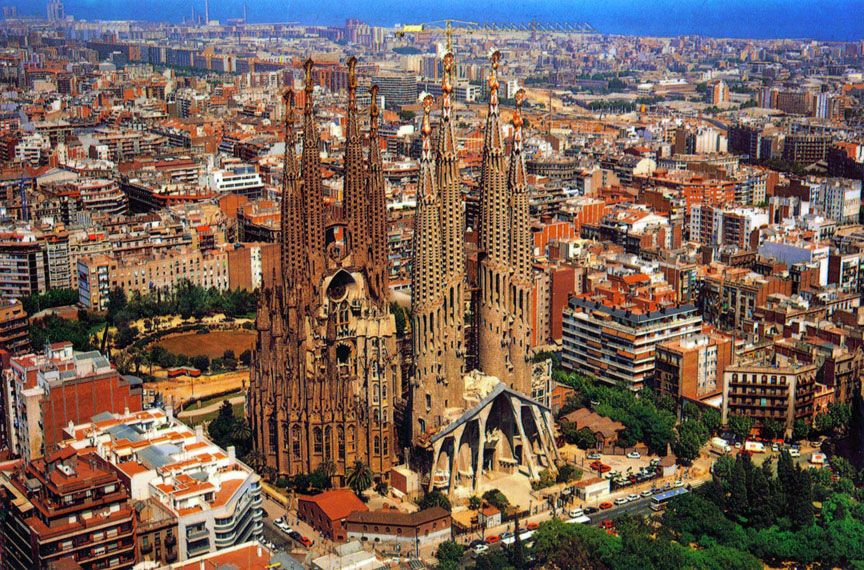 The tallest spire is dedicated to Jesus Christ and will be surmounted by a giant cross that will reach the height of 170 metres.
The tallest spire is dedicated to Jesus Christ and will be surmounted by a giant cross that will reach the height of 170 metres.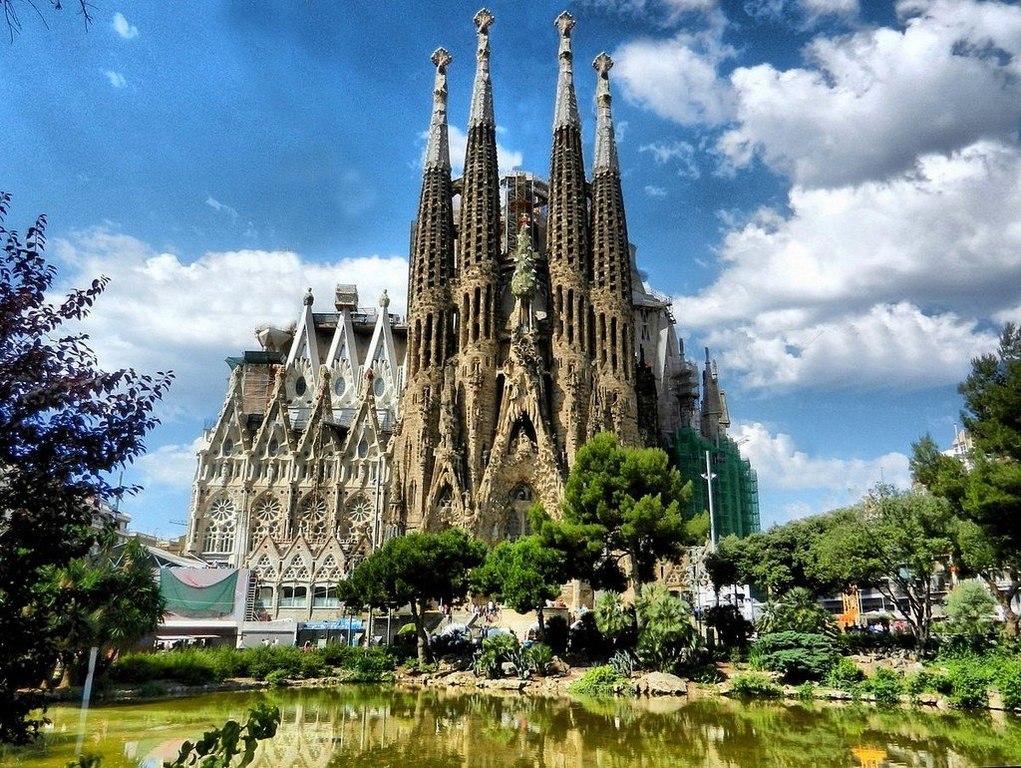 Its unique aspects are its gaunt, spare, Christ on the Cross, and tormented characters like emaciated figures of Christ being scourged at the pillar.
Its unique aspects are its gaunt, spare, Christ on the Cross, and tormented characters like emaciated figures of Christ being scourged at the pillar.
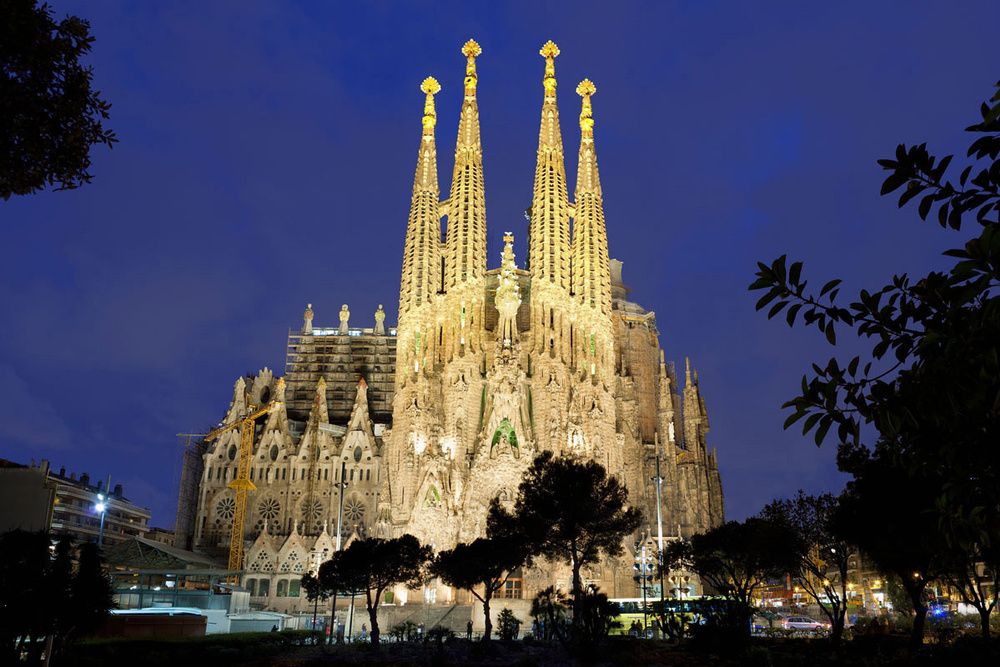
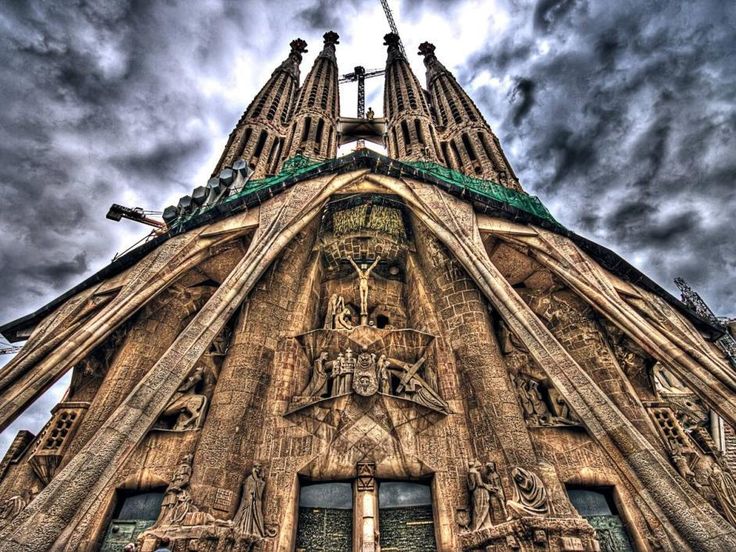
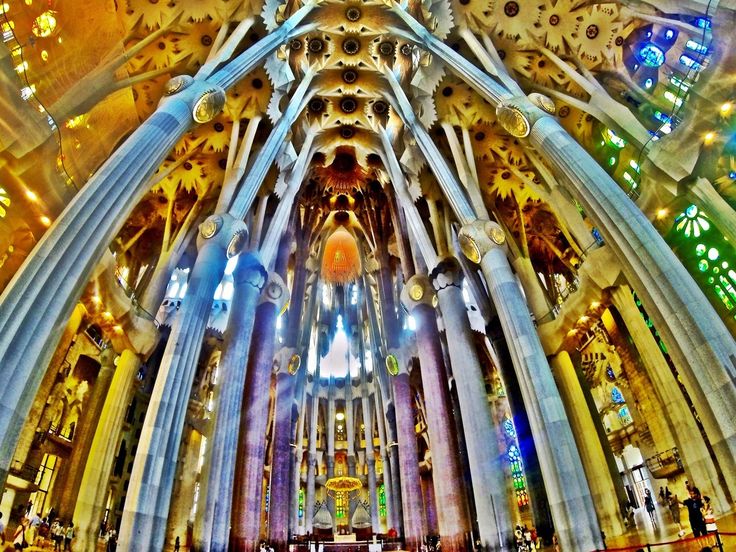
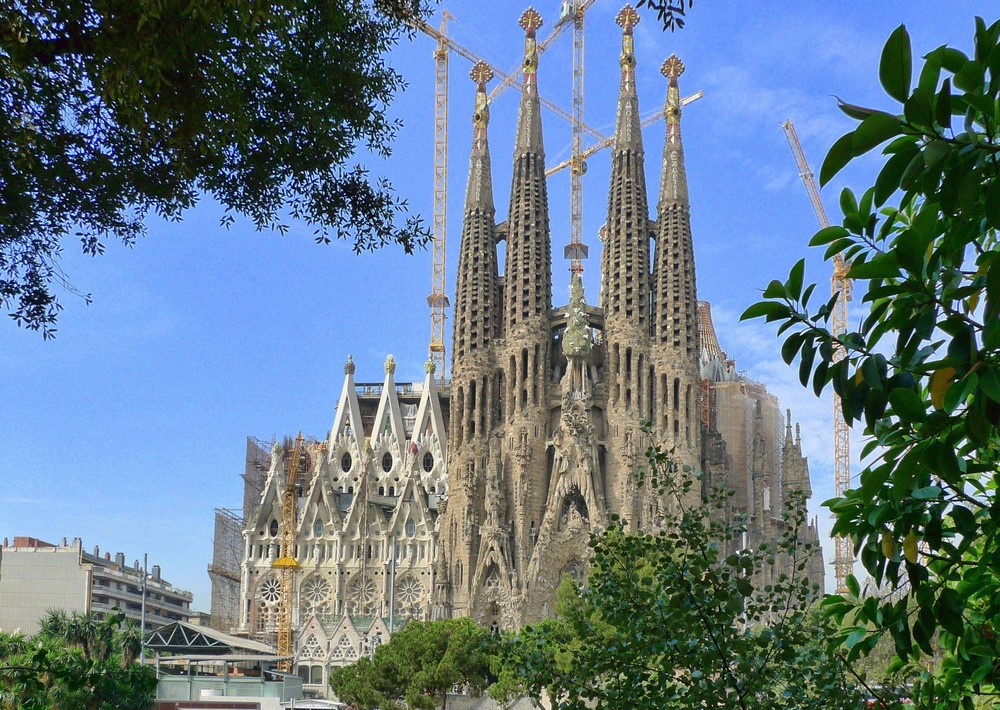 Fortunately, later some of the drawings were restored, and work continued.
Fortunately, later some of the drawings were restored, and work continued. 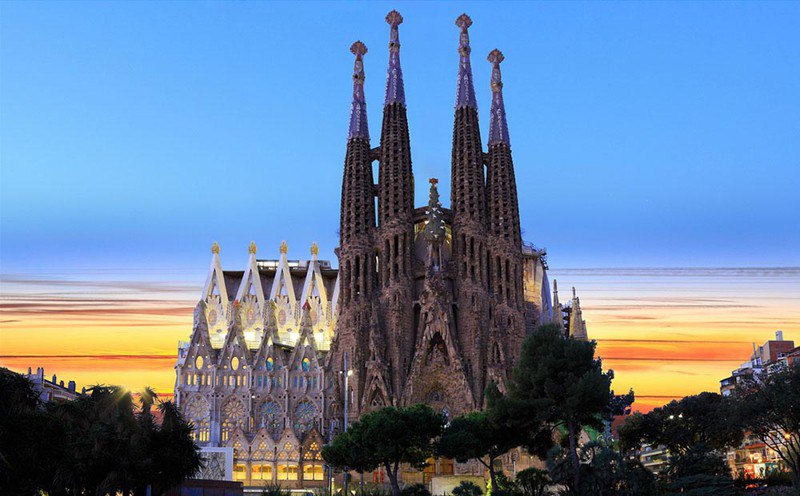

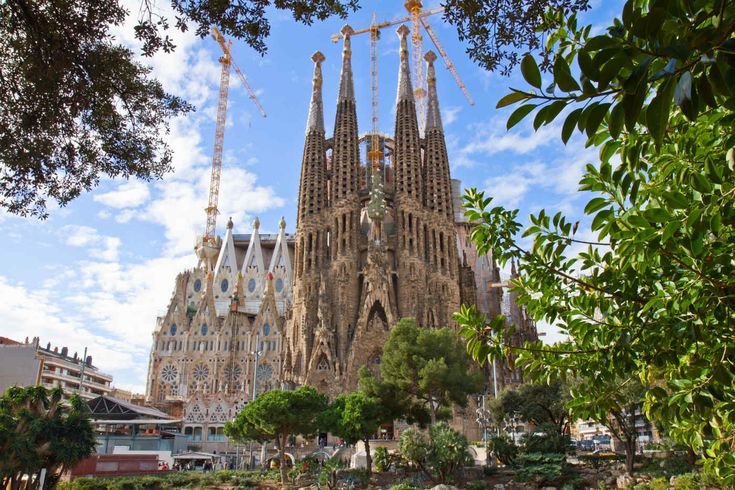 The peculiarity of this ticket is that it is valid only for 2 hours before the closing of the temple and does not include an audio guide.
The peculiarity of this ticket is that it is valid only for 2 hours before the closing of the temple and does not include an audio guide. 
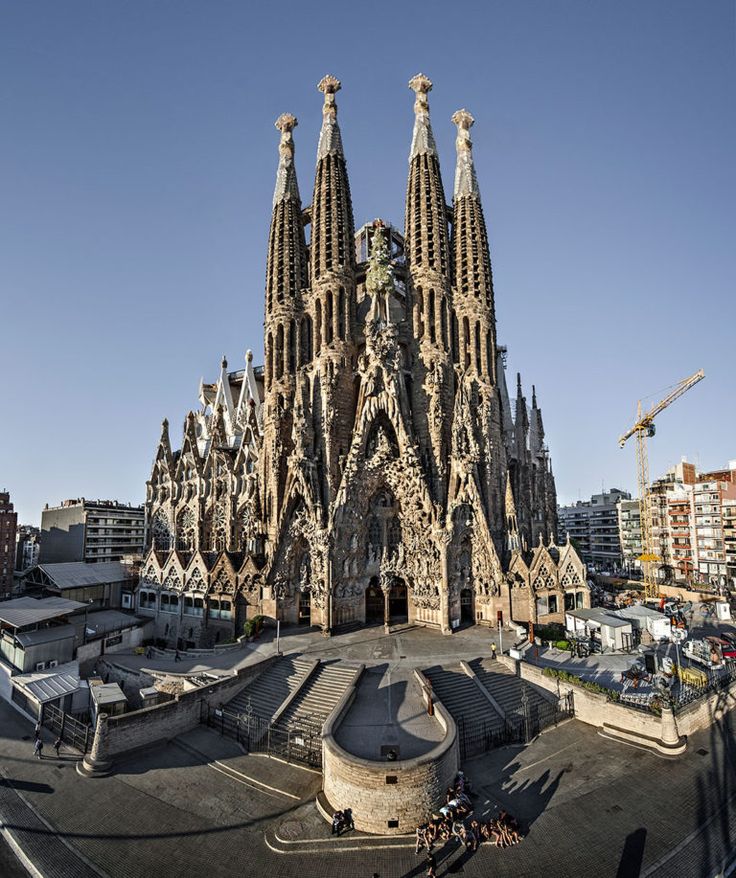 Since it was supposed to use the funds of the aforementioned community and donations from ordinary citizens for the construction of the temple, it was obviously supposed to lay a small budget for the construction. At one of the meetings of the Barcelona City Council, the famous architect and sculptor Francisco de Paula del Villar y Lozano offered to prepare a project for the future cathedral free of charge.
Since it was supposed to use the funds of the aforementioned community and donations from ordinary citizens for the construction of the temple, it was obviously supposed to lay a small budget for the construction. At one of the meetings of the Barcelona City Council, the famous architect and sculptor Francisco de Paula del Villar y Lozano offered to prepare a project for the future cathedral free of charge. 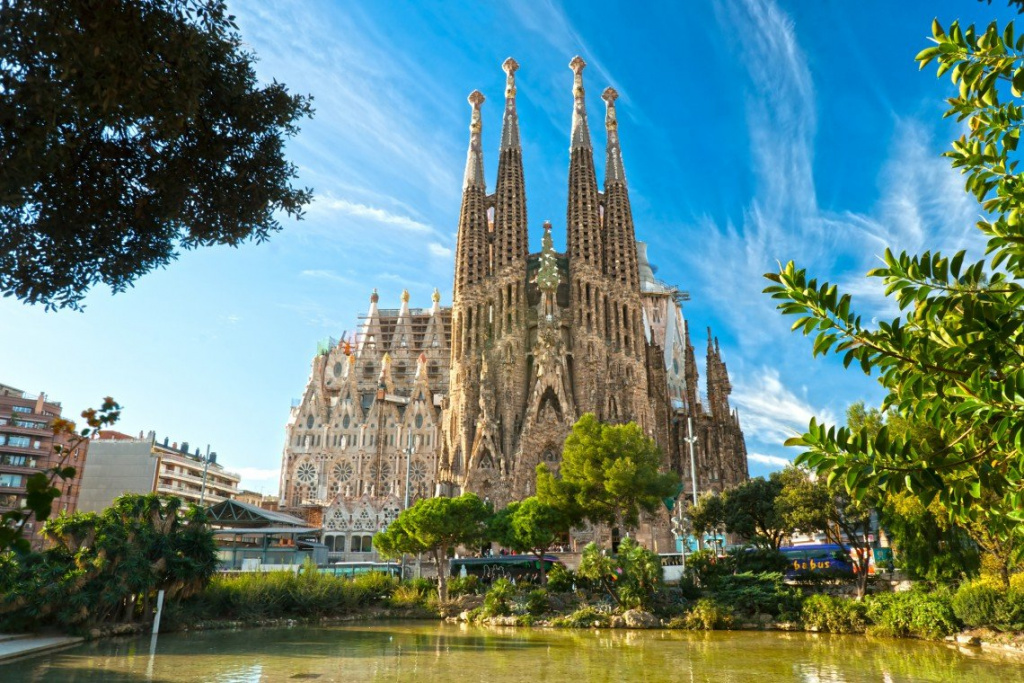 Although already in the summer of 1882 about fifty people were involved in the construction, the construction manager Villar finally quarreled with the church council because of a very banal and prosaic circumstance – financing the work.
Although already in the summer of 1882 about fifty people were involved in the construction, the construction manager Villar finally quarreled with the church council because of a very banal and prosaic circumstance – financing the work. 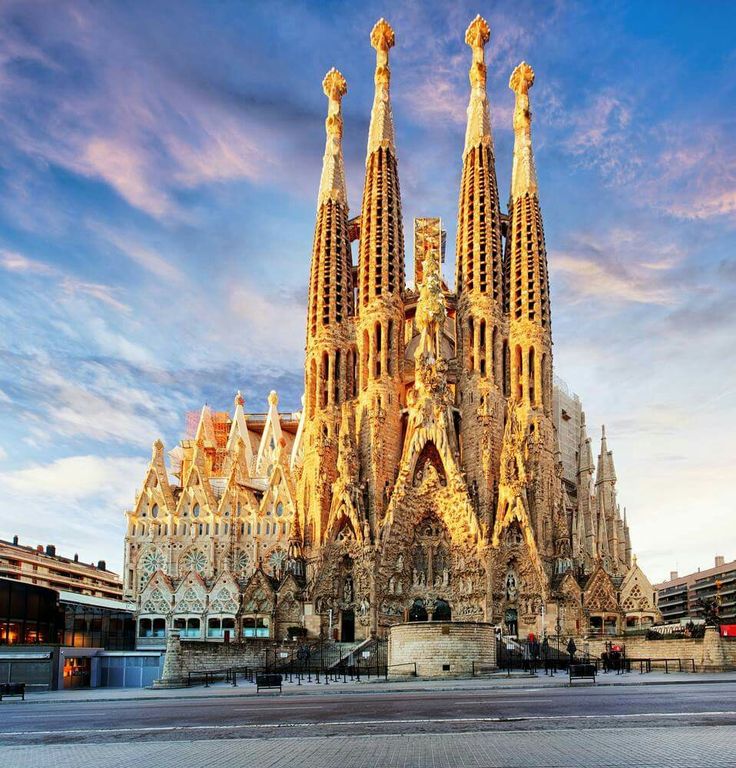 Because for them he turned out to be a “cheaper” worker than the eminent Villar.
Because for them he turned out to be a “cheaper” worker than the eminent Villar. 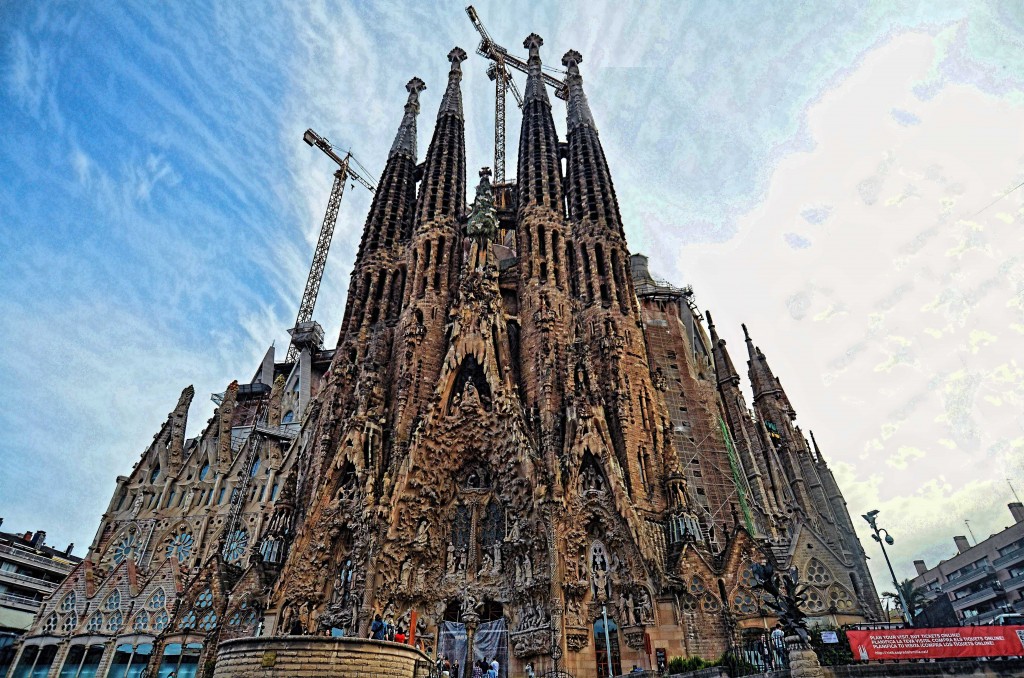 The structure of the roof over the central hall was planned to be done in such a way that in its slot the sound of the bell would be carried like an organ, and the breath of the wind would resemble singing. By the way, even the bells for the cathedral were cast according to a special drawing of the architect – an unusual elongated shape.
The structure of the roof over the central hall was planned to be done in such a way that in its slot the sound of the bell would be carried like an organ, and the breath of the wind would resemble singing. By the way, even the bells for the cathedral were cast according to a special drawing of the architect – an unusual elongated shape. 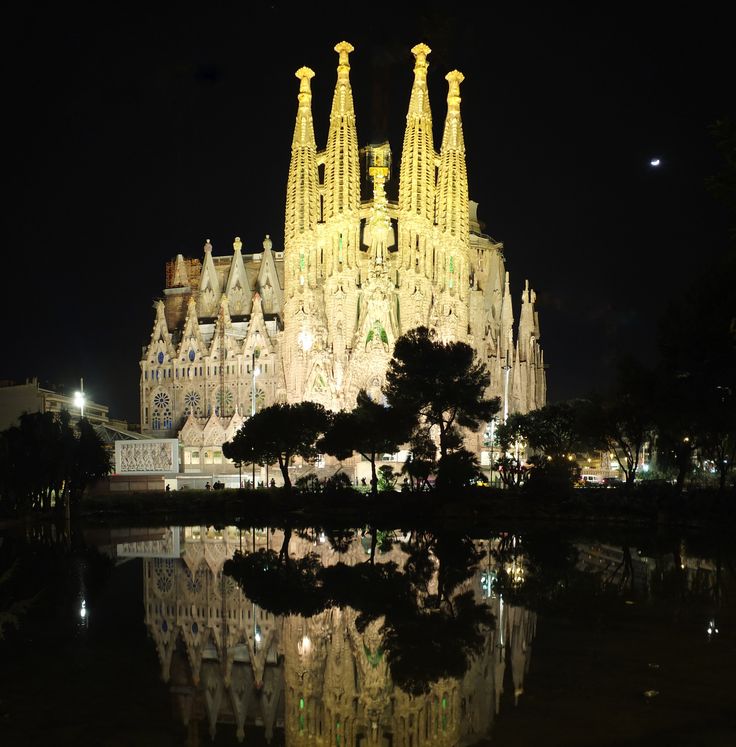 ) When completed in 2026, Sagrada Familia would have taken ten times longer than the Great pyramids, 123 years more than the Taj Mahal, and 50 years more than the Great Wall of China to be constructed.
) When completed in 2026, Sagrada Familia would have taken ten times longer than the Great pyramids, 123 years more than the Taj Mahal, and 50 years more than the Great Wall of China to be constructed. He also made models of the Glory Façade for future architects to base their designs according to his vision.
He also made models of the Glory Façade for future architects to base their designs according to his vision.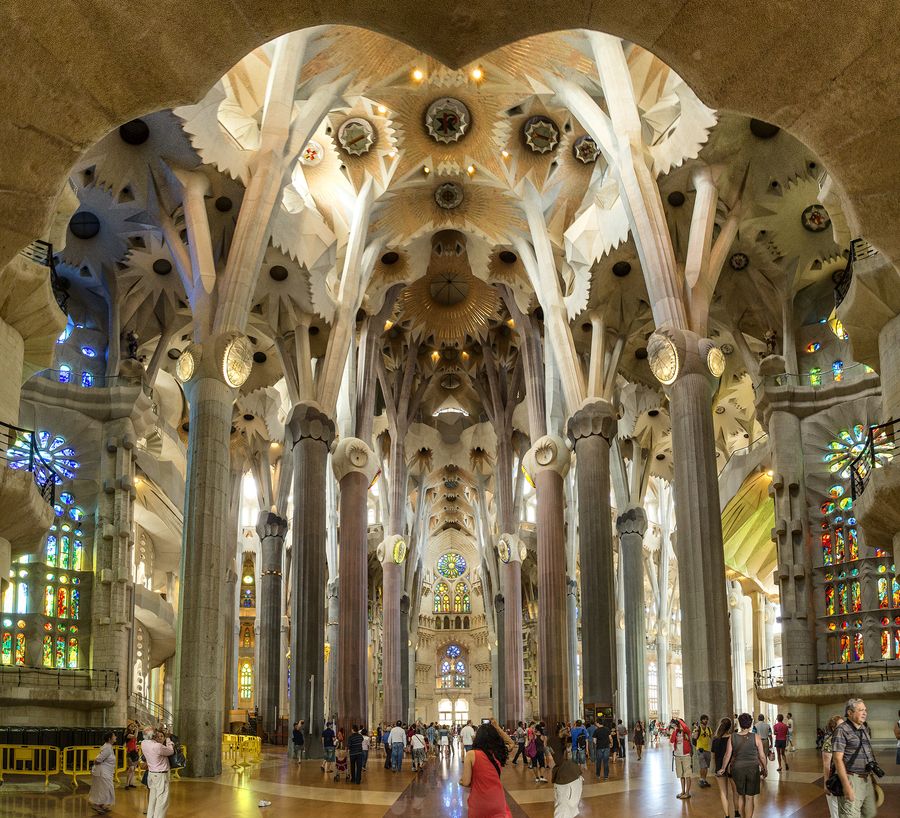 This was Gaudi’s way of making the church a part of the people.
This was Gaudi’s way of making the church a part of the people.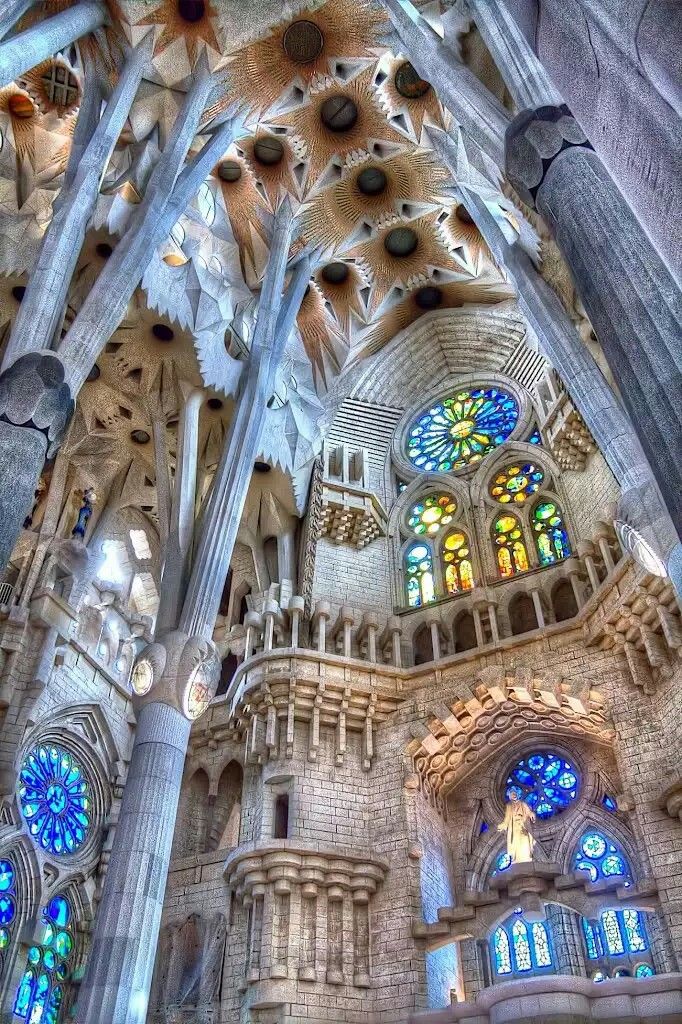
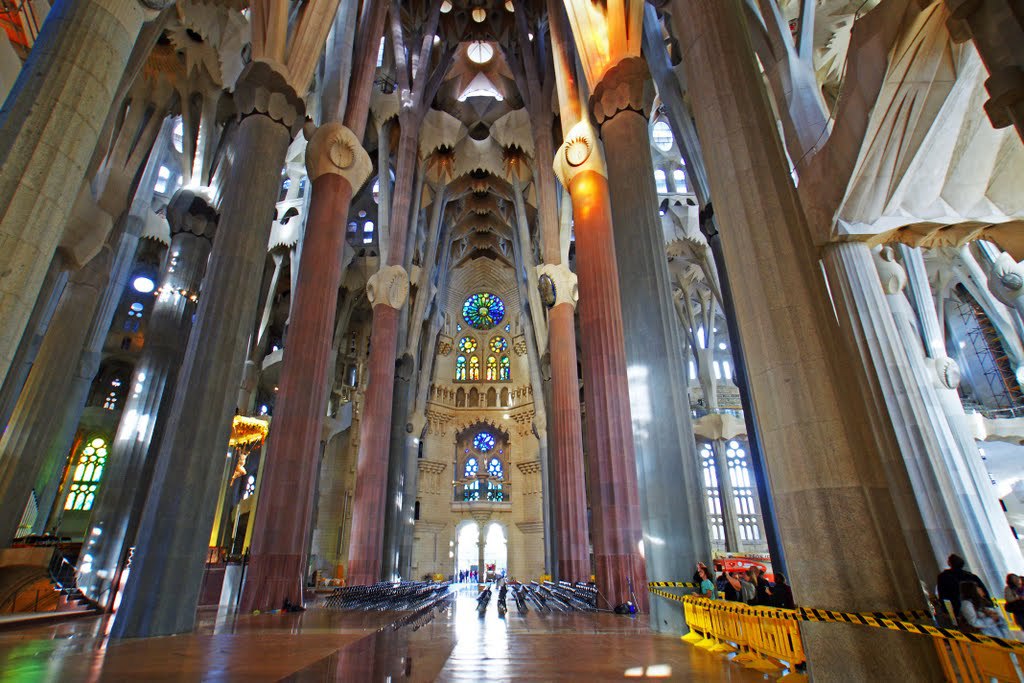
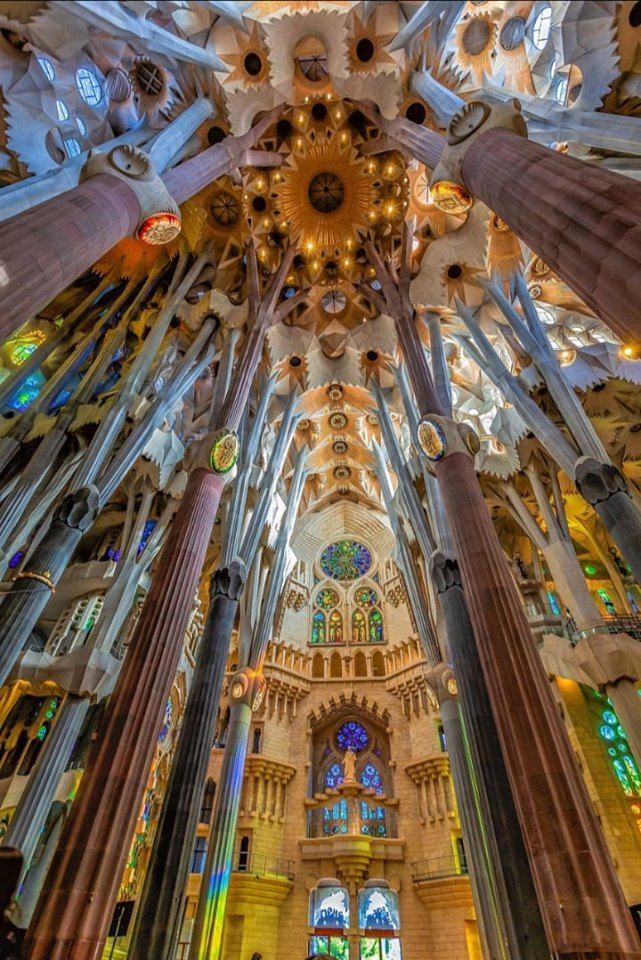 The building was suspended ten years later during the Spanish Civil War. Destroying the basilica’s models and designs by vandals slowed down the building process.
The building was suspended ten years later during the Spanish Civil War. Destroying the basilica’s models and designs by vandals slowed down the building process.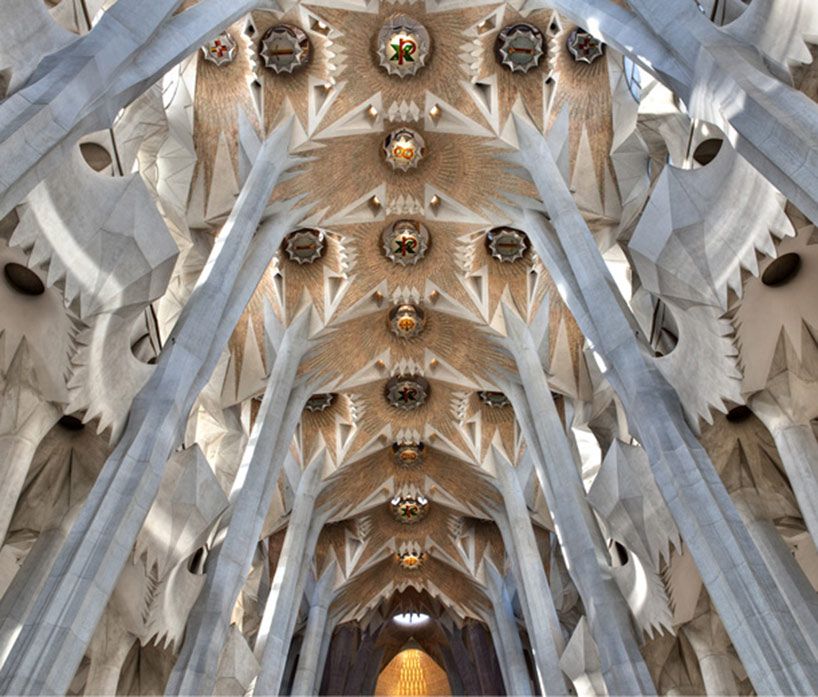 ph
ph
 We went straight to security and into the Basilica. Our tickets included audio. You will need to log into their Wi-Fi and provide your ticket purchase ID number to use this feature on your cell phone. Earphones are not provided. This Basilica has been under construction since the early 1870s and is said to be nearly complete. Completion is now expected in 2024. We have toured many cathedrals on the Danube and Rhine Rivers but this far larger and superior to any we had been in so far. This building is amazing. I think it has 10 towers. We visited as part of a guided small group tour and the tour operator procured the tickets for us at additional expense. We did not go up in the tower which requires a second ticket. You can see this in one hour if you elect not to go in the tower.
We went straight to security and into the Basilica. Our tickets included audio. You will need to log into their Wi-Fi and provide your ticket purchase ID number to use this feature on your cell phone. Earphones are not provided. This Basilica has been under construction since the early 1870s and is said to be nearly complete. Completion is now expected in 2024. We have toured many cathedrals on the Danube and Rhine Rivers but this far larger and superior to any we had been in so far. This building is amazing. I think it has 10 towers. We visited as part of a guided small group tour and the tour operator procured the tickets for us at additional expense. We did not go up in the tower which requires a second ticket. You can see this in one hour if you elect not to go in the tower.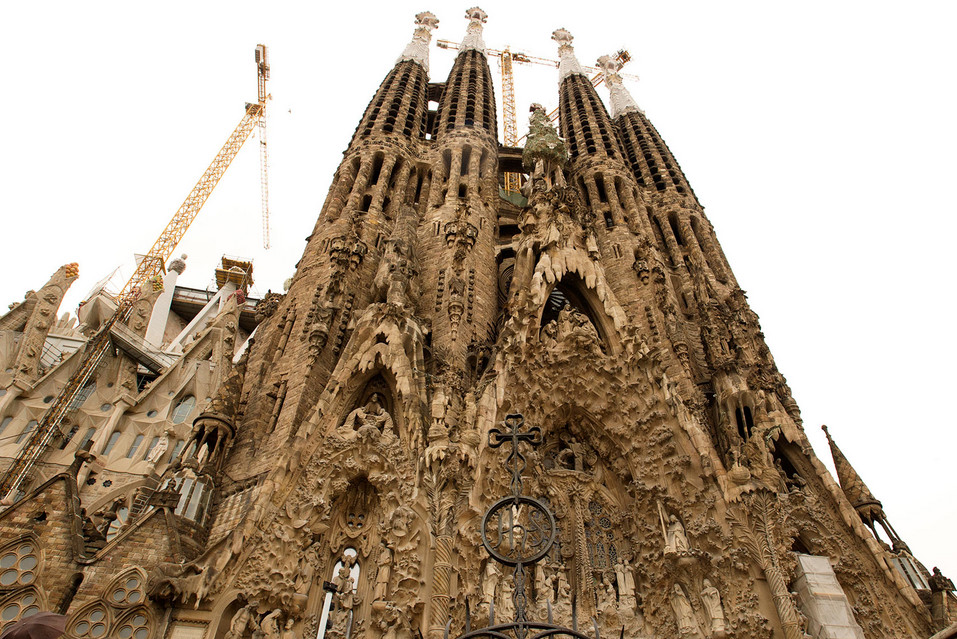 Tripadvisor performs checks on reviews.
Tripadvisor performs checks on reviews.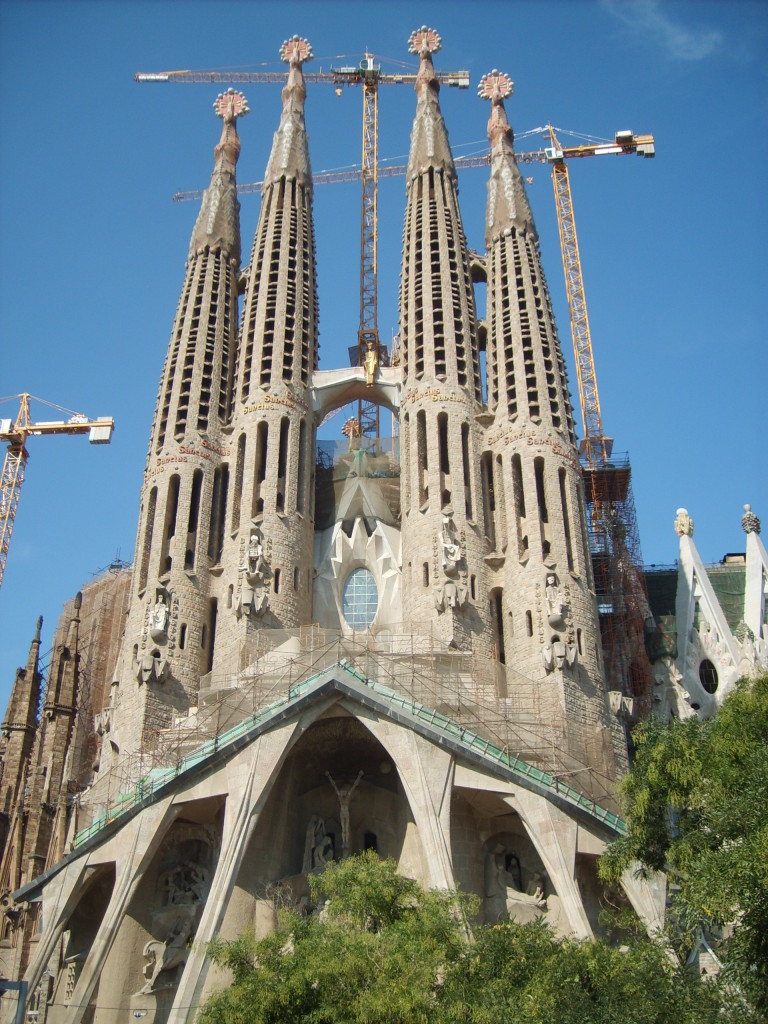
 Tripadvisor performs checks on reviews.
Tripadvisor performs checks on reviews.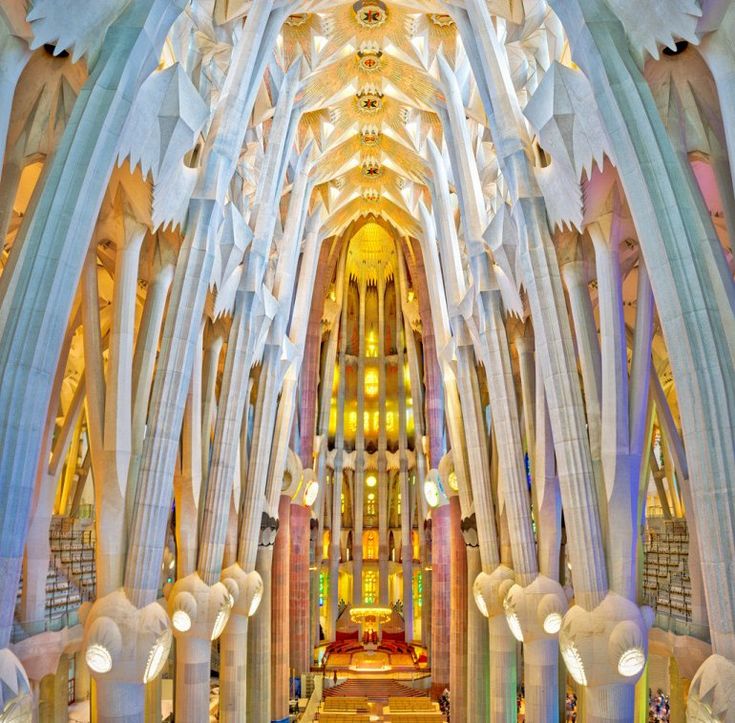
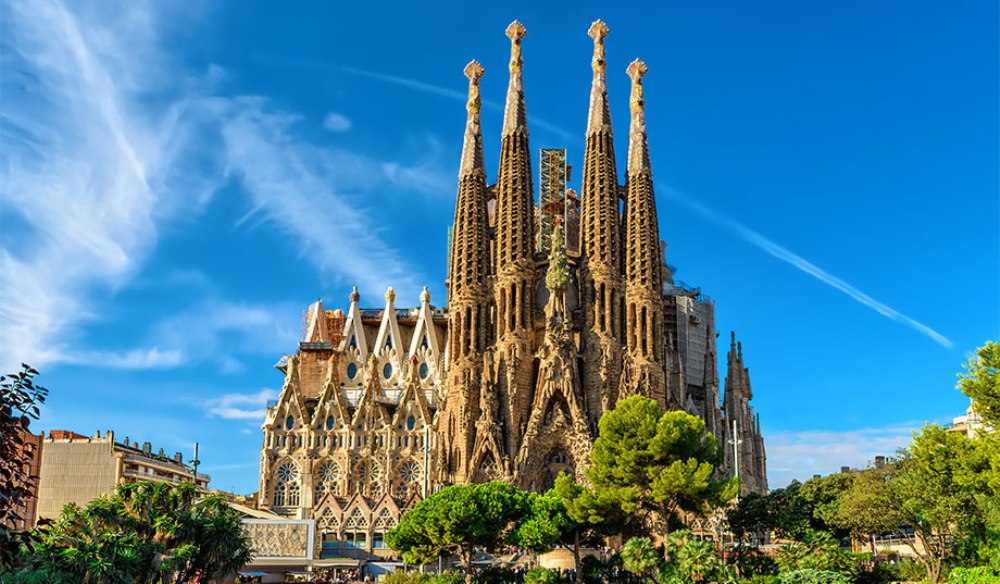 Do note that the stairs are narrow and steep for the way down.
Do note that the stairs are narrow and steep for the way down.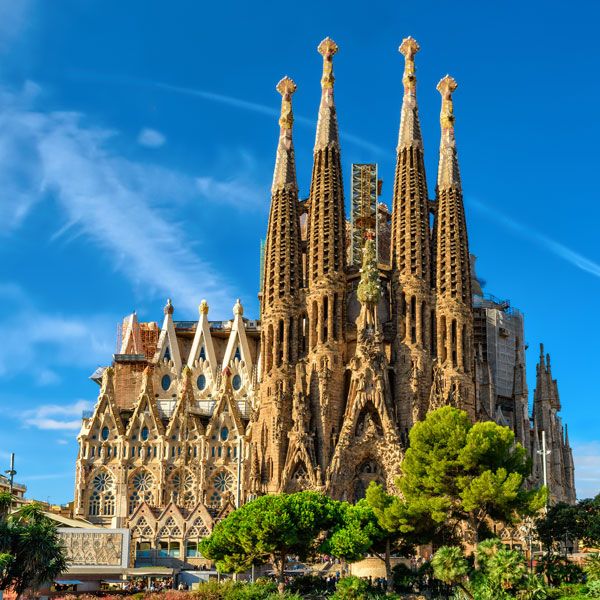 Tripadvisor performs checks on reviews.
Tripadvisor performs checks on reviews.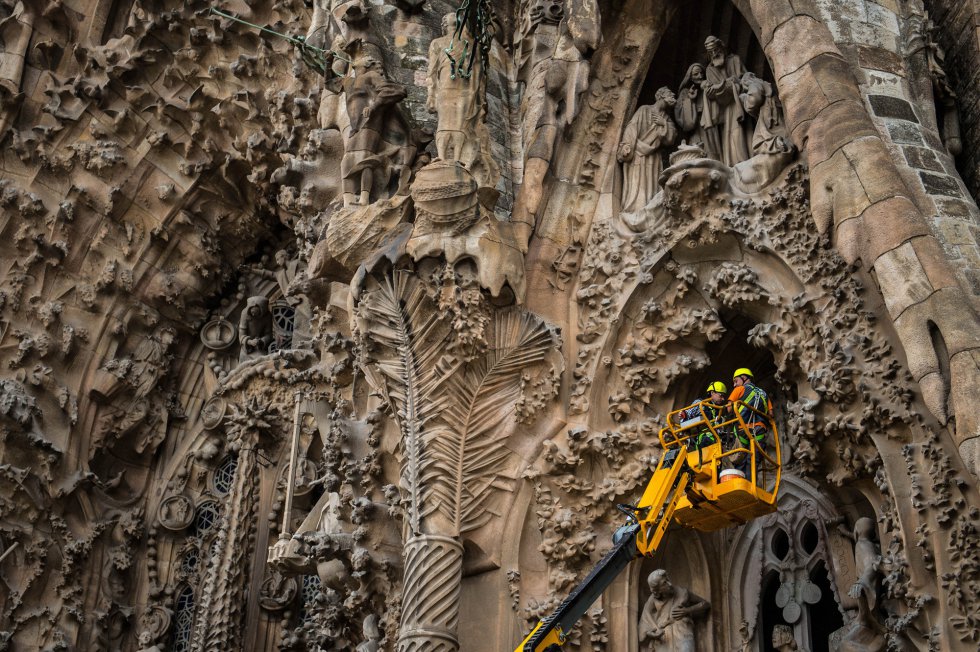 Sagrada Familia, or the Expiatory Temple of the Holy Family, has long been a hallmark of Barcelona, but its construction is still not completed! This famous long-term construction is already over 130 years old.
Sagrada Familia, or the Expiatory Temple of the Holy Family, has long been a hallmark of Barcelona, but its construction is still not completed! This famous long-term construction is already over 130 years old.  It was with the funds of the society that the land was acquired, on which the construction of a new temple began. It was decided to dedicate the future church to the family of the Savior. And the Church of the Redemption was named as a reminder of the great sacrifice of Christ, made for the salvation of mankind from the slavery of sin – his voluntary suffering and death on the cross.
It was with the funds of the society that the land was acquired, on which the construction of a new temple began. It was decided to dedicate the future church to the family of the Savior. And the Church of the Redemption was named as a reminder of the great sacrifice of Christ, made for the salvation of mankind from the slavery of sin – his voluntary suffering and death on the cross. 
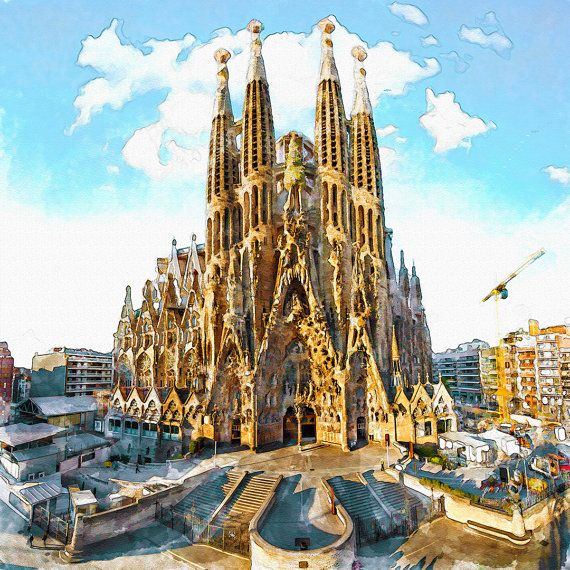
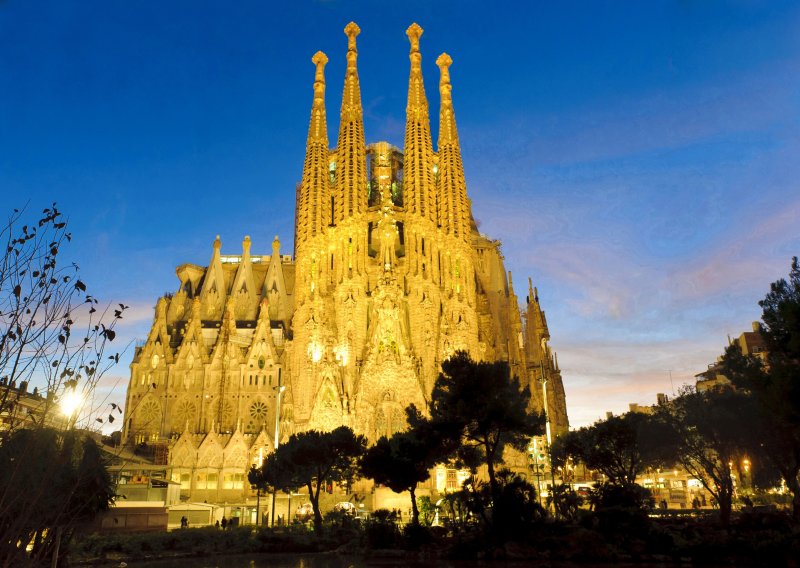 It is not surprising that after his death at 19In the year 26, work on the construction of the temple stopped – the successors of his work simply did not have enough projects and drawings of what they needed to build.
It is not surprising that after his death at 19In the year 26, work on the construction of the temple stopped – the successors of his work simply did not have enough projects and drawings of what they needed to build. 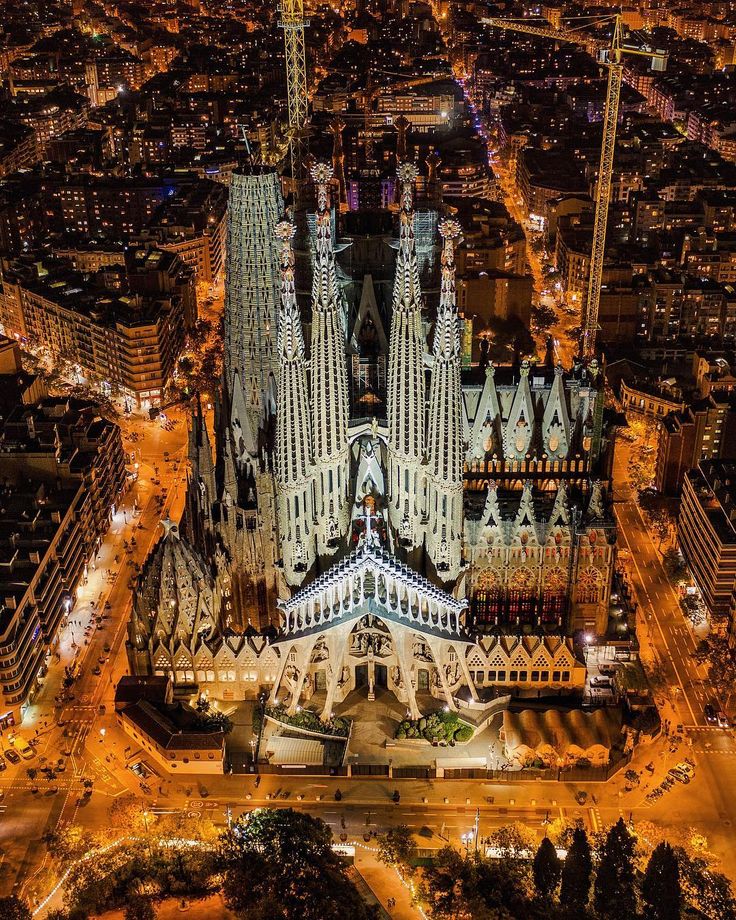 Since that time, the Sagrada Familia in Barcelona has become a functioning Catholic church.
Since that time, the Sagrada Familia in Barcelona has become a functioning Catholic church. 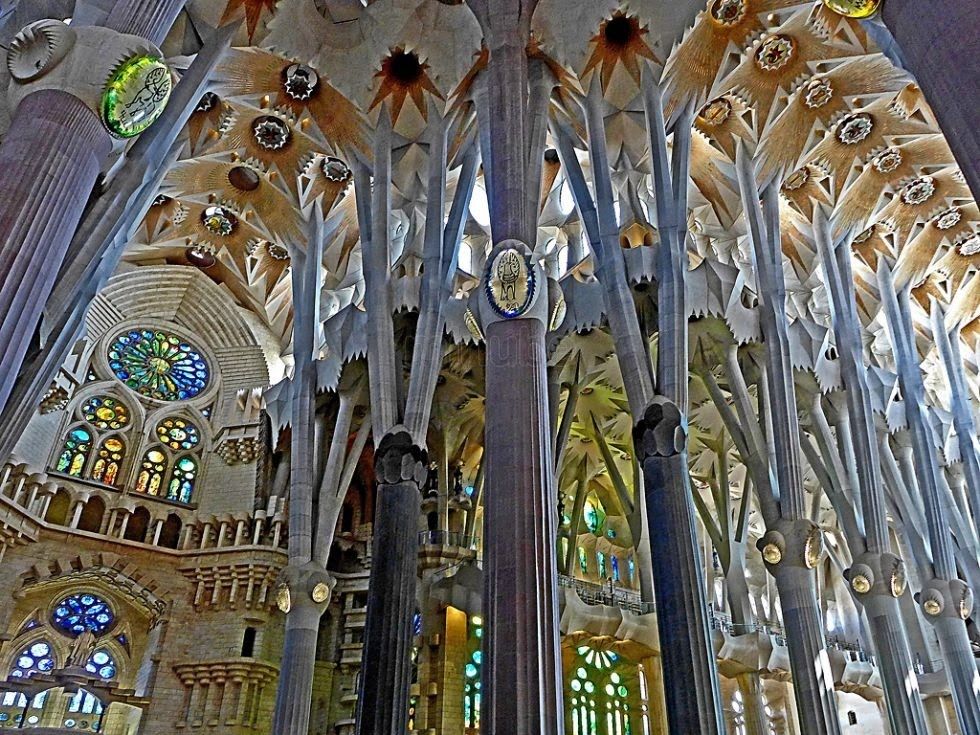 It began to be erected only in 1954, but according to a project drawn up by Gaudi back in 1911. This façade narrates in stone the sufferings of Christ. It depicts the Last Supper, and the kiss of Judas, and the scene of the scourging of Christ (it is adjacent to the cryptogram, which you can read about below). Next – the trial of Christ, Pontius Pilate, washing his hands, the path to Golgotha, the very Crucifixion of Christ. And this gospel story, told in stone, ends with the main event of the New Testament – the Resurrection of Christ, the victory of life over death.
It began to be erected only in 1954, but according to a project drawn up by Gaudi back in 1911. This façade narrates in stone the sufferings of Christ. It depicts the Last Supper, and the kiss of Judas, and the scene of the scourging of Christ (it is adjacent to the cryptogram, which you can read about below). Next – the trial of Christ, Pontius Pilate, washing his hands, the path to Golgotha, the very Crucifixion of Christ. And this gospel story, told in stone, ends with the main event of the New Testament – the Resurrection of Christ, the victory of life over death.  And it is so different from the interiors of traditional temples! Surrealism, amazing combinations of shapes, play with color and lighting, unexpected intersections of lines – all this creates the impression of a huge kaleidoscope. And spiral staircases, round and elliptical stained-glass windows and windows, hyperbolic vaults, “stars” at the intersection of various surfaces create the impression that you are in a magical forest.
And it is so different from the interiors of traditional temples! Surrealism, amazing combinations of shapes, play with color and lighting, unexpected intersections of lines – all this creates the impression of a huge kaleidoscope. And spiral staircases, round and elliptical stained-glass windows and windows, hyperbolic vaults, “stars” at the intersection of various surfaces create the impression that you are in a magical forest.  These columns do not stand vertically, but at an angle, and besides, they also branch upwards, like a crown of trees – thanks to this, the load is distributed more evenly. And through the intersections located at different heights, light gently penetrates into the room, creating the feeling that stars are shining through the foliage.
These columns do not stand vertically, but at an angle, and besides, they also branch upwards, like a crown of trees – thanks to this, the load is distributed more evenly. And through the intersections located at different heights, light gently penetrates into the room, creating the feeling that stars are shining through the foliage.  Gaudi was criticized more than once for decorating the temple with images of all kinds of “reptiles”, to which he replied that if crocodiles and toads are not bad for God, because he created them, why are they bad for you?
Gaudi was criticized more than once for decorating the temple with images of all kinds of “reptiles”, to which he replied that if crocodiles and toads are not bad for God, because he created them, why are they bad for you?  But will it also become the most controversial religious building?
But will it also become the most controversial religious building? 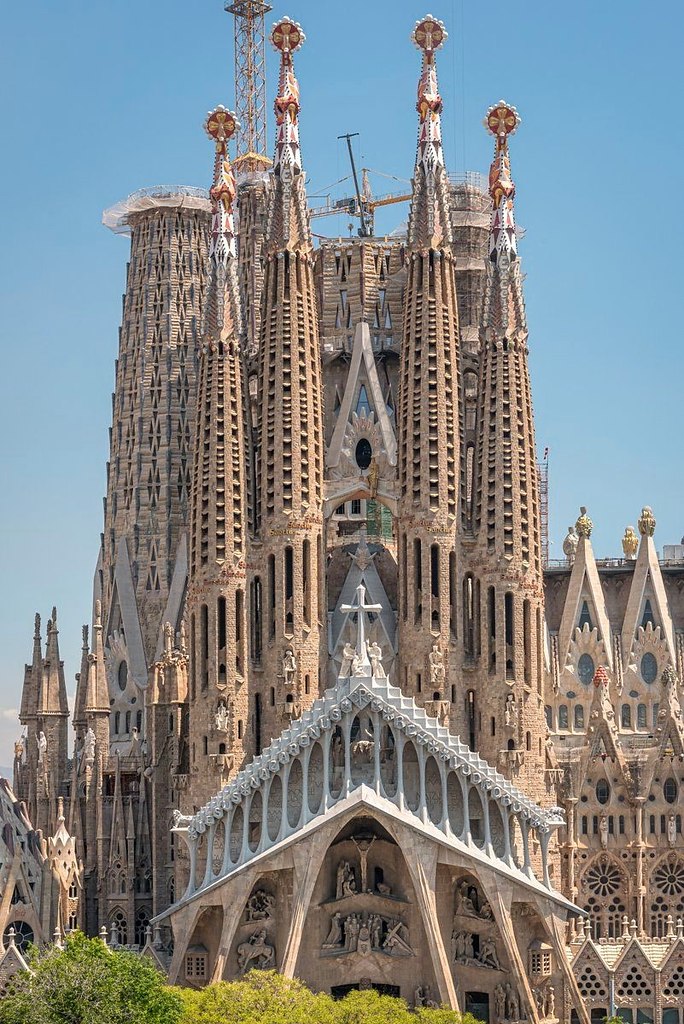
 However, one has only to look behind the facade, and you will see that this building is the pinnacle of complex mathematical calculations and leading building technologies.
However, one has only to look behind the facade, and you will see that this building is the pinnacle of complex mathematical calculations and leading building technologies. 

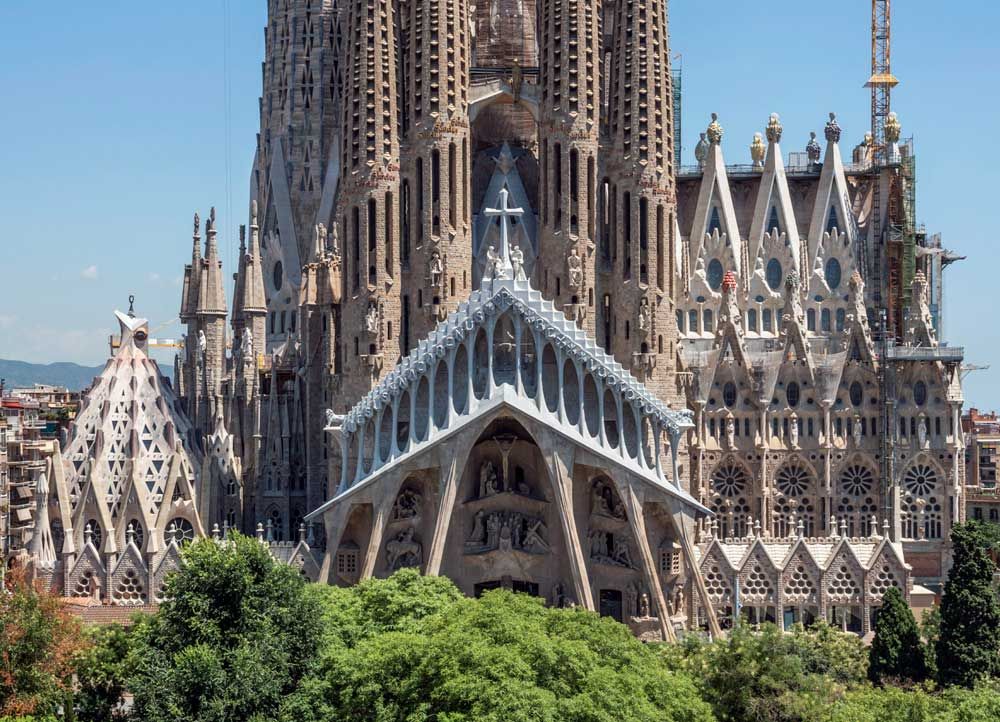 org/en/virtual-tour
org/en/virtual-tour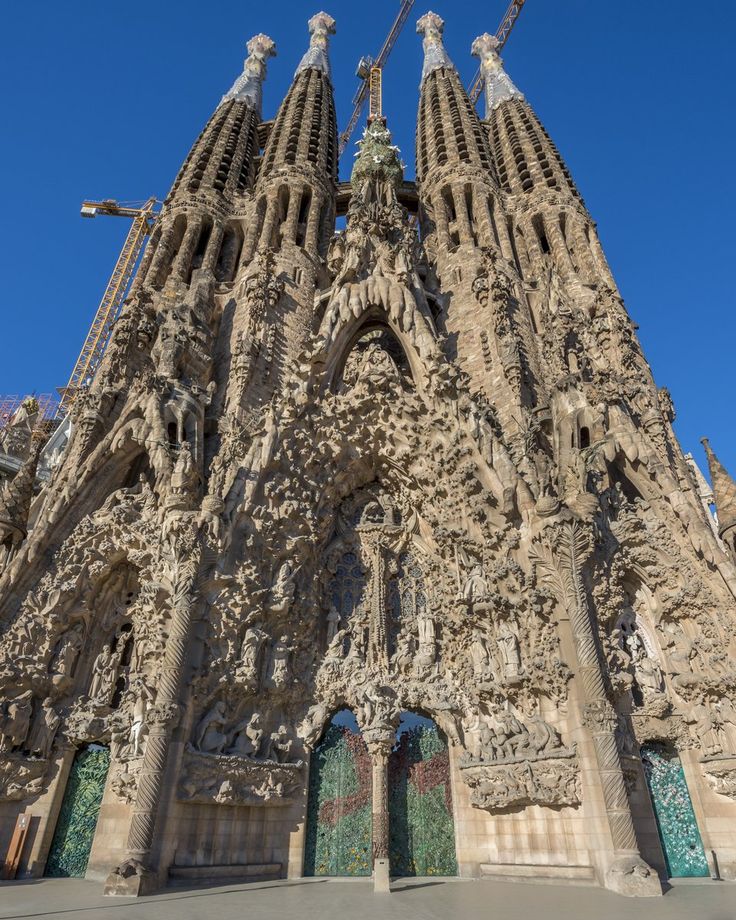 5m).
5m). Gaudí built the Nativity Facade, and in 2005 it was declared a UNESCO World Heritage site, along with the crypt. On the west side is the controversial Passion Facade, whose architect, Josep Maria Subirachs, has been heavily criticized for being too abstract and not strictly following Gaudí’s model. The unfinished Glory Facade is supposed to be the most gorgeous of the three once it’s complete and crowned with its missing four towers.
Gaudí built the Nativity Facade, and in 2005 it was declared a UNESCO World Heritage site, along with the crypt. On the west side is the controversial Passion Facade, whose architect, Josep Maria Subirachs, has been heavily criticized for being too abstract and not strictly following Gaudí’s model. The unfinished Glory Facade is supposed to be the most gorgeous of the three once it’s complete and crowned with its missing four towers.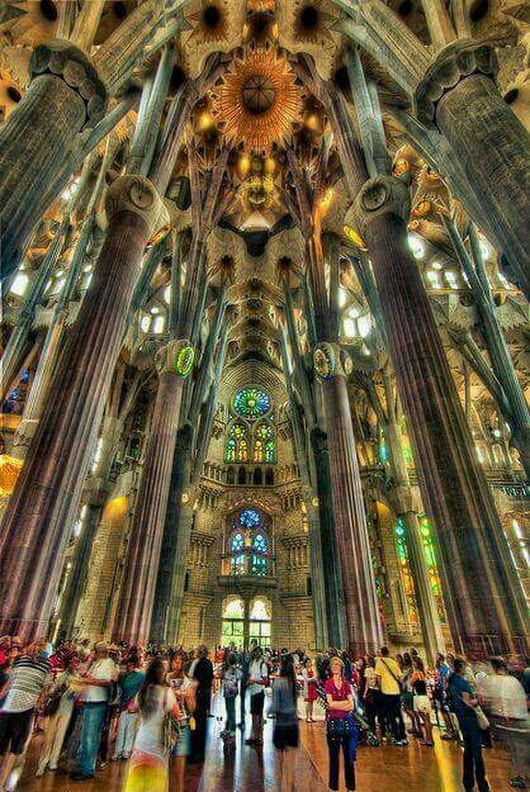 This ended with Francisco del Villar not being able to work on the Sagrada Familia project for even a year.
This ended with Francisco del Villar not being able to work on the Sagrada Familia project for even a year. 
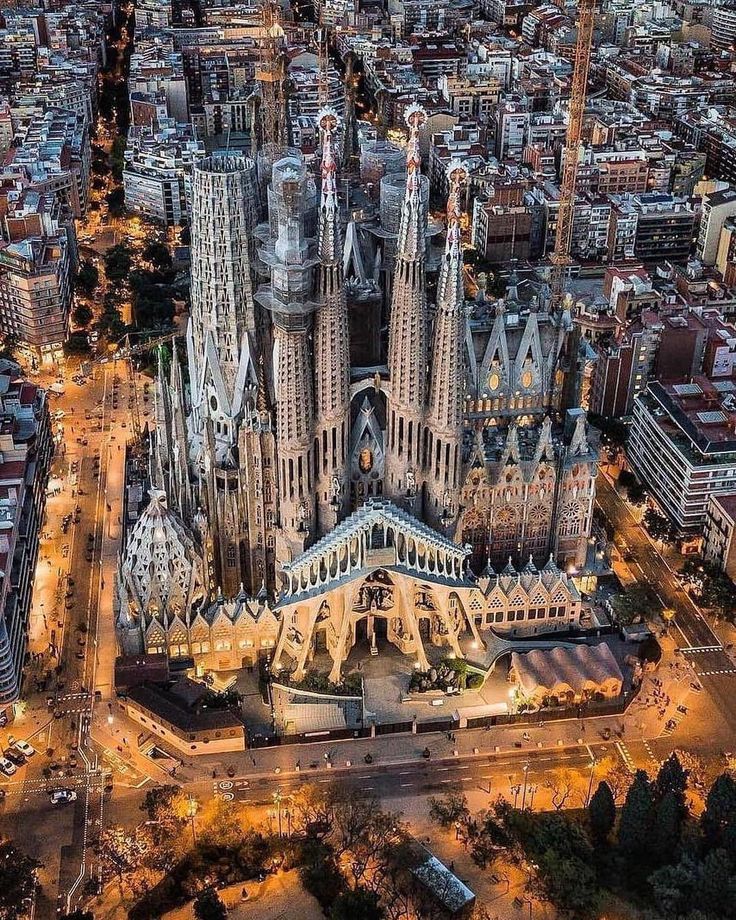 Order a taxi in advance with fixed rates online. The most reliable service for ordering a taxi is KiwiTaxi .
Order a taxi in advance with fixed rates online. The most reliable service for ordering a taxi is KiwiTaxi .

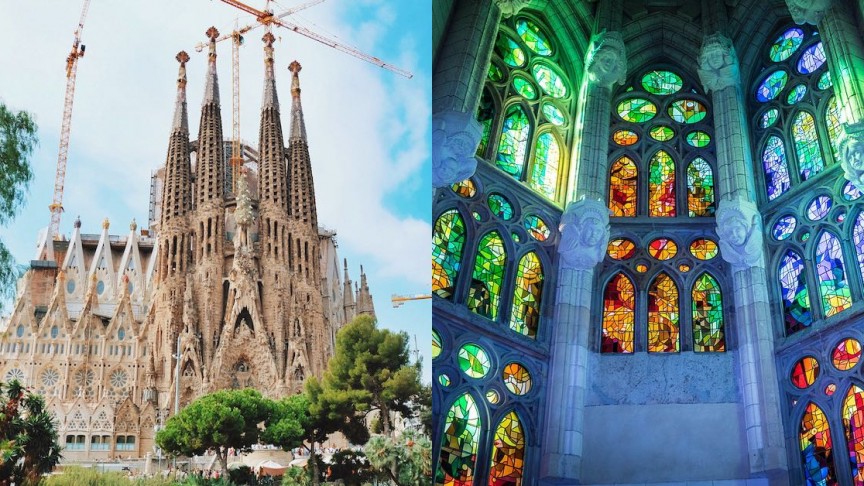 Today, thanks to the large influx of visitors from all nationalities and beliefs the construction goes high speed. Many people still see it as a Christian church; but it is not uncommon to find opinions of those who believe that the building could become a universal symbol of faith.
Today, thanks to the large influx of visitors from all nationalities and beliefs the construction goes high speed. Many people still see it as a Christian church; but it is not uncommon to find opinions of those who believe that the building could become a universal symbol of faith.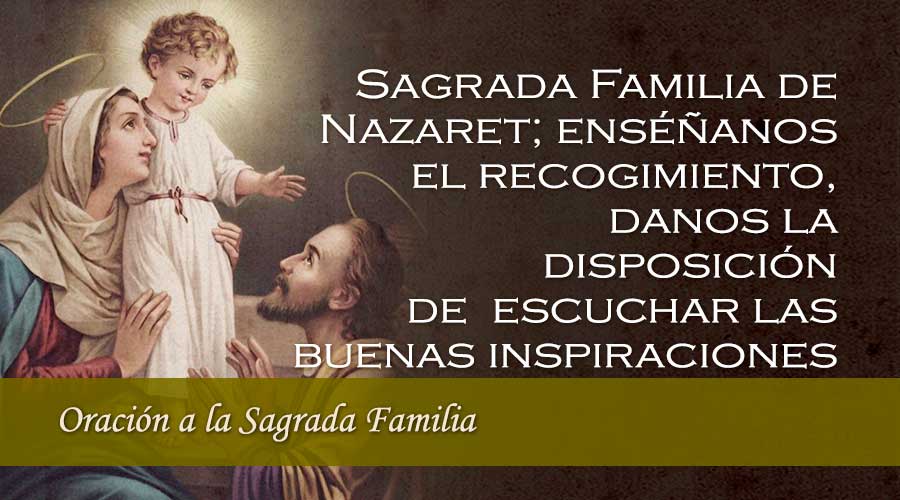 Pepi Baulo www.pepibaulo.com
Pepi Baulo www.pepibaulo.com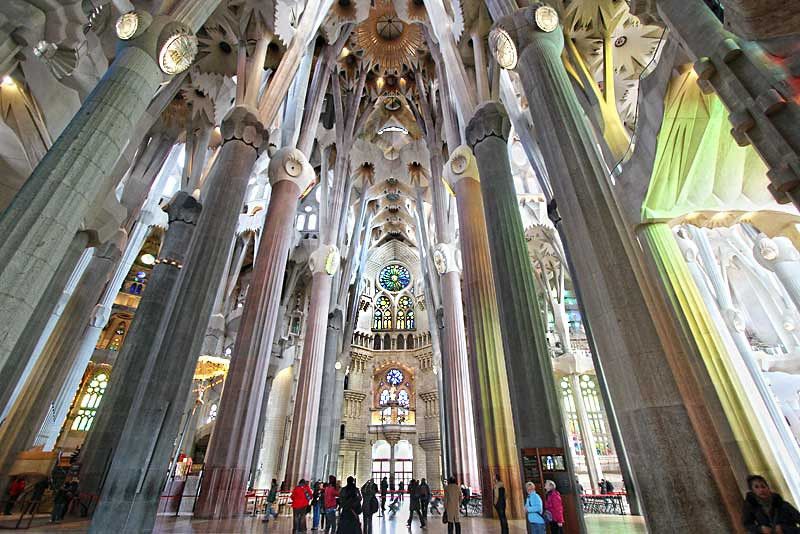 Nevertheless, thanks to his architectural plans, his work continues to be built to this day by renowned architects. The money for the construction is obtained from the many visits to this impressive visit and various donations.
Nevertheless, thanks to his architectural plans, his work continues to be built to this day by renowned architects. The money for the construction is obtained from the many visits to this impressive visit and various donations.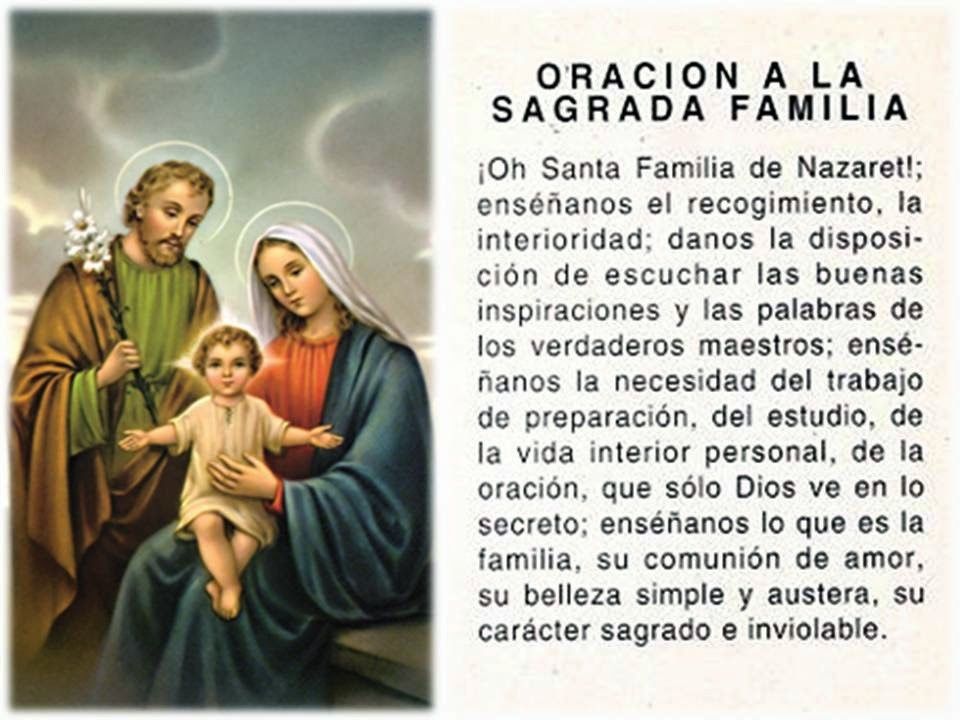
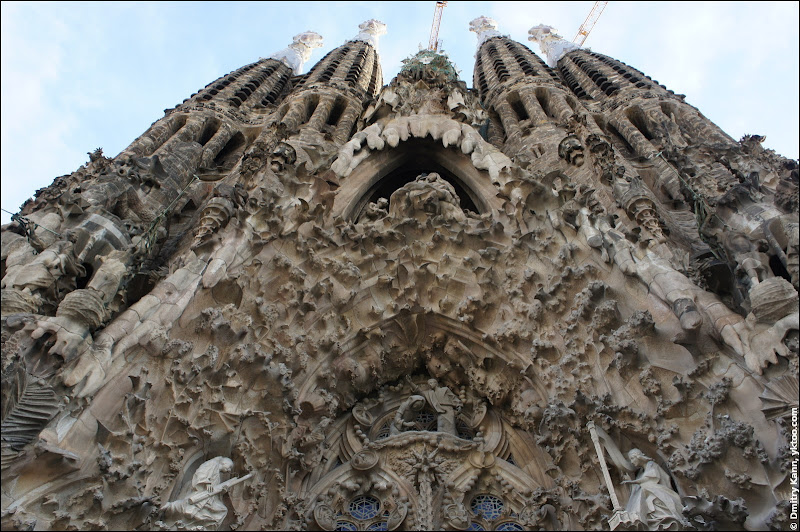 This is a difficult question to answer. Since it was founded in 1882, it has been built thanks to donations. This is why the Sagrada Família is taking so long to complete and it could take several years to finish.
This is a difficult question to answer. Since it was founded in 1882, it has been built thanks to donations. This is why the Sagrada Família is taking so long to complete and it could take several years to finish.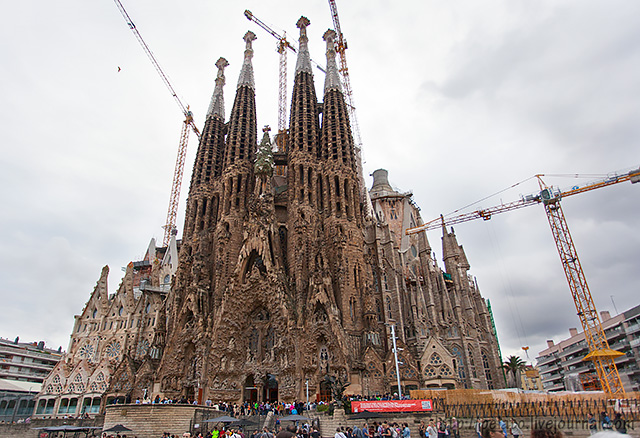 ..Discover the 10 unmissable sights to see in Barcelona.
..Discover the 10 unmissable sights to see in Barcelona.
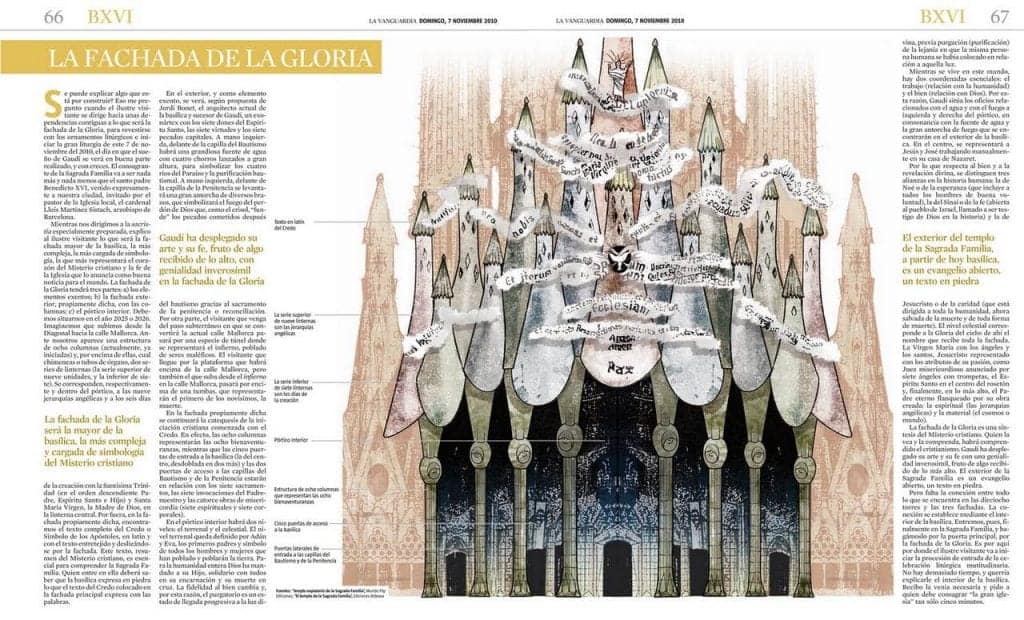 In other words, at the moment
In other words, at the moment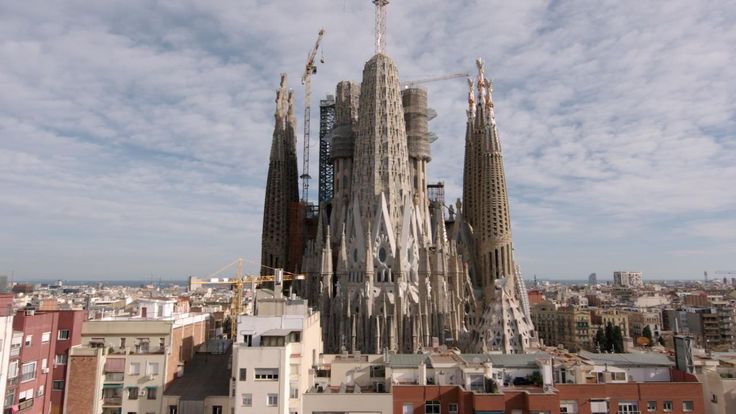
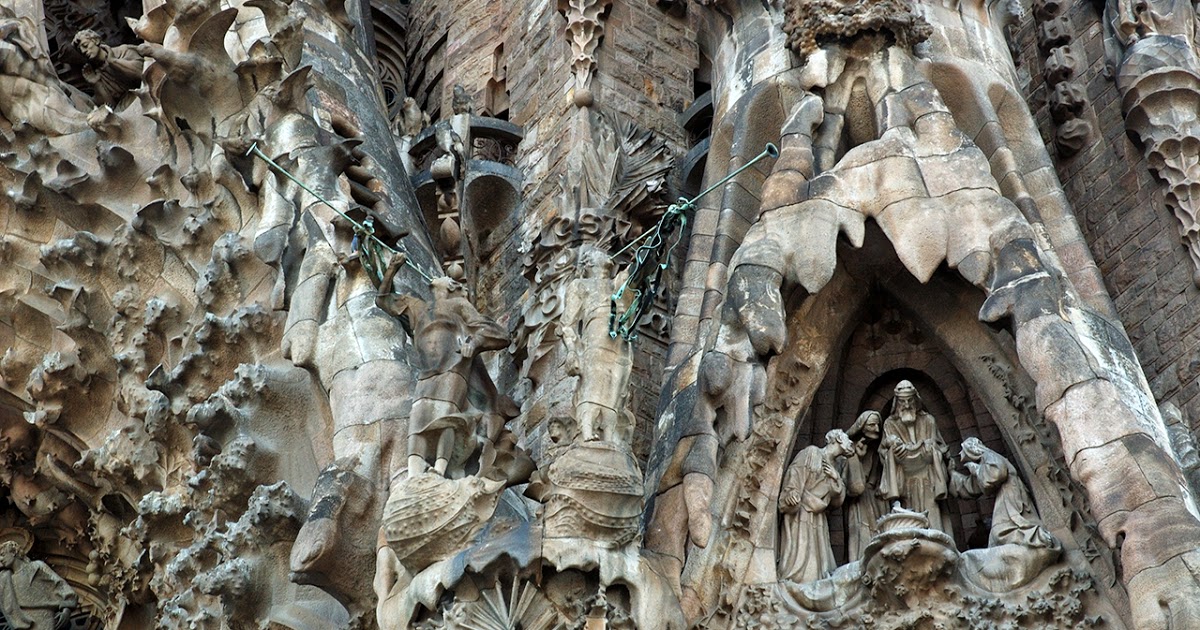 In June of this year, the official presentation of
In June of this year, the official presentation of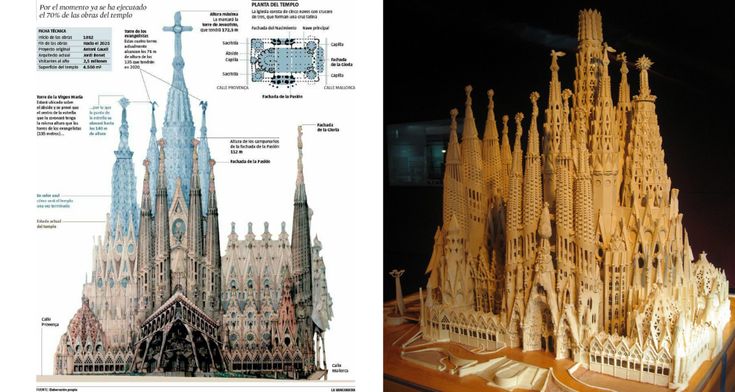 These funds will be used, among other things, to improve
These funds will be used, among other things, to improve Quite different is the Sagrada Familia. With nothing comparable in its volume, the huge internal space of the Gaudi church deliberately decided to leave
Quite different is the Sagrada Familia. With nothing comparable in its volume, the huge internal space of the Gaudi church deliberately decided to leave
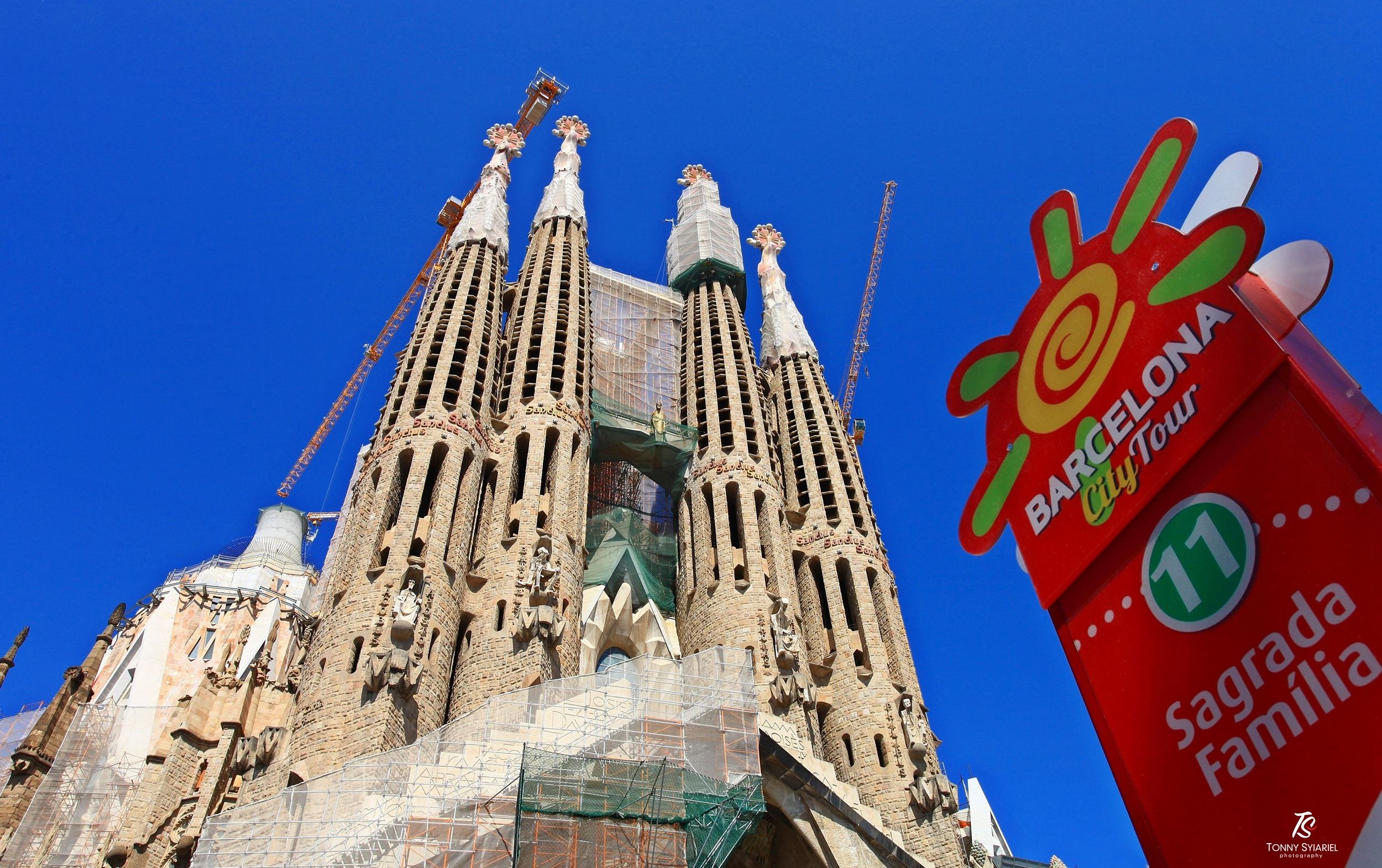
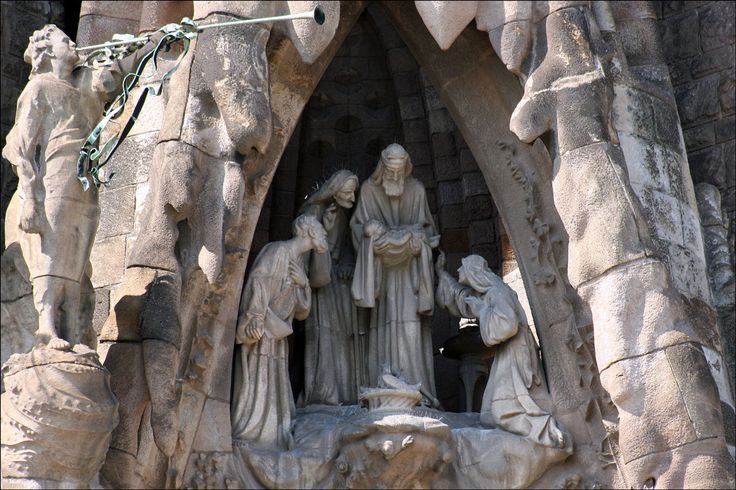

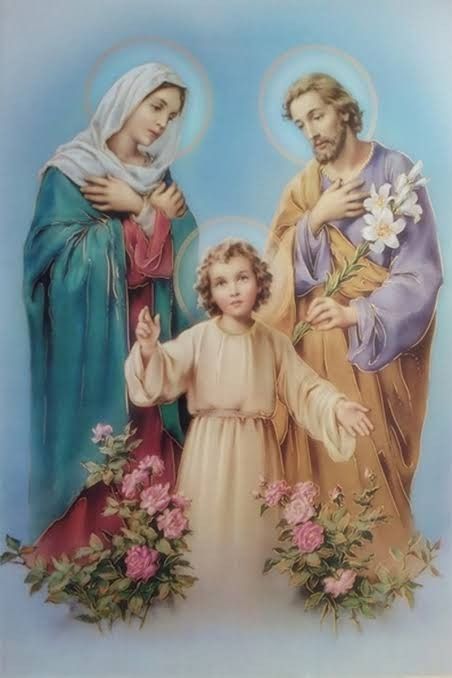 According to statistics for 2018, collected by the famous and
According to statistics for 2018, collected by the famous and
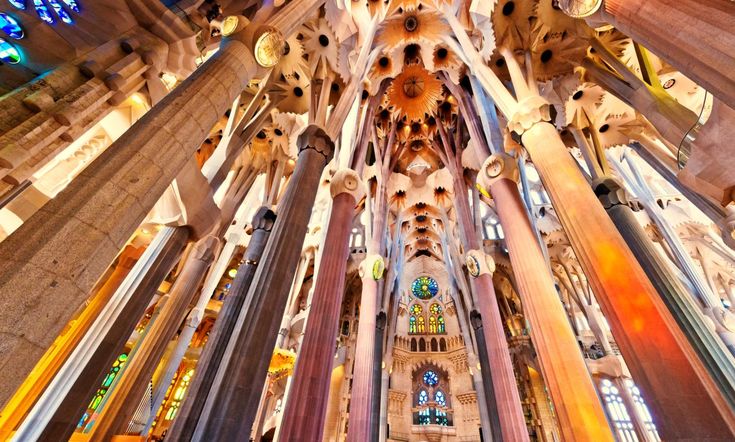
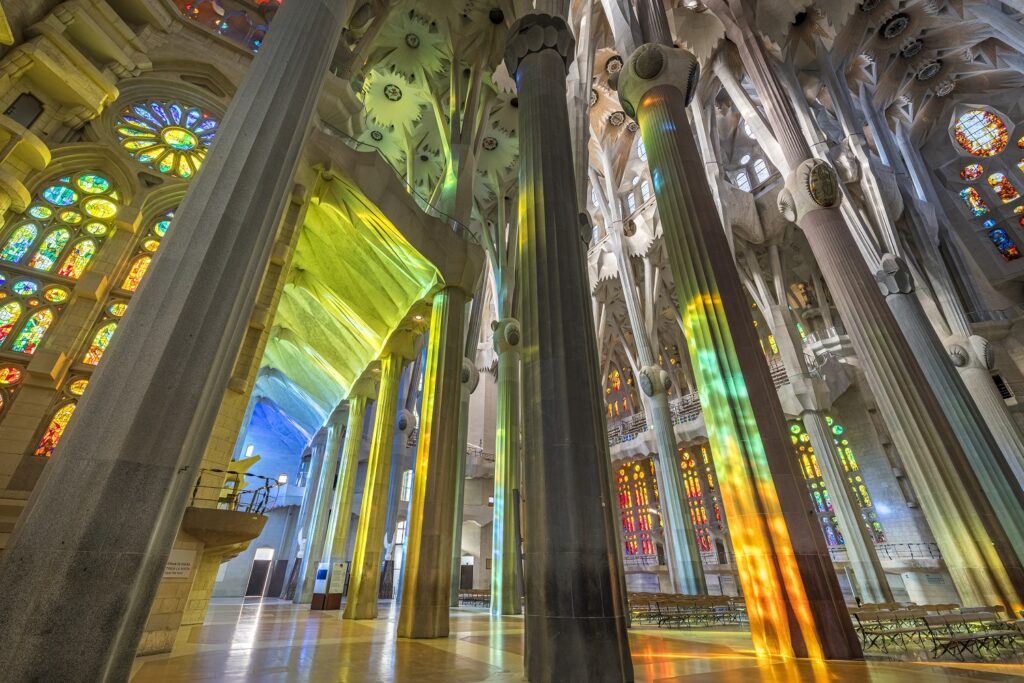 Carmen Chapel under a modest stone slab – and there remains
Carmen Chapel under a modest stone slab – and there remains Yes, in the Vatican
Yes, in the Vatican In general, the towers of the Nativity facade were planned to be blown up, as many other churches in Barcelona were blown up – and it’s fortunate that this still didn’t
In general, the towers of the Nativity facade were planned to be blown up, as many other churches in Barcelona were blown up – and it’s fortunate that this still didn’t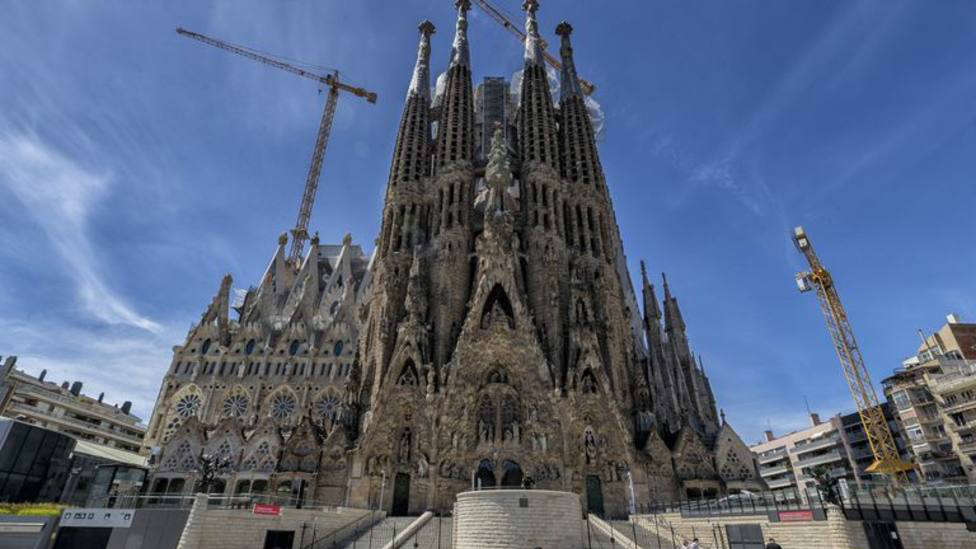 Every year, millions of tourists visit this majestic building, which strikes the imagination of even people who are very far from art, and this despite the fact that its construction has not yet been completed.
Every year, millions of tourists visit this majestic building, which strikes the imagination of even people who are very far from art, and this despite the fact that its construction has not yet been completed. 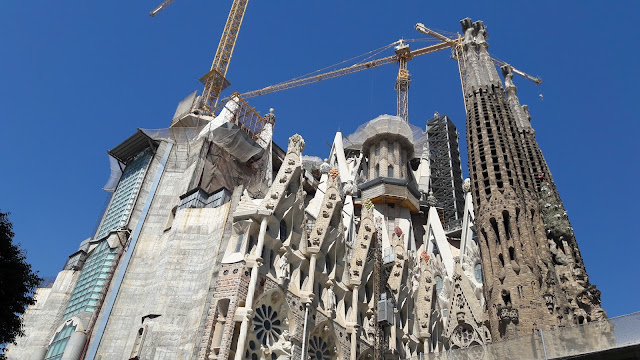
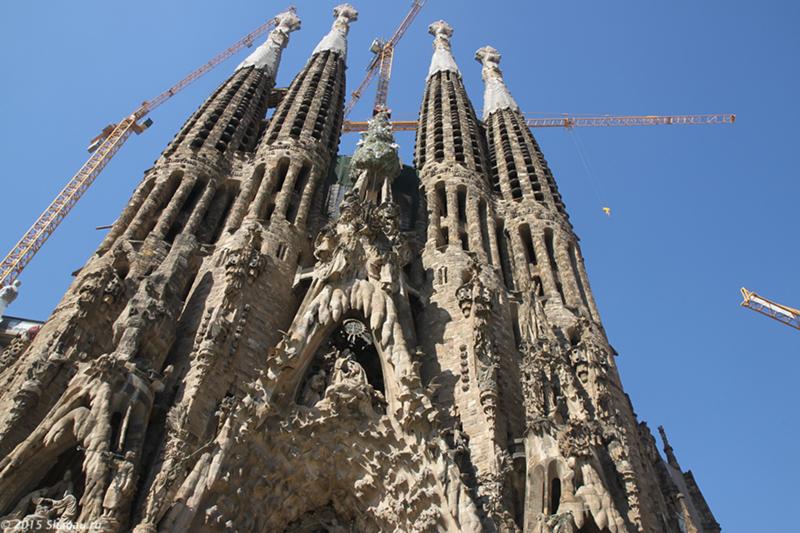

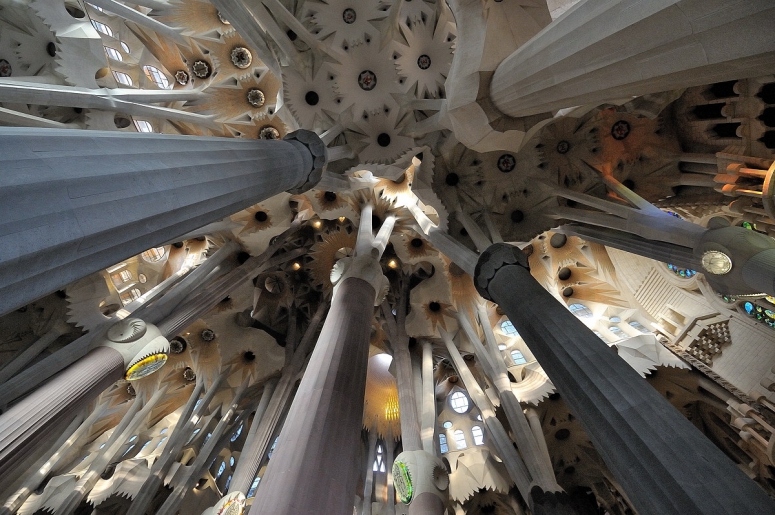 org. A maximum of two disabled and two companion tickets may be purchased at a time. Official accreditation must be shown at the entrance.
org. A maximum of two disabled and two companion tickets may be purchased at a time. Official accreditation must be shown at the entrance.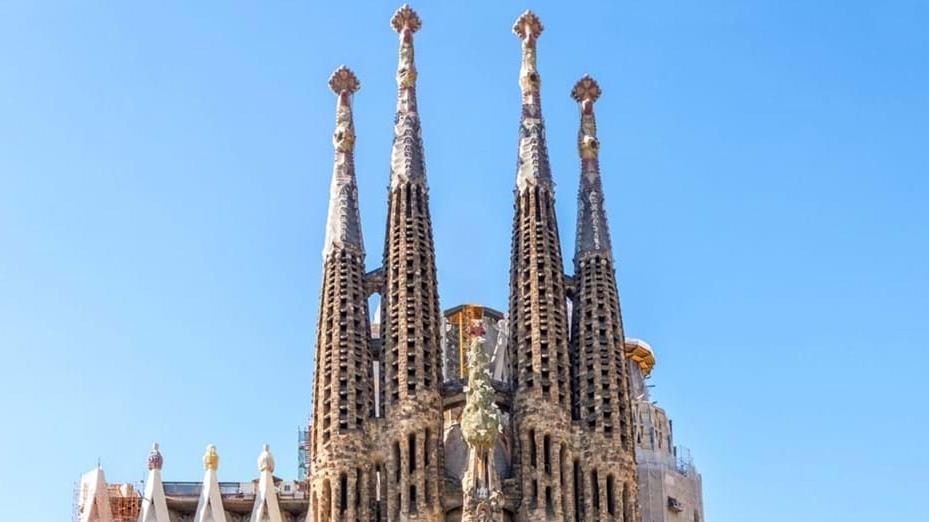
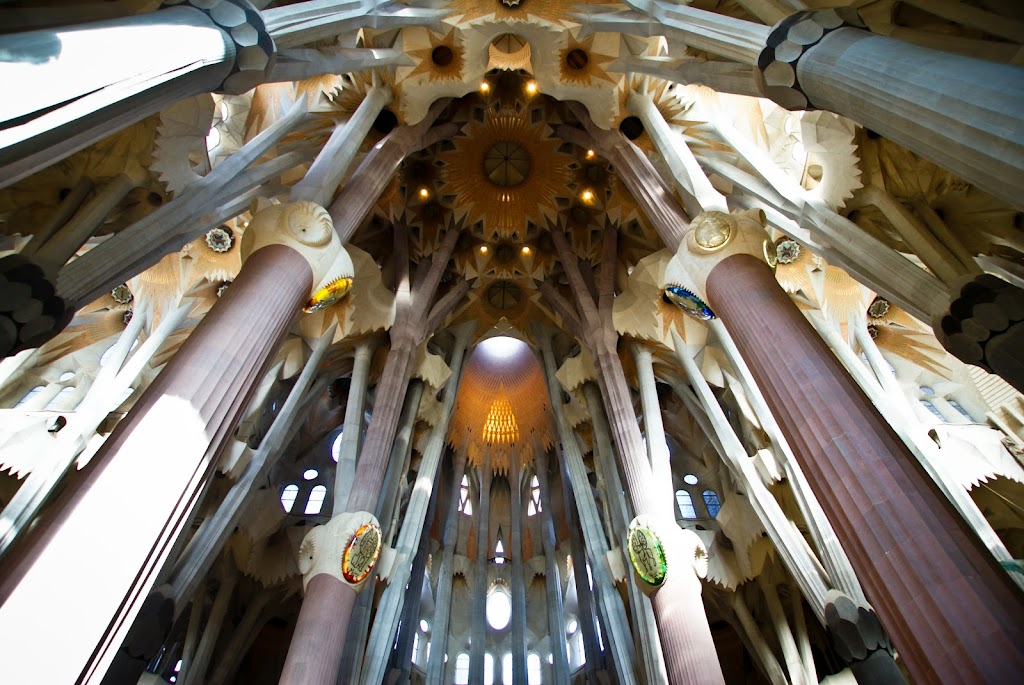
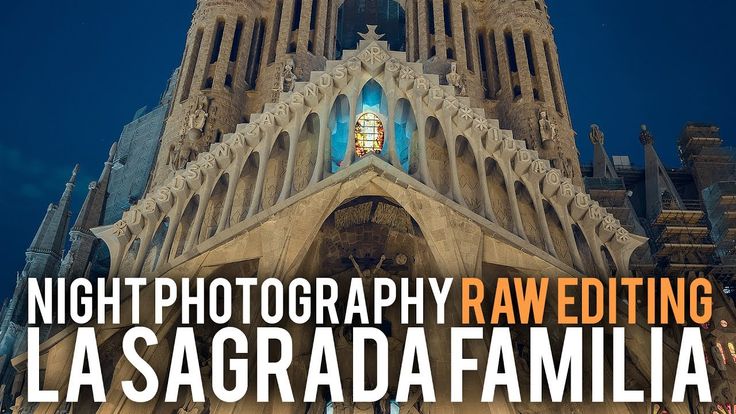
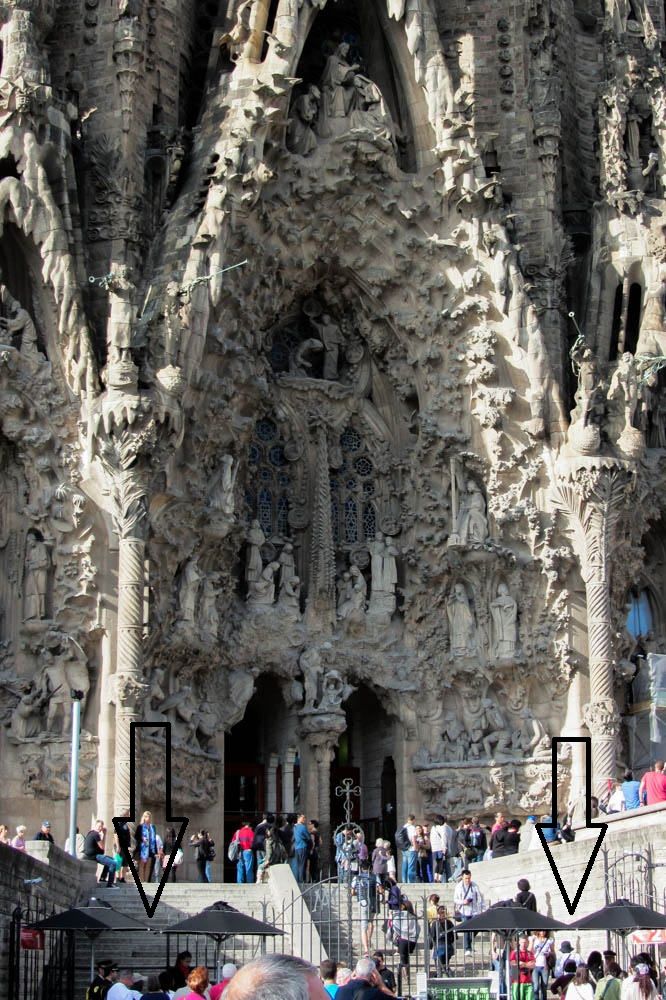
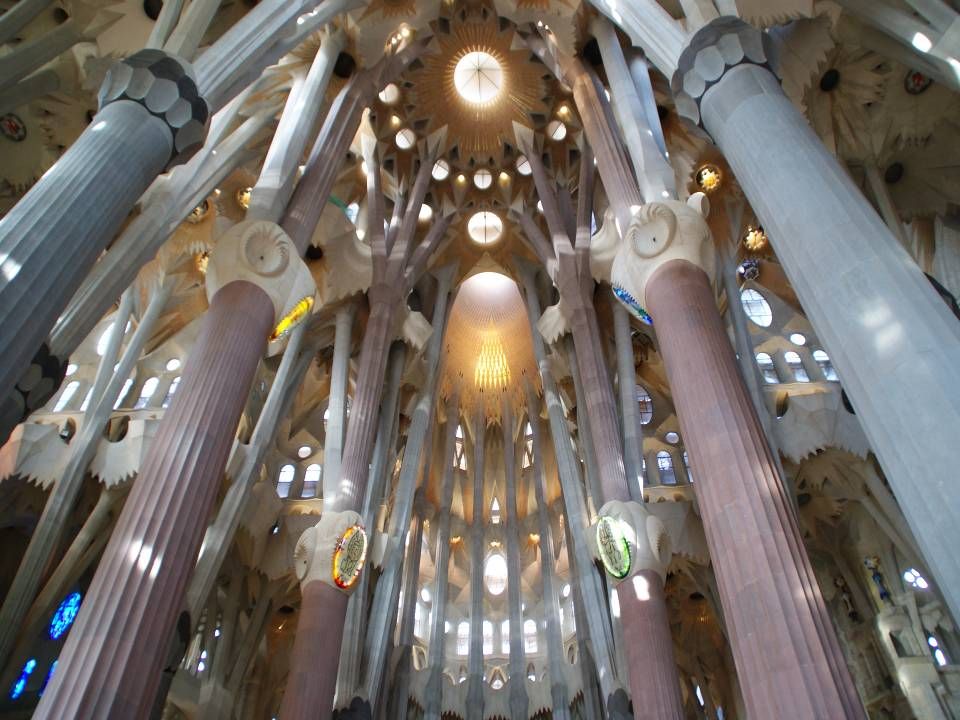 Please note that climbing the towers with children is prohibited.
Please note that climbing the towers with children is prohibited. 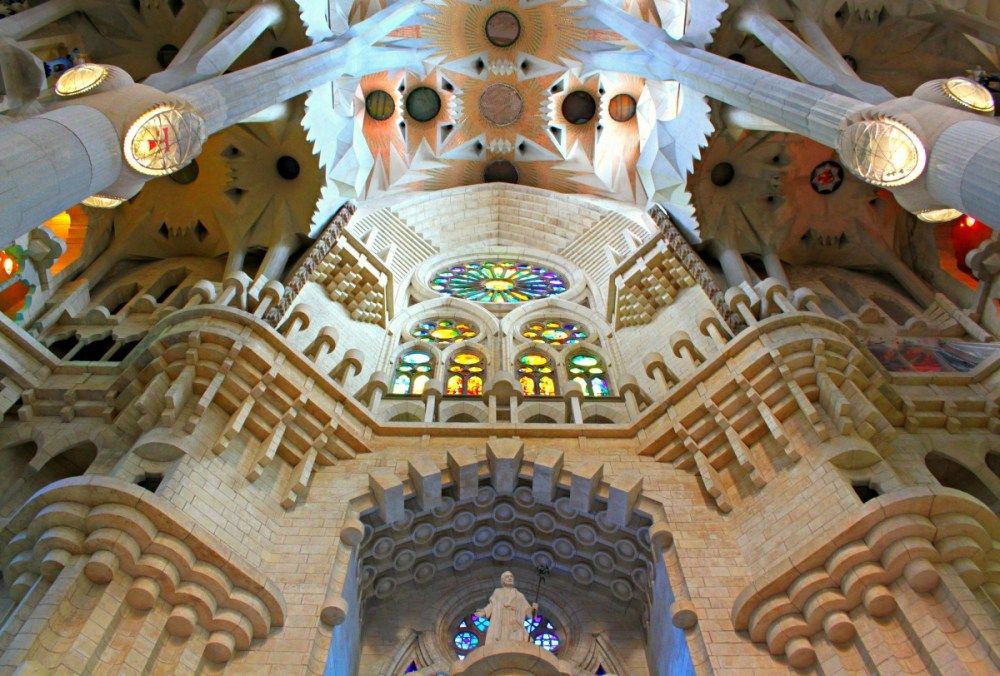 Info 2022 – FUNBCN
Info 2022 – FUNBCN 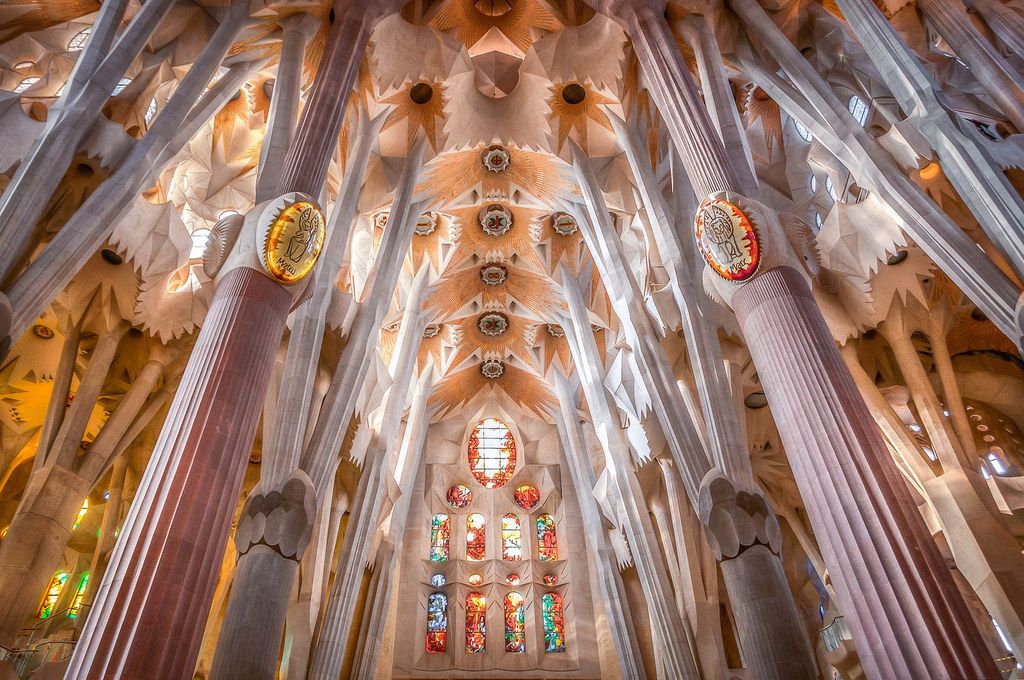 The Gaudi House Museum is also temporarily closed due to Covid-19
The Gaudi House Museum is also temporarily closed due to Covid-19 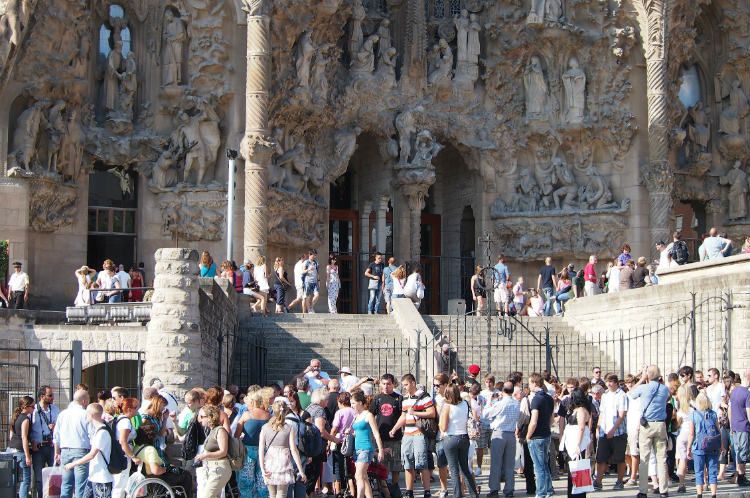
 In contrast to the Nativity façade, it is much more gloomy and concise.
In contrast to the Nativity façade, it is much more gloomy and concise. 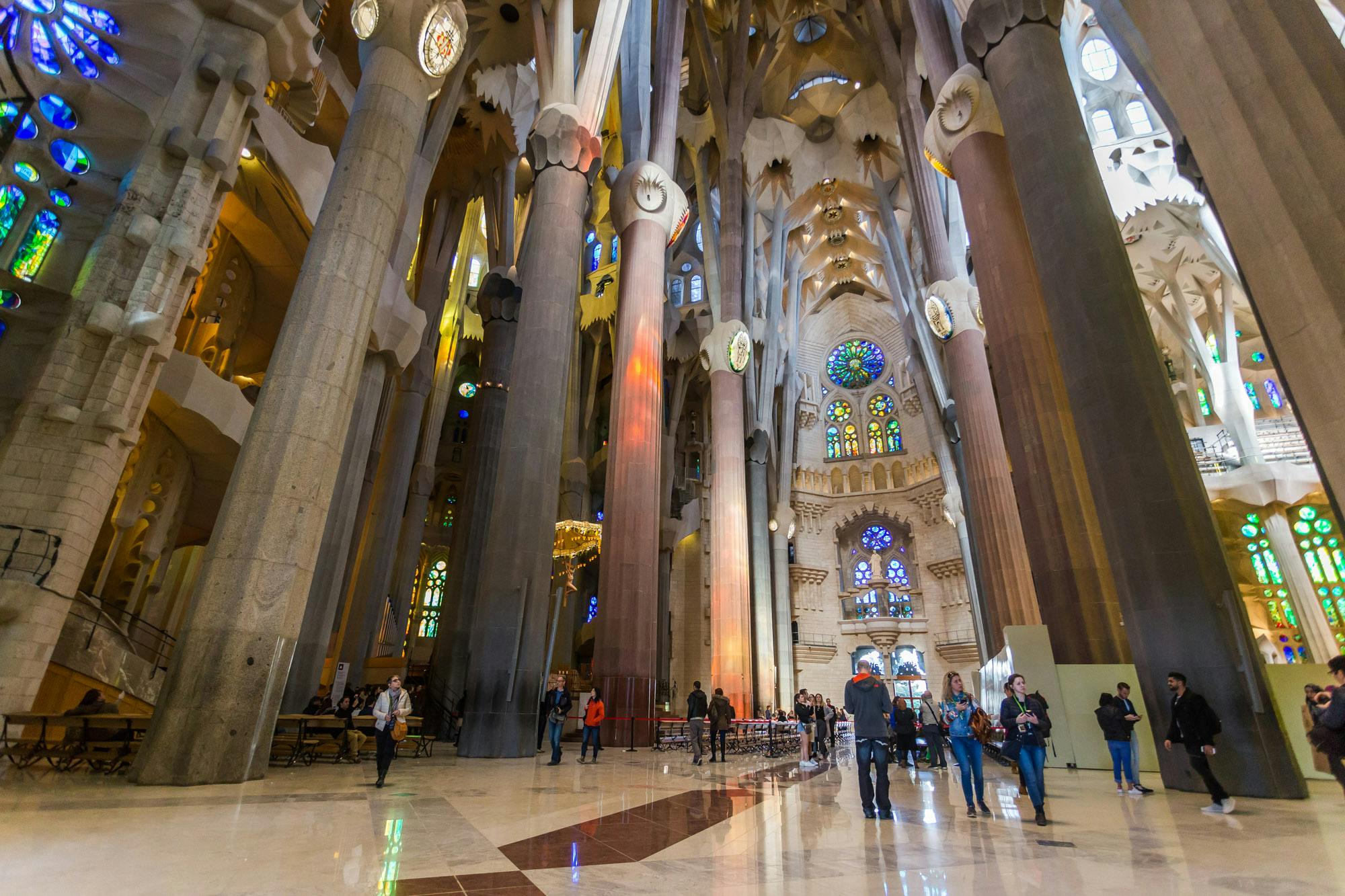 There are no right angles, and the slender rows of columns resemble
There are no right angles, and the slender rows of columns resemble Despite the fact that the temple has not yet been completed, it is considered to be active, so the dress code must be observed. Transparent clothes, open shoulders, deep necklines, skirts and shorts shorter than mid-thigh, as well as beachwear are not allowed.
Despite the fact that the temple has not yet been completed, it is considered to be active, so the dress code must be observed. Transparent clothes, open shoulders, deep necklines, skirts and shorts shorter than mid-thigh, as well as beachwear are not allowed. 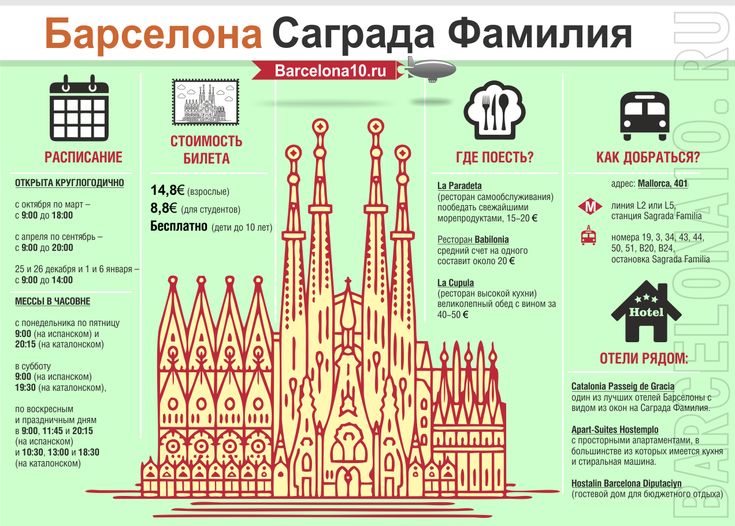 Photography during worship is prohibited.
Photography during worship is prohibited. 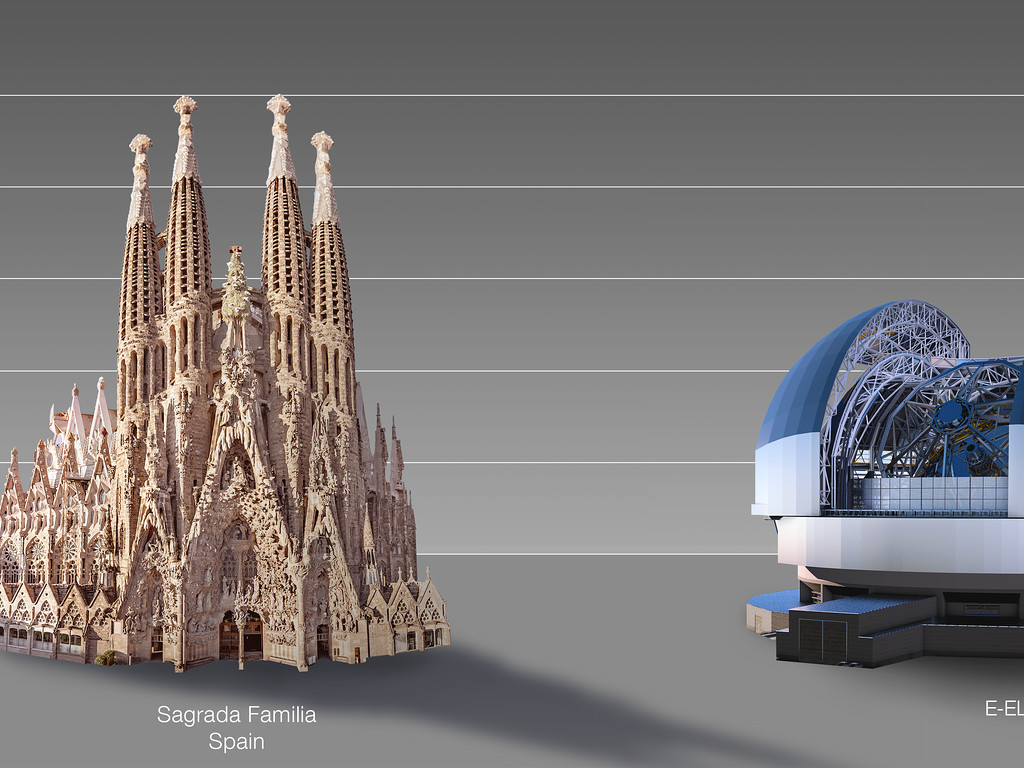 For those who are interested in the architecture of the building and the work of Gaudi, there are excursions with Russian-speaking guides outside the basilica.
For those who are interested in the architecture of the building and the work of Gaudi, there are excursions with Russian-speaking guides outside the basilica. 
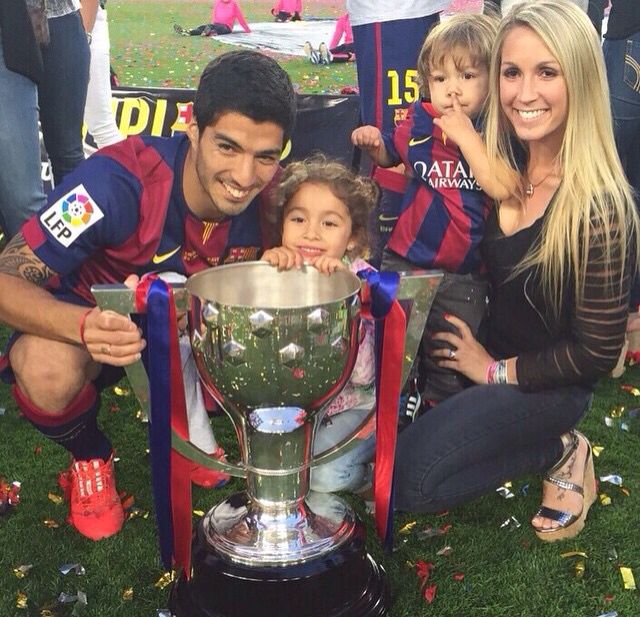
 Rent a rowboat and take a spin around a tiny green lake. Be warned that there were no life jackets available when we visited, which made me a wee nervous while paddling about with a wriggling toddler.
Rent a rowboat and take a spin around a tiny green lake. Be warned that there were no life jackets available when we visited, which made me a wee nervous while paddling about with a wriggling toddler.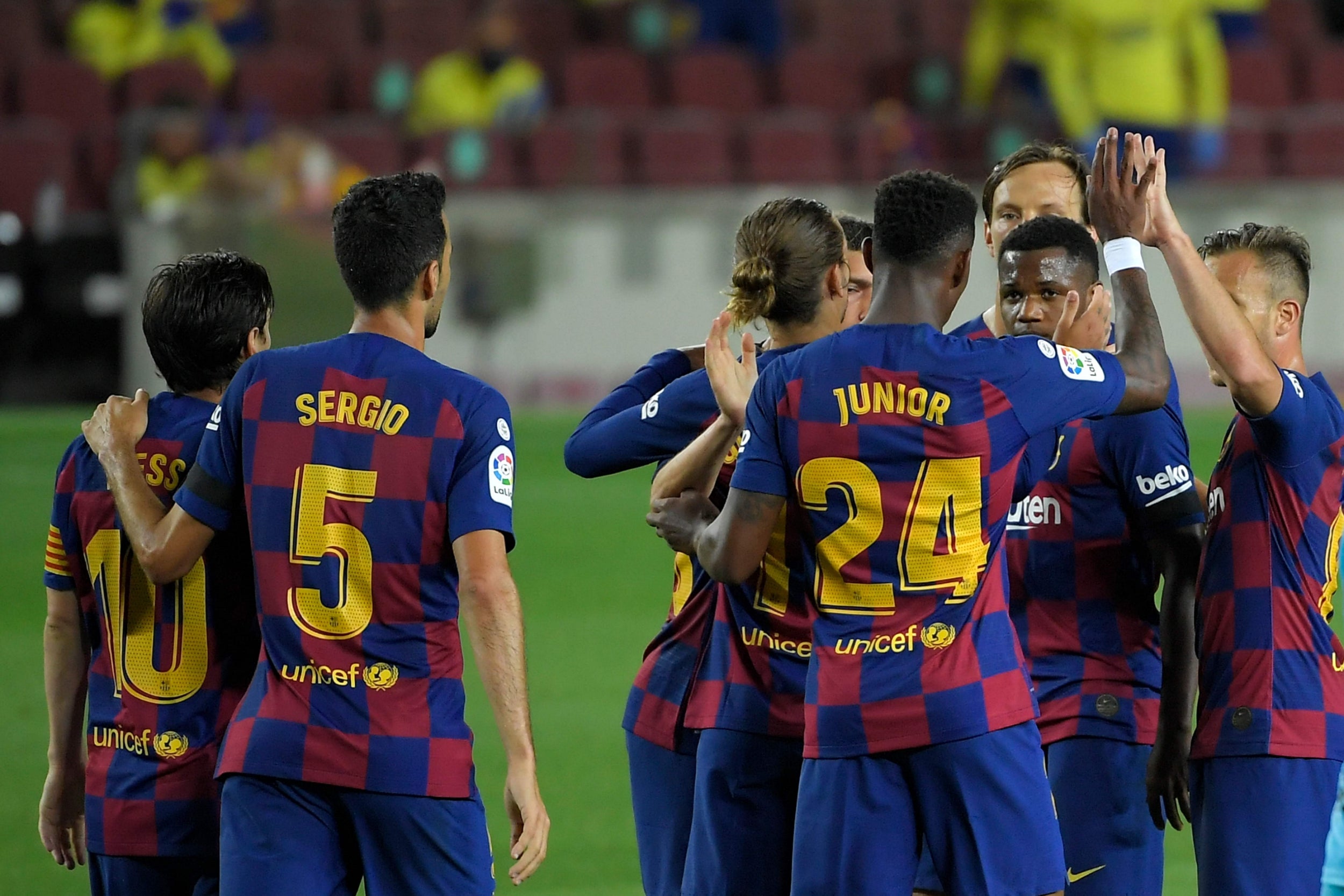
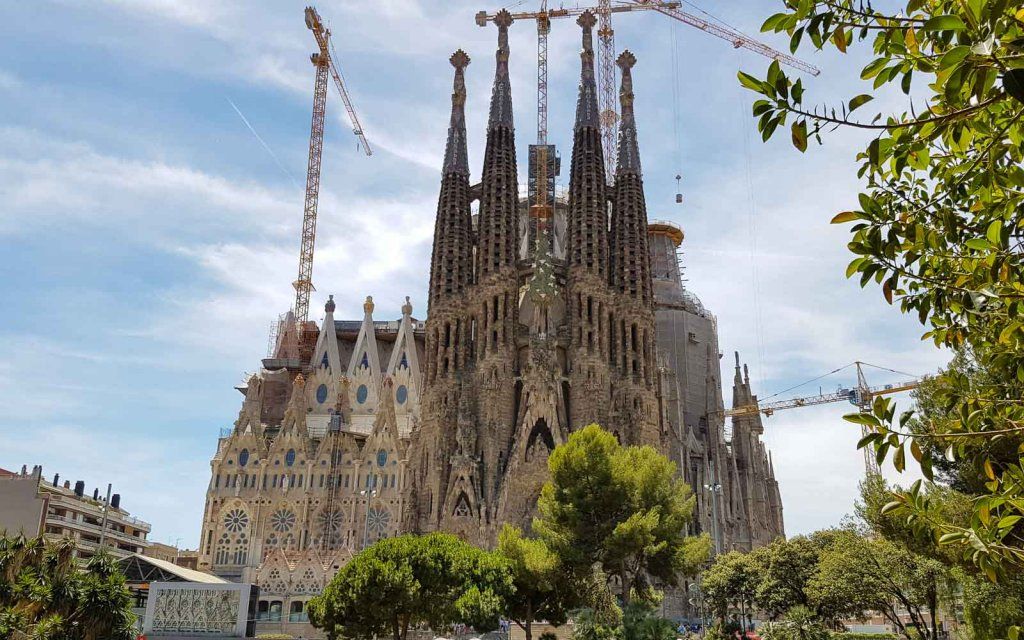 This unique church was designed by Antoni Gaudi, one of Barcelona’s most famous residents. The basilica should reach completion by 2026. Get more out of your visit by purchasing La Sagrada Familia tickets in advance with audio guide.
This unique church was designed by Antoni Gaudi, one of Barcelona’s most famous residents. The basilica should reach completion by 2026. Get more out of your visit by purchasing La Sagrada Familia tickets in advance with audio guide.  Take a look at our trusted partner’s most popular Barcelona tours for families.
Take a look at our trusted partner’s most popular Barcelona tours for families. Many of the tapas we tried were too dang greasy for my liking since many came deep-fried. The paella was decent but filled with too many odd creatures from both land and sea for my comfort. In fact, my favorite meal in Barcelona actually took place at an Italian restaurant.
Many of the tapas we tried were too dang greasy for my liking since many came deep-fried. The paella was decent but filled with too many odd creatures from both land and sea for my comfort. In fact, my favorite meal in Barcelona actually took place at an Italian restaurant. 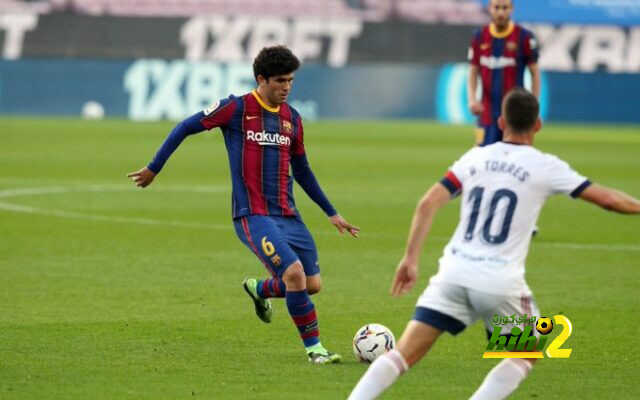 The décor was at once modern and elegant, too.
The décor was at once modern and elegant, too.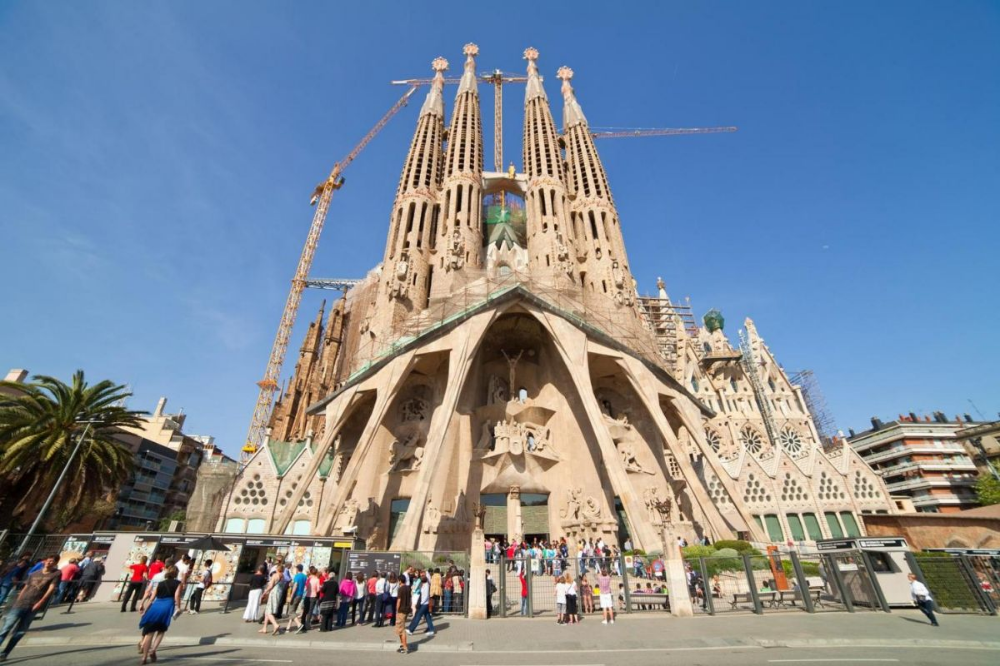 This really gave us a chance to explore this welcoming Spanish city.
This really gave us a chance to explore this welcoming Spanish city. 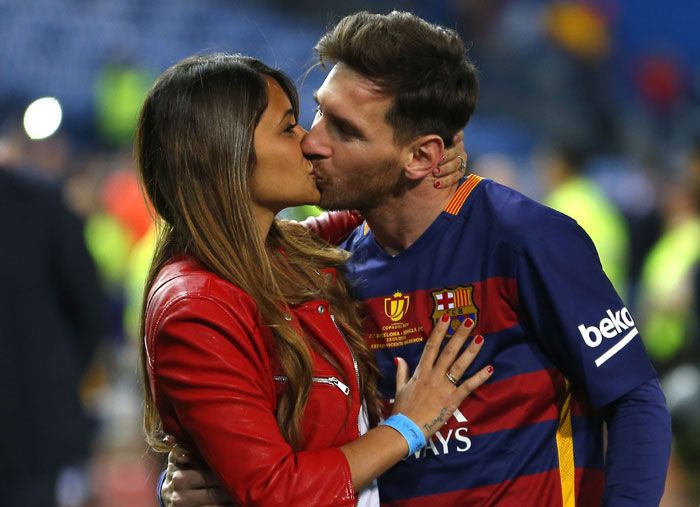
 By clicking on any of the links below, I may get a commission if you make a purchase at absolutely no additional charge to you. This helps offset the costs of running this blog & I appreciate your support. Please see my privacy & disclosure policy for more.
By clicking on any of the links below, I may get a commission if you make a purchase at absolutely no additional charge to you. This helps offset the costs of running this blog & I appreciate your support. Please see my privacy & disclosure policy for more.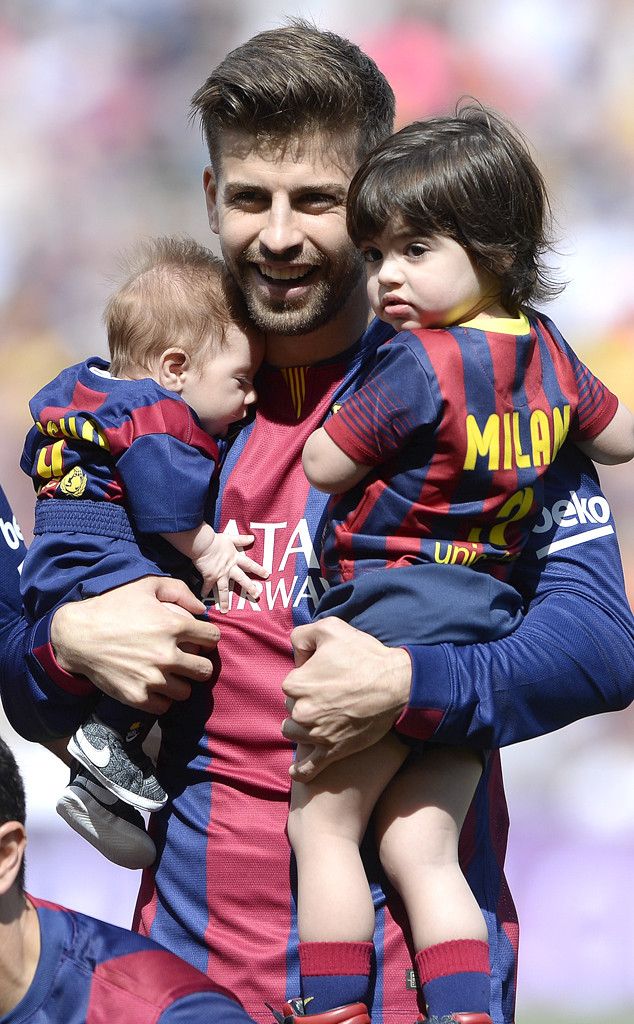 88 Euro as of November 2018.
88 Euro as of November 2018.
 They also start dropping around September when the kids start going to school. The crowds are less during this season.
They also start dropping around September when the kids start going to school. The crowds are less during this season.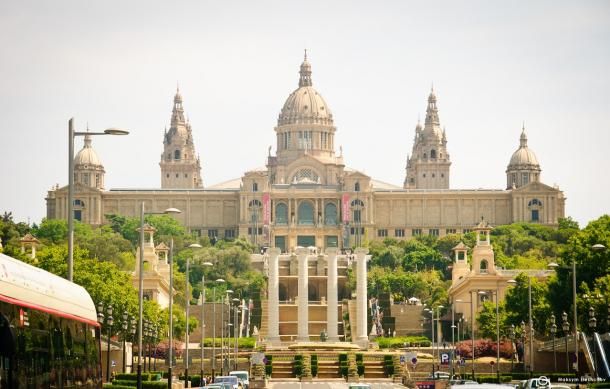 I purchased our tickets on Skyscanner for $15.95 each. Make sure to download the Free Skyscanner App also for amazing flight deals like this. After our trip ended in Barcelona, we flew from Barcelona to LAX on Norwegian Air.
I purchased our tickets on Skyscanner for $15.95 each. Make sure to download the Free Skyscanner App also for amazing flight deals like this. After our trip ended in Barcelona, we flew from Barcelona to LAX on Norwegian Air.
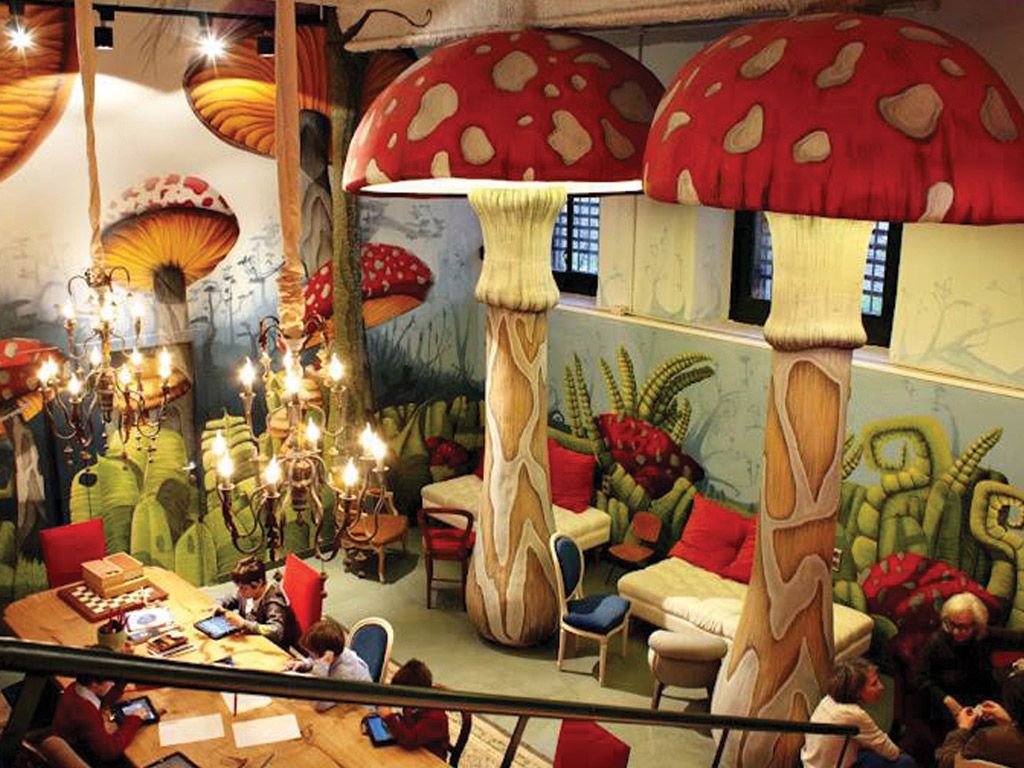 The area is quite expensive but your kids will love its peaceful streets with many parks that they can play.
The area is quite expensive but your kids will love its peaceful streets with many parks that they can play. 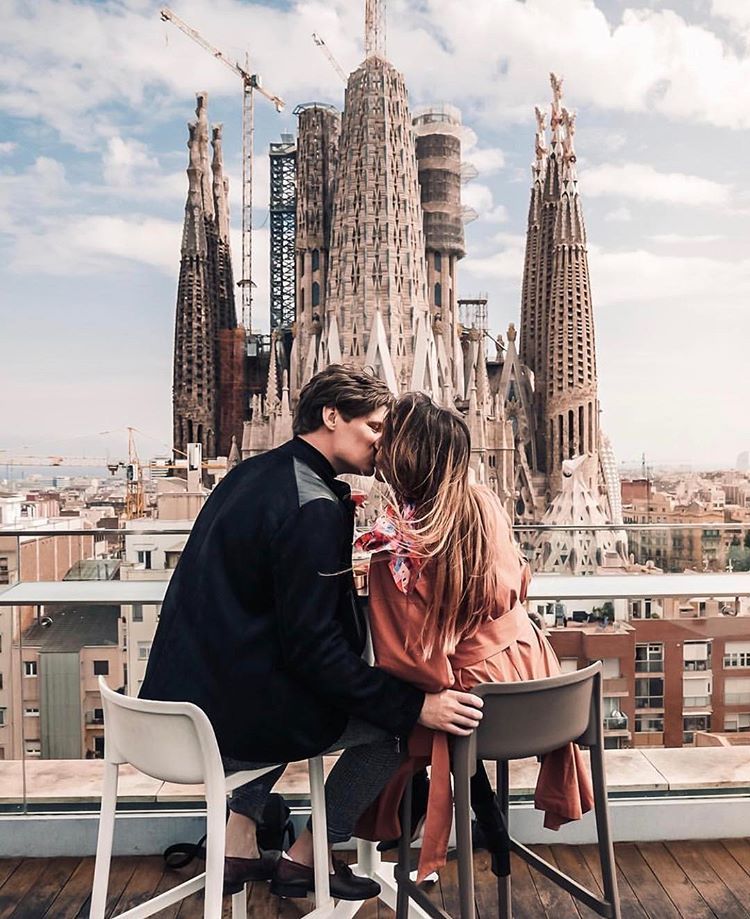
 The hotel rooms feature sitting areas, bathtubs, balconies, minibars, and many more amenities.
The hotel rooms feature sitting areas, bathtubs, balconies, minibars, and many more amenities. The hotel is kid friendly with the hotel restaurant also has a specially designed kids’ menu.
The hotel is kid friendly with the hotel restaurant also has a specially designed kids’ menu. There are so many things to enjoy this attraction and your kids will not want to leave here.
There are so many things to enjoy this attraction and your kids will not want to leave here.

 They have the best food and drinks; from tapas, to paella to sangria – you can’t go wrong.
They have the best food and drinks; from tapas, to paella to sangria – you can’t go wrong. 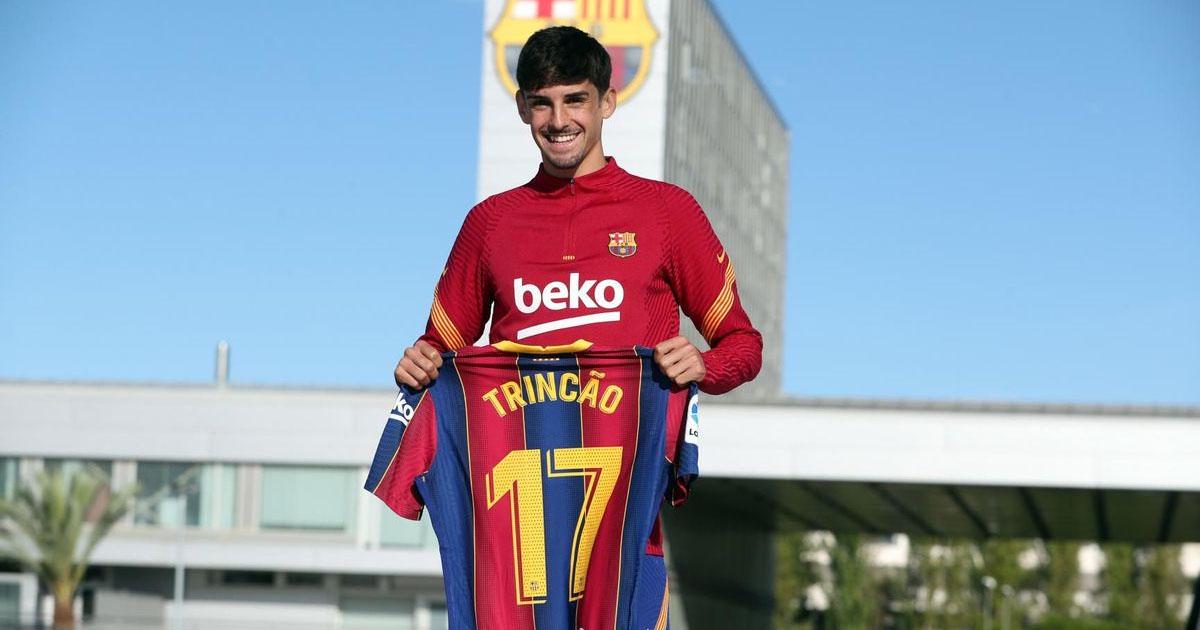
 Sim Cards are very cheap and easy to find at any shop or mall.
Sim Cards are very cheap and easy to find at any shop or mall. com, Car Rental 8 or Skyscanner Car Rentals
com, Car Rental 8 or Skyscanner Car Rentals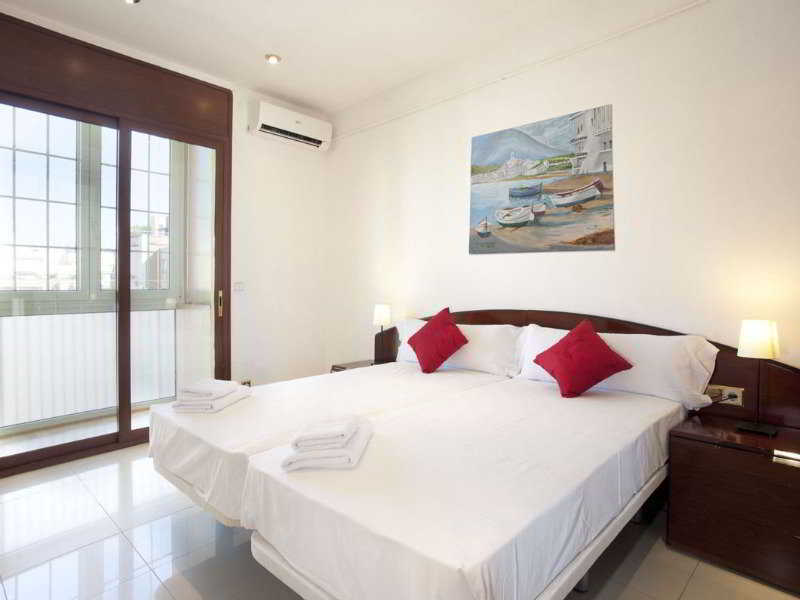 Information about transport was very useful to us, about the metro system and the T-Casual ticket. And more information about airport transfers and how to get to Montserrat. I also liked the list of activities for children. Tibidabo and Park Güell loved our 12 year old daughter.
Information about transport was very useful to us, about the metro system and the T-Casual ticket. And more information about airport transfers and how to get to Montserrat. I also liked the list of activities for children. Tibidabo and Park Güell loved our 12 year old daughter. 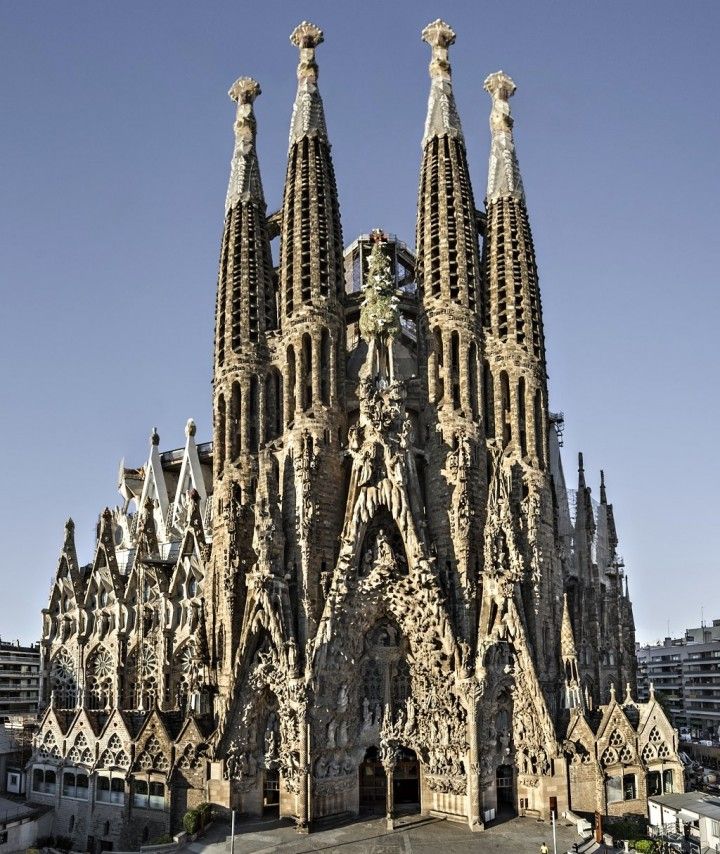 This master class will show you all the steps in the process of creating your own pottery in the Gaudí style. You can even take your creations as a souvenir. Follow the link below to find out how to attend this workshop while on holiday in Barcelona.
This master class will show you all the steps in the process of creating your own pottery in the Gaudí style. You can even take your creations as a souvenir. Follow the link below to find out how to attend this workshop while on holiday in Barcelona.  If you visit the center before going to Park Güell, then you will look at the creations of Gaudí in a completely different way.
If you visit the center before going to Park Güell, then you will look at the creations of Gaudí in a completely different way.  And if you want to book a room, we have provided links to a secure booking system.
And if you want to book a room, we have provided links to a secure booking system. 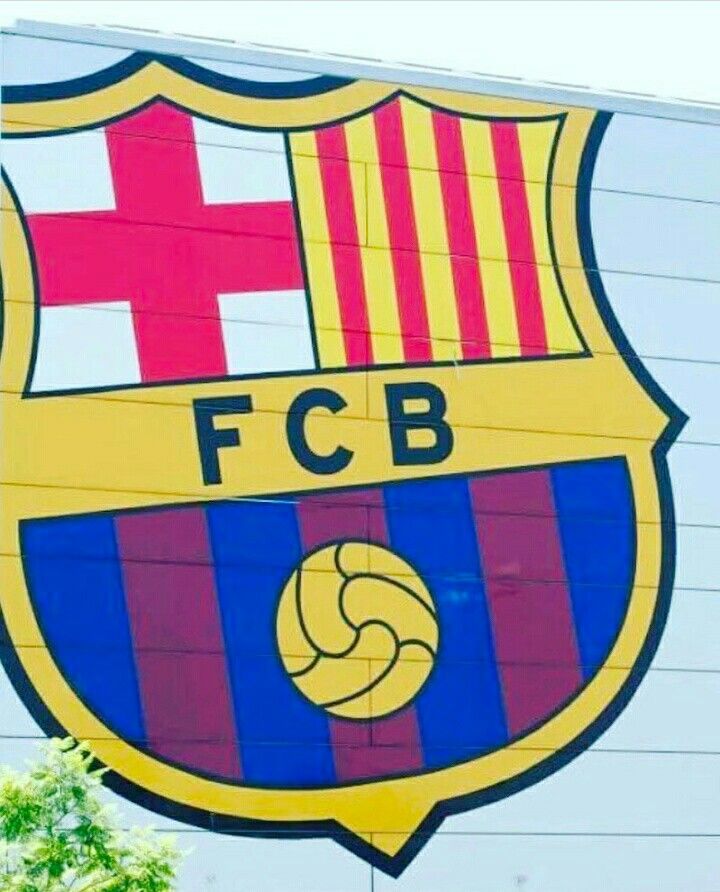

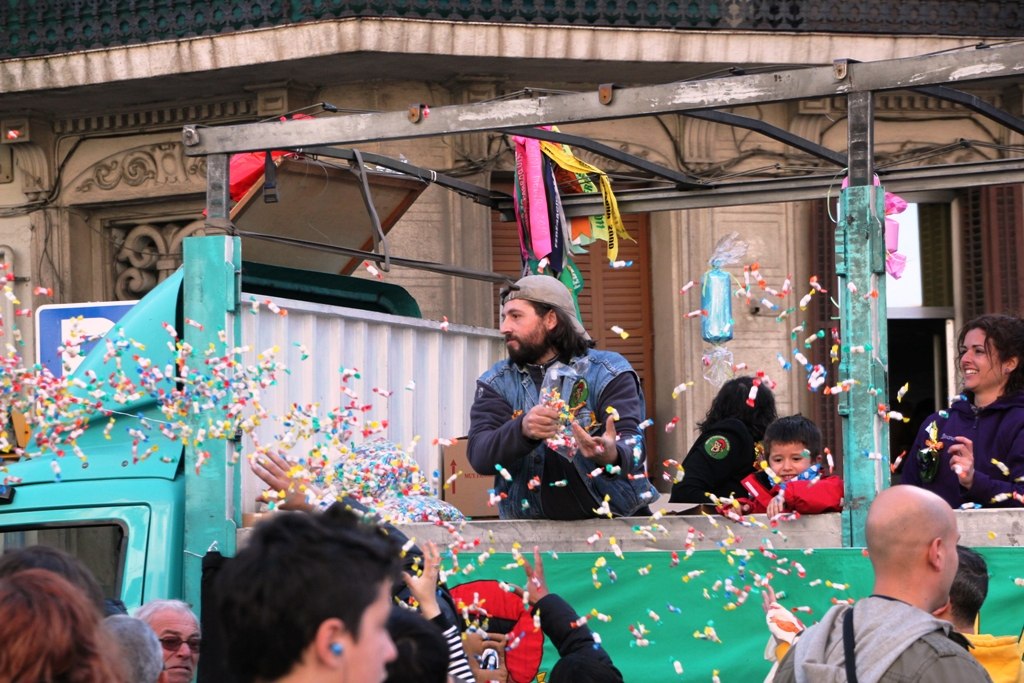
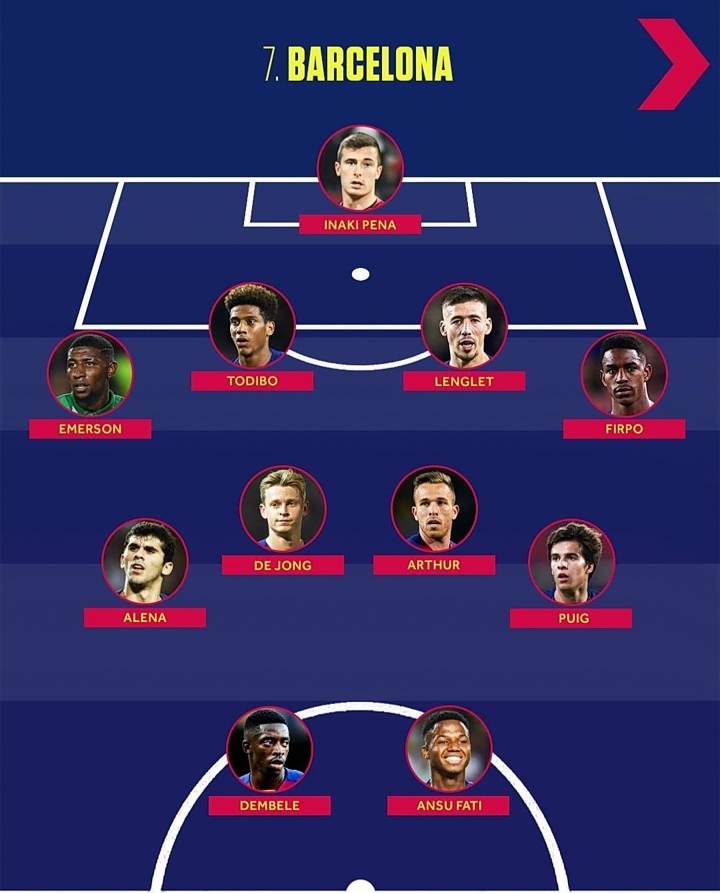

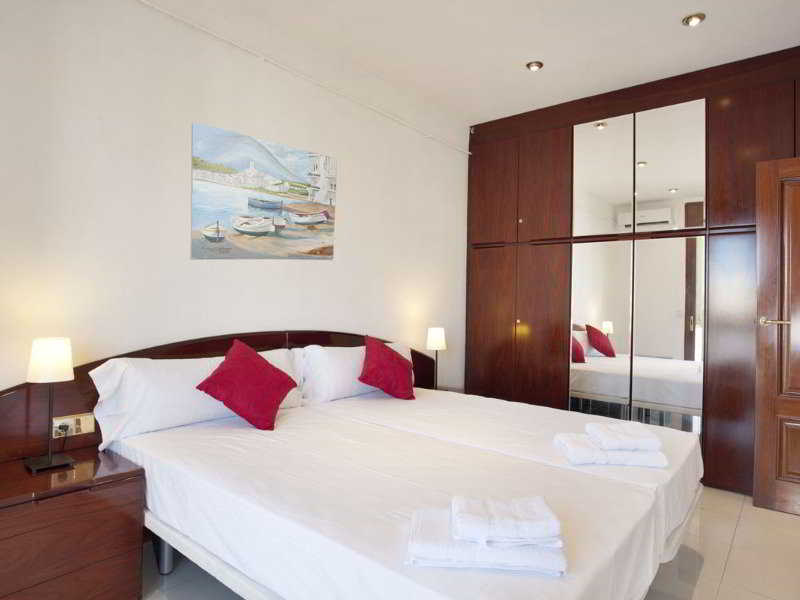 6
6  highly recommended.
highly recommended.

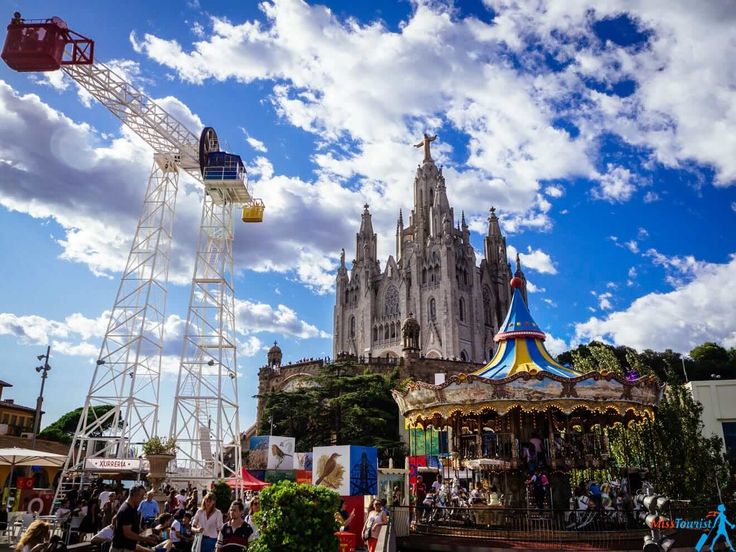 3
3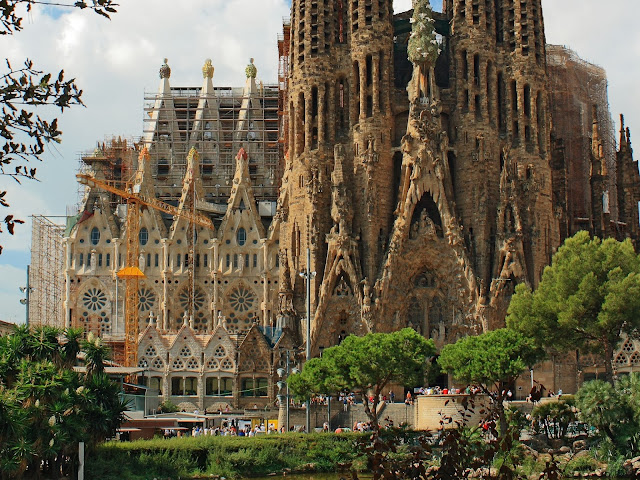 58 per night
58 per night 
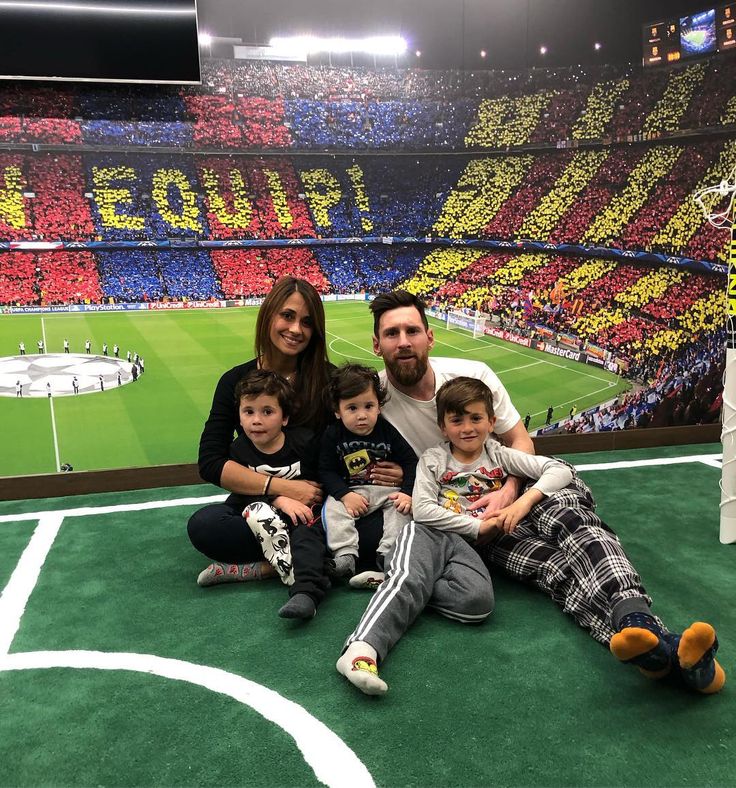 33 per night
33 per night 

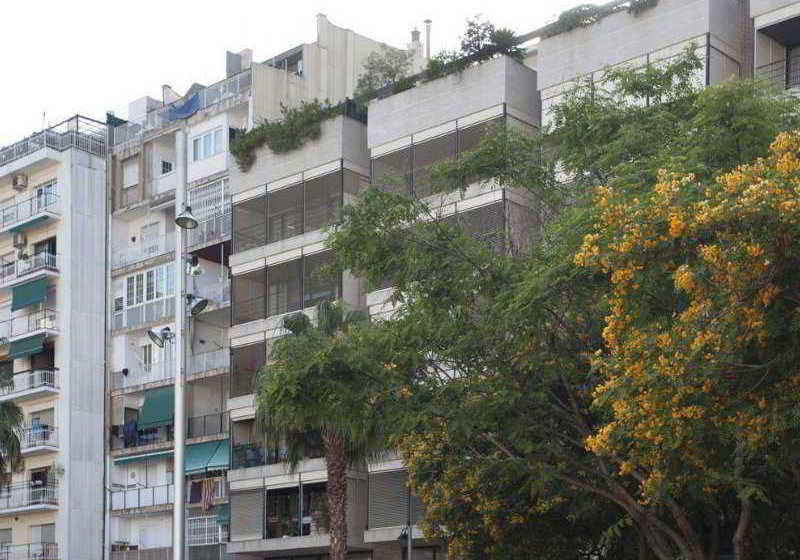 It offers air-conditioned rooms with free Wi-Fi and private parking. The beaches of Barceloneta, Somorrostro and San Miguel are 2.5 km away.
It offers air-conditioned rooms with free Wi-Fi and private parking. The beaches of Barceloneta, Somorrostro and San Miguel are 2.5 km away. 13 per night
13 per night 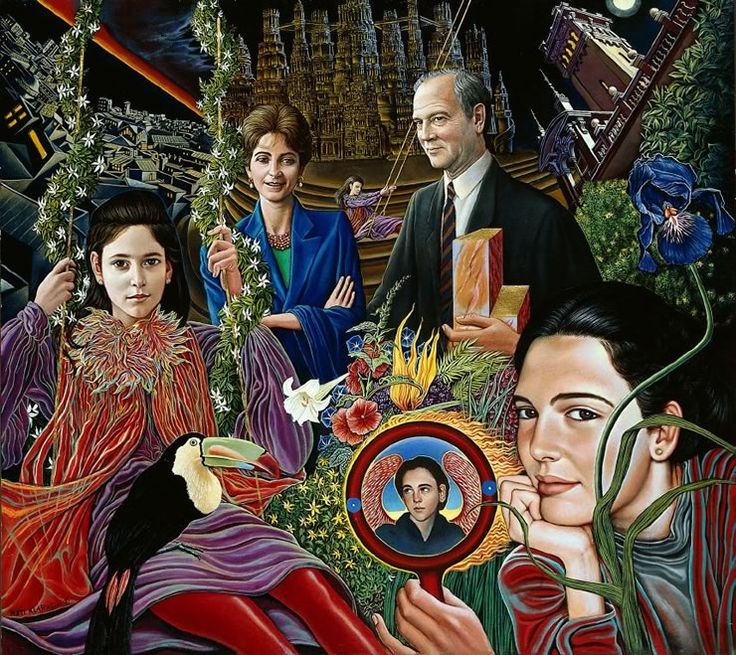


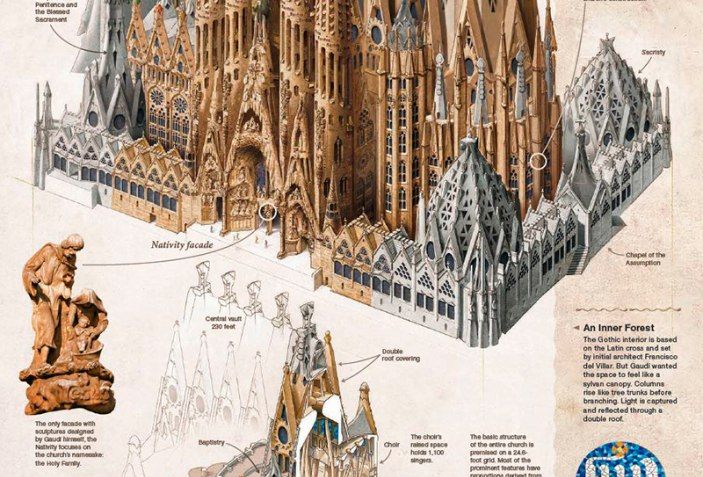 The Glory Facade represents Christ’s eternal glory and features scenes of Christ’s rise to heaven and eternal bliss. The construction of the facade began in 2002 and is still far from being completed. Although unfinished, it is already the tallest of all the facades. Gaudi was well aware that construction of the Glory facade would not be completed in his lifetime and hence drew just a few sketches with a general idea of what his vision and plan were, and this included representations of Death, Final Judgement, Hell, and Glory. While his models were demolished in 1936. the original fragments were used to develop the design for the façade.
The Glory Facade represents Christ’s eternal glory and features scenes of Christ’s rise to heaven and eternal bliss. The construction of the facade began in 2002 and is still far from being completed. Although unfinished, it is already the tallest of all the facades. Gaudi was well aware that construction of the Glory facade would not be completed in his lifetime and hence drew just a few sketches with a general idea of what his vision and plan were, and this included representations of Death, Final Judgement, Hell, and Glory. While his models were demolished in 1936. the original fragments were used to develop the design for the façade. 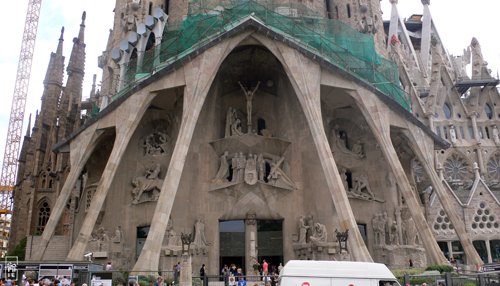 The central doors are inscribed with the words “Give us our daily bread” in fifty different languages. The handles of the door depict the letters “A” and “G” that form the initials of Antoni Gaudí within the phrase “lead us not into temptation”.
The central doors are inscribed with the words “Give us our daily bread” in fifty different languages. The handles of the door depict the letters “A” and “G” that form the initials of Antoni Gaudí within the phrase “lead us not into temptation”. 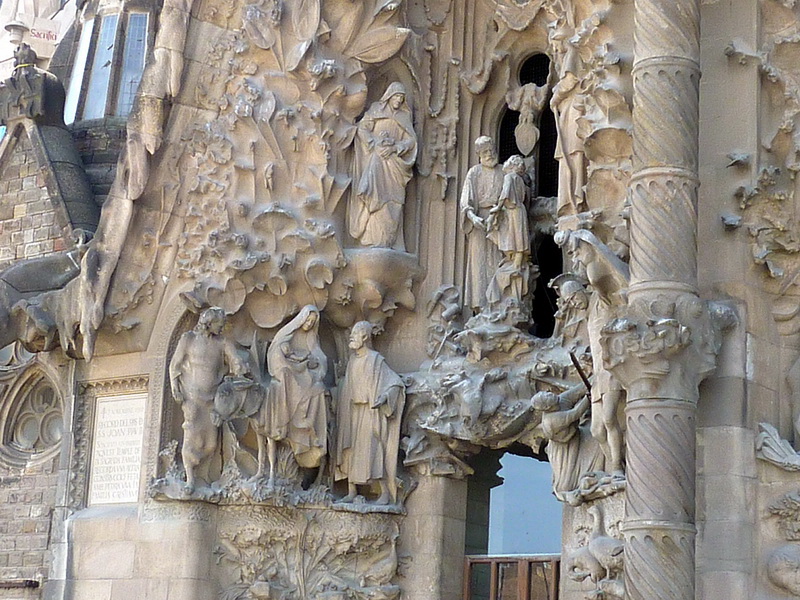 You can book your Sagrada Familia tickets here.
You can book your Sagrada Familia tickets here.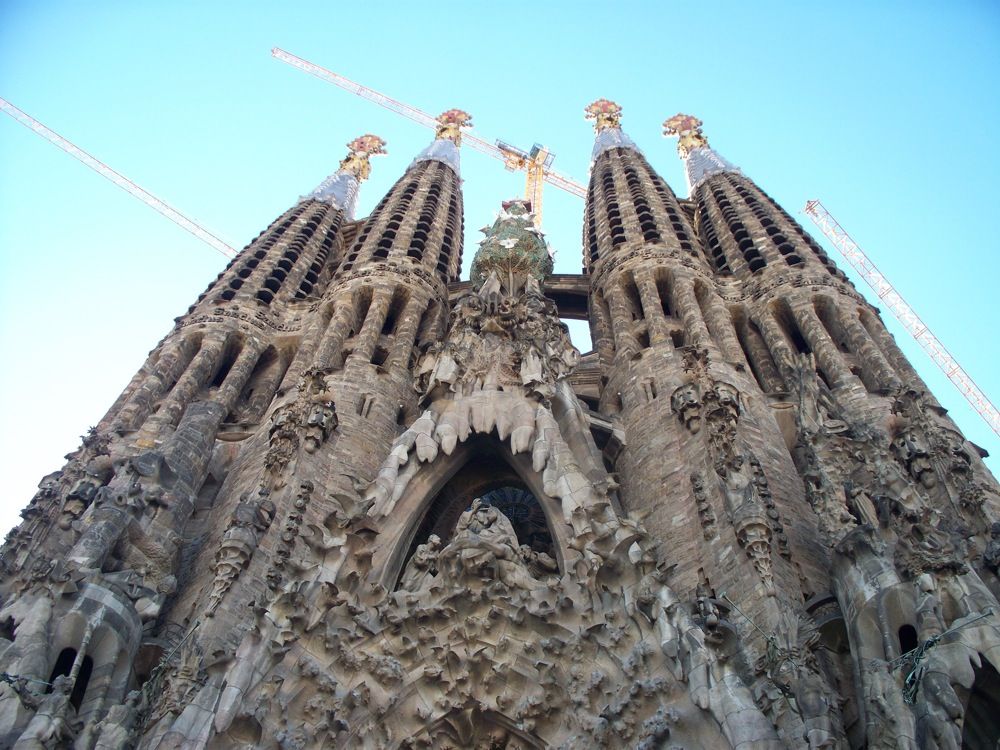 We can imagine the problems that this would be able to cause).
We can imagine the problems that this would be able to cause). 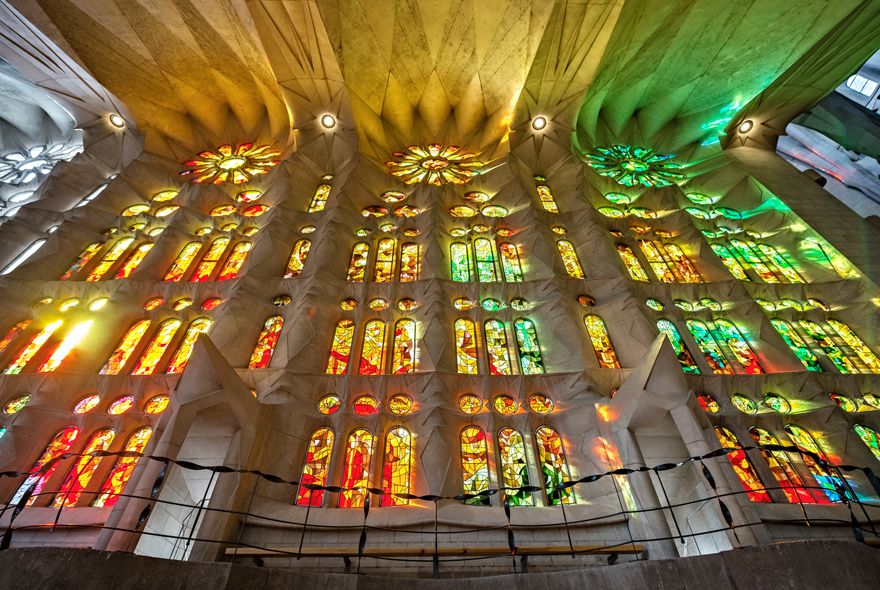 The pinnacles will be seemed to the ones of the other facades but with a different vertical ordering.
The pinnacles will be seemed to the ones of the other facades but with a different vertical ordering.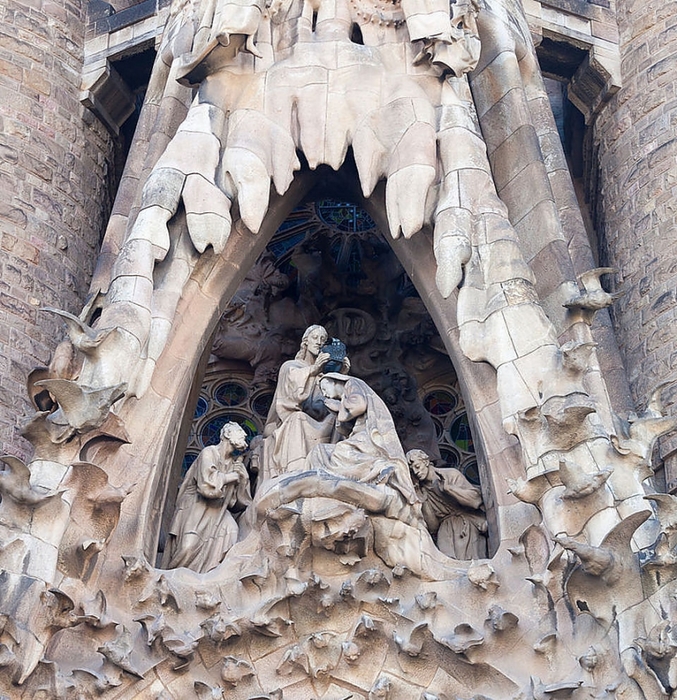
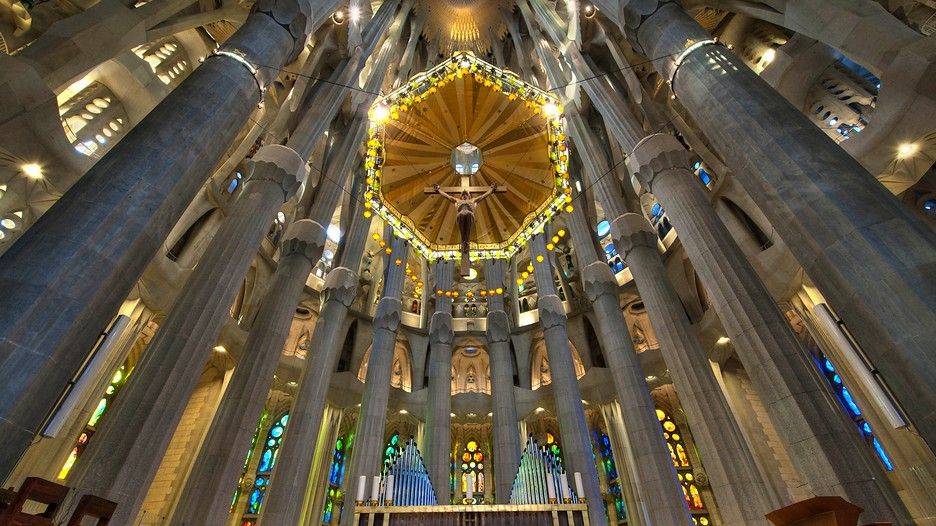
 Three Marys, three weeping women. Jesus falls on the road to Golgotha, and Simeon picks up his cross.
Three Marys, three weeping women. Jesus falls on the road to Golgotha, and Simeon picks up his cross. 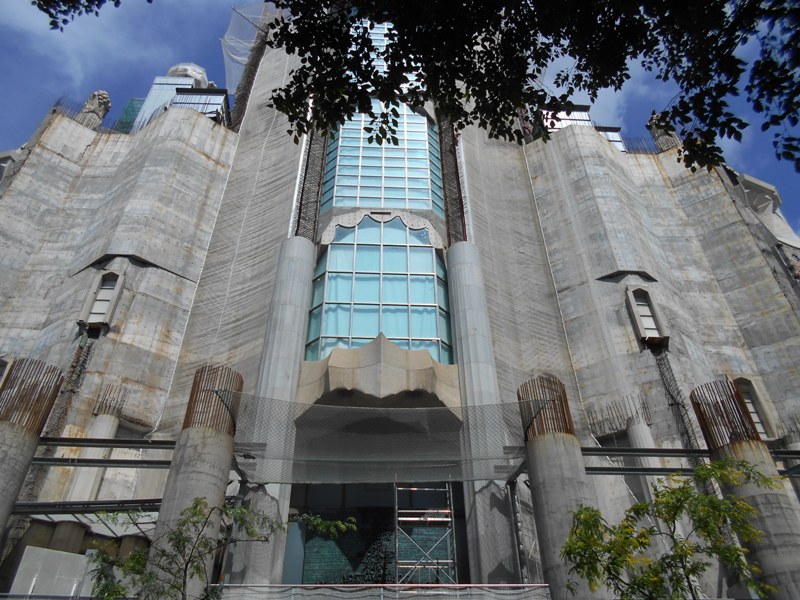
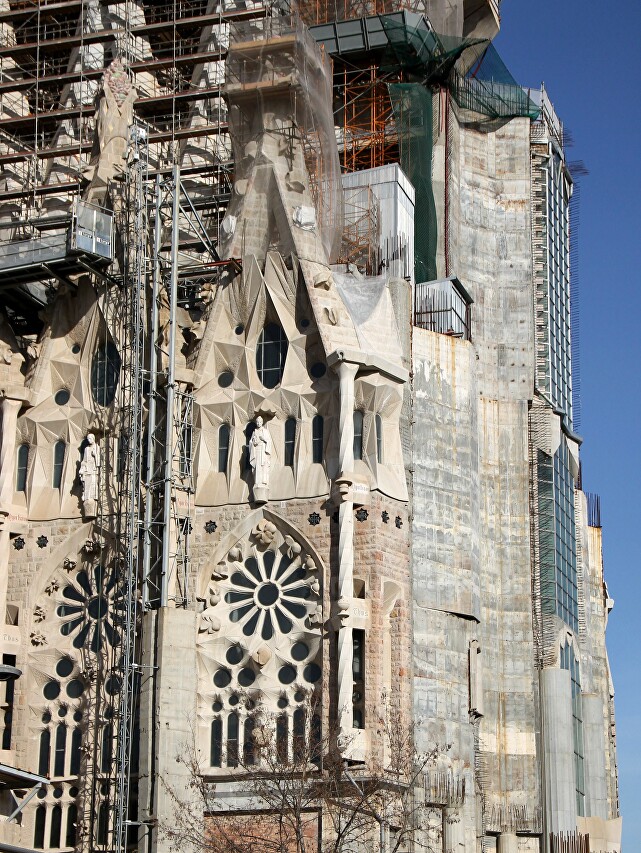 Nicodemus helps Joseph of Arimathea carry Jesus wrapped in a shroud.
Nicodemus helps Joseph of Arimathea carry Jesus wrapped in a shroud. 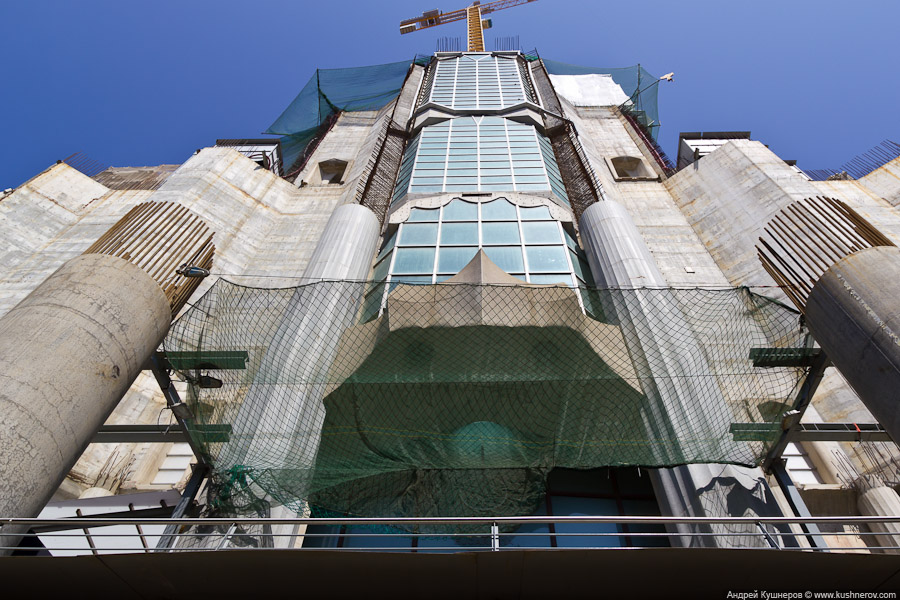
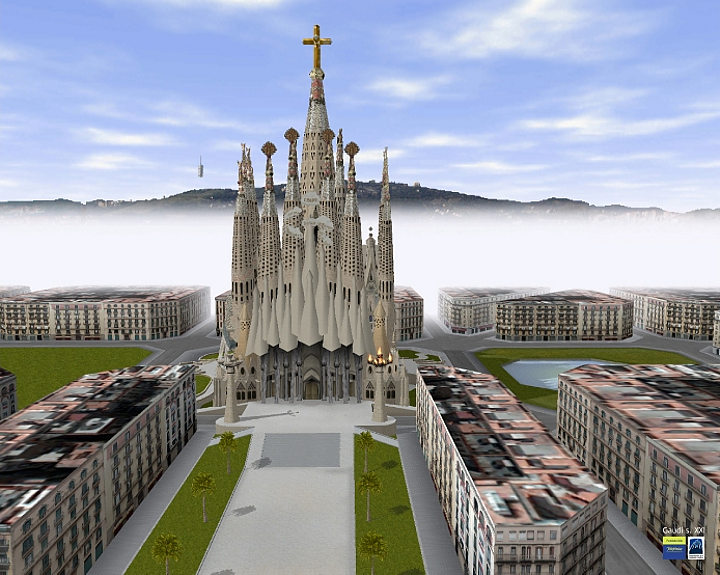
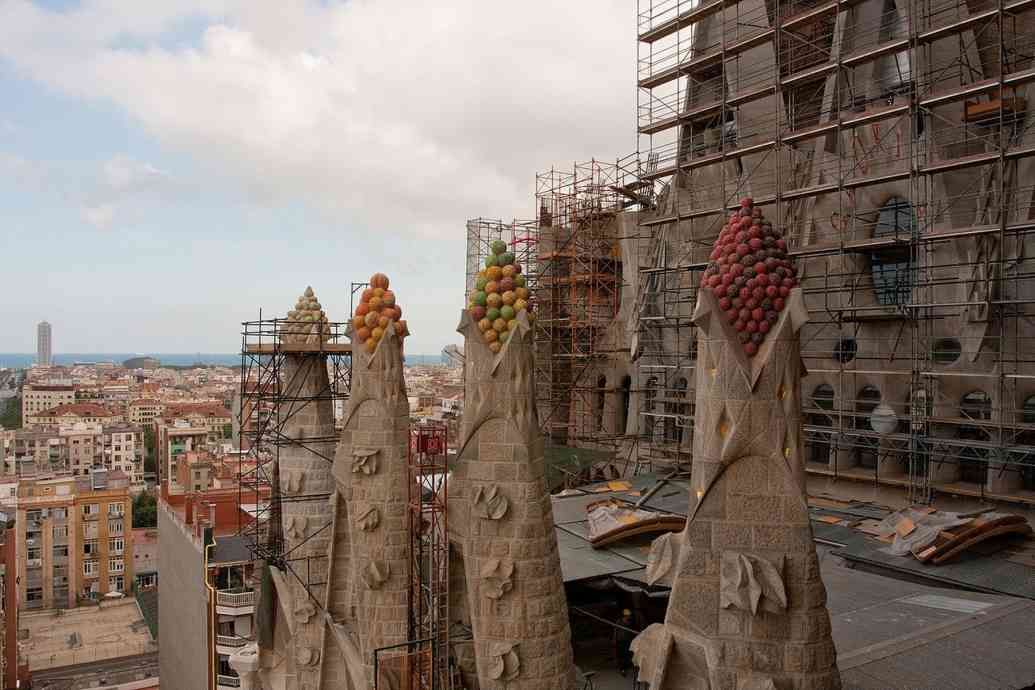
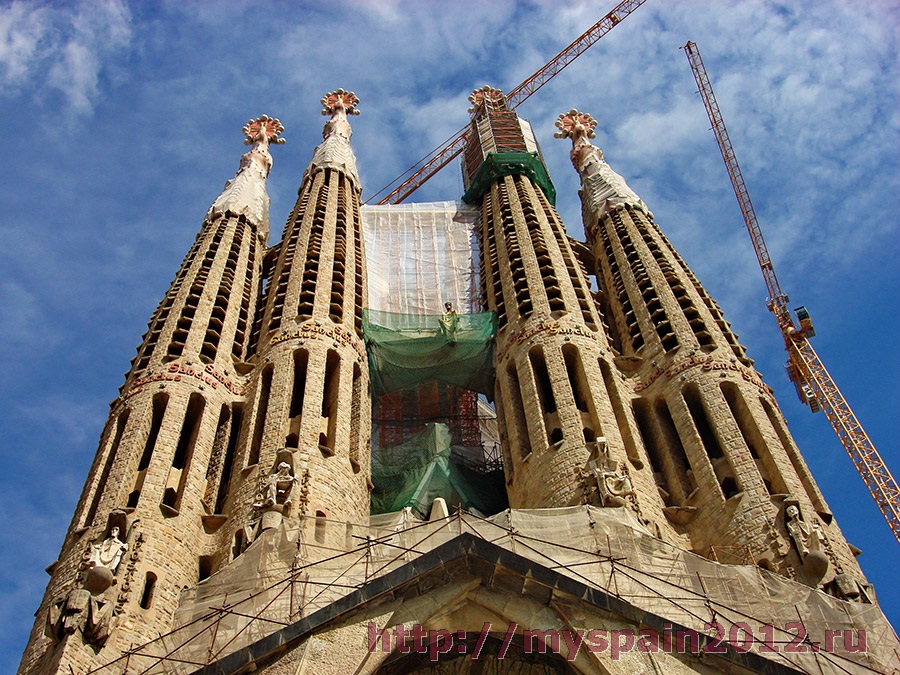 Gaudi himself.
Gaudi himself.
 Sometimes this is a small bas-relief on the wall, sometimes –
Sometimes this is a small bas-relief on the wall, sometimes – At that time, the labyrinth was perceived as a place where a person can easily
At that time, the labyrinth was perceived as a place where a person can easily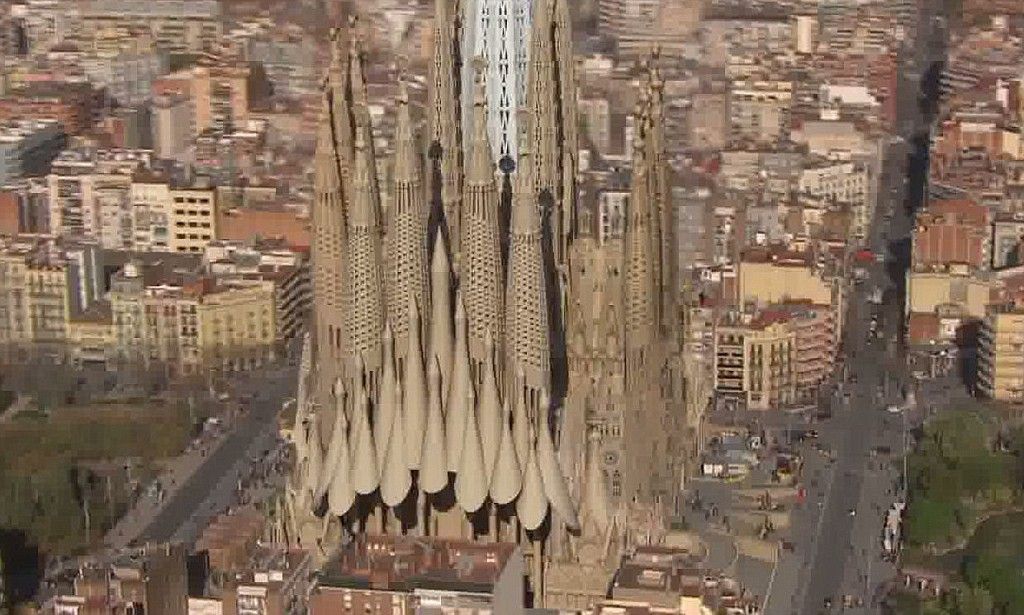

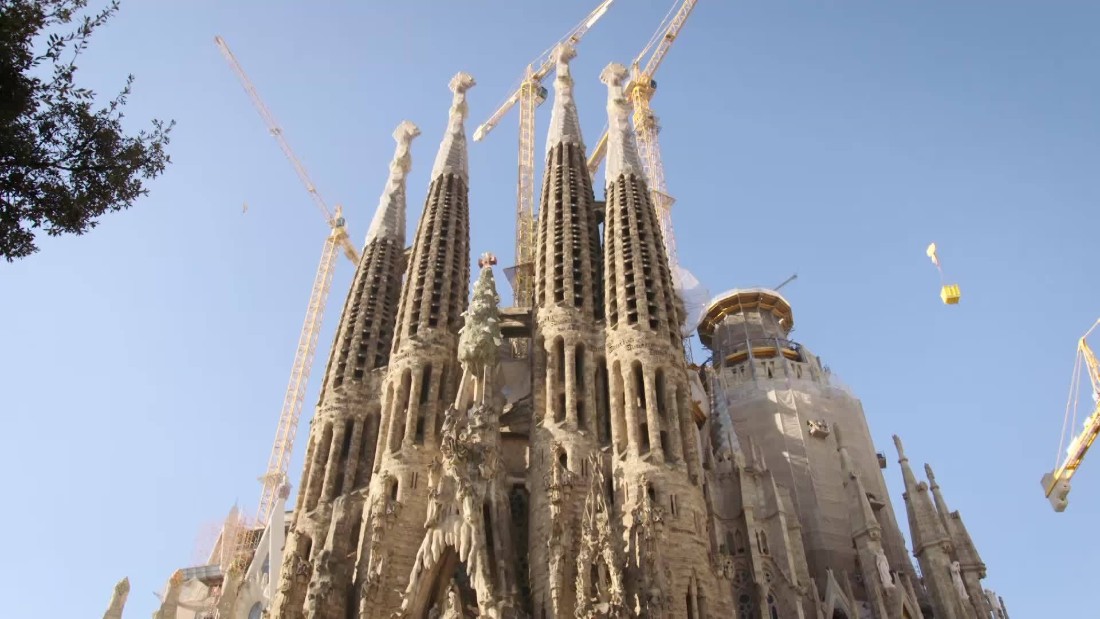
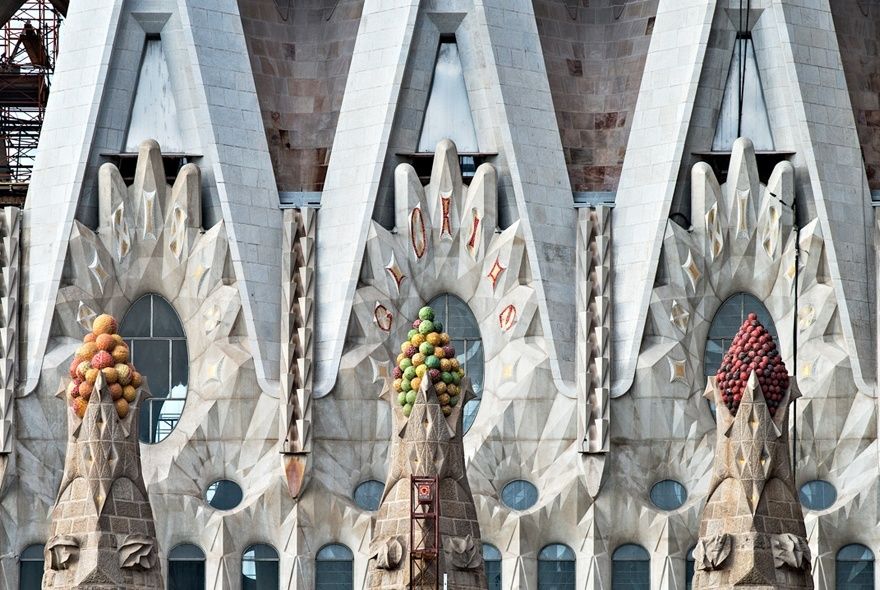 En aquest moment hi ha col·locada la part inferior del fust. La part superior i inferior del fust es recobreixen amb trencadís artístic de gres ceràmic amb colors que van dels blaus als blancs, amb alguns punts de mosaic venecià daurat.
En aquest moment hi ha col·locada la part inferior del fust. La part superior i inferior del fust es recobreixen amb trencadís artístic de gres ceràmic amb colors que van dels blaus als blancs, amb alguns punts de mosaic venecià daurat. La torre de Jesucrist puja dos nivells, i assoleix el vuitè nivell dels dotze que tindrà, de manera que se situa als 125,85 metres. El dia 16 de desembre del 2022 s’il·luminen per primer cop els terminals de les torres dels Evangelistes Lluc i Marc, dues de les quatre torres dels Evangelistes que formen part del conjunt de torres centrals. Està previst acabar les torres dels Evangelistes Joan i Mateu l’any 2023, i finalitzar la torre central de Jesús el 2026.
La torre de Jesucrist puja dos nivells, i assoleix el vuitè nivell dels dotze que tindrà, de manera que se situa als 125,85 metres. El dia 16 de desembre del 2022 s’il·luminen per primer cop els terminals de les torres dels Evangelistes Lluc i Marc, dues de les quatre torres dels Evangelistes que formen part del conjunt de torres centrals. Està previst acabar les torres dels Evangelistes Joan i Mateu l’any 2023, i finalitzar la torre central de Jesús el 2026.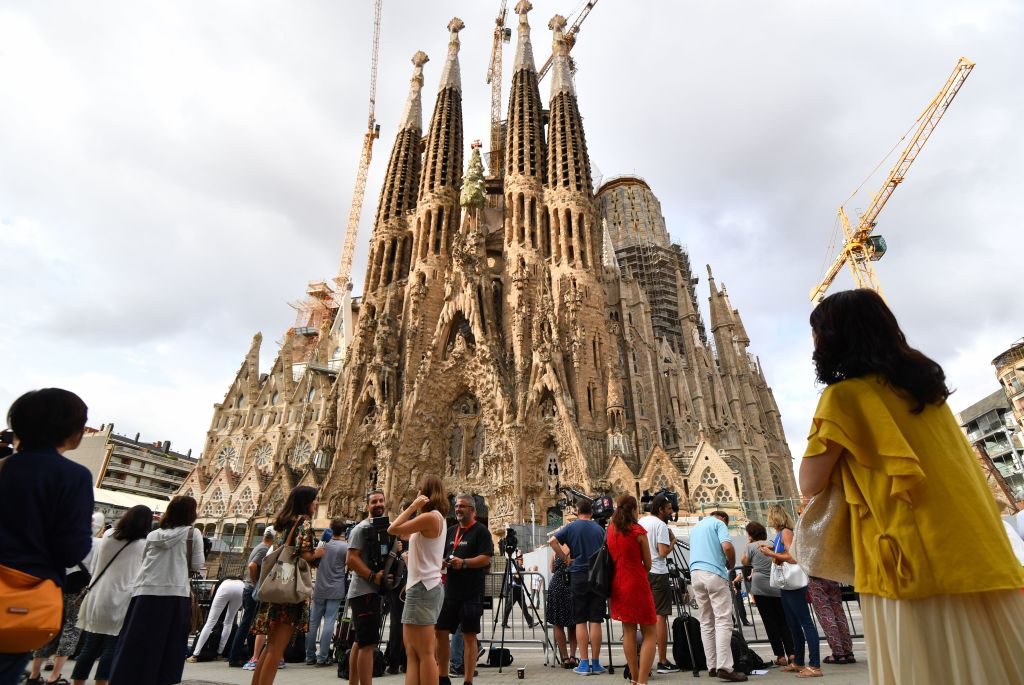
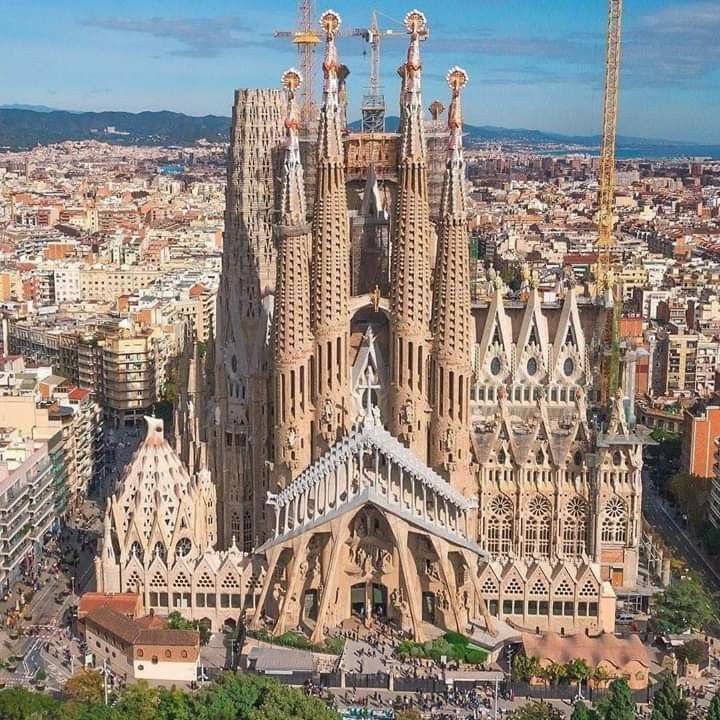
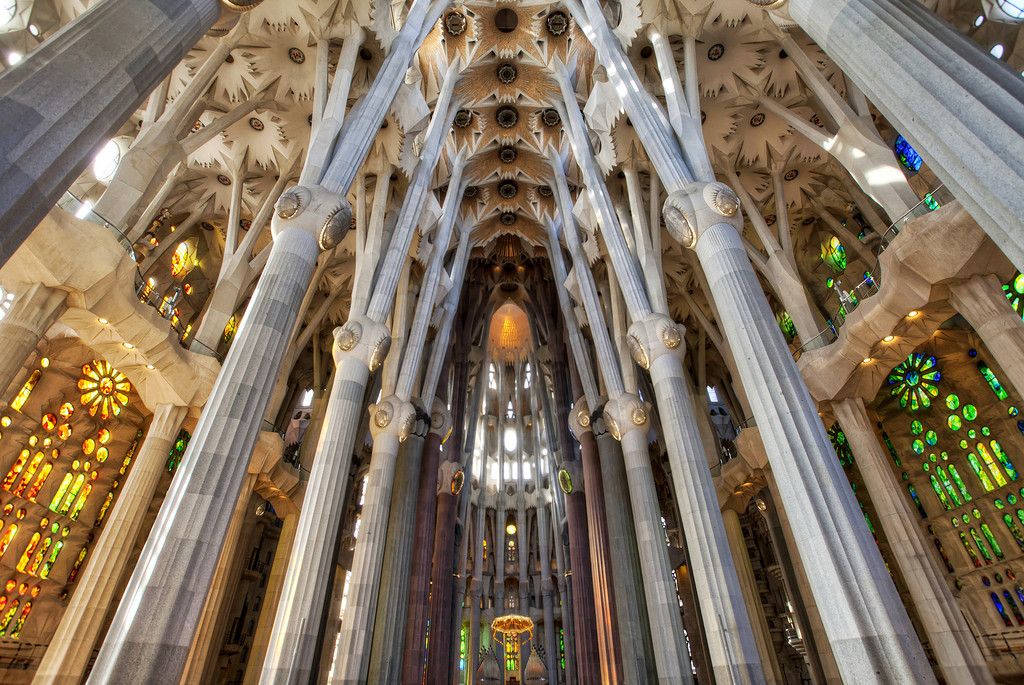 Desde sus inicios en el año 1882 la basílica ha sido un templo expiatorio, es decir, construido a partir de donaciones. Es por esto que la fecha de finalización de la Sagrada Familia podría estar aún bastante lejos.
Desde sus inicios en el año 1882 la basílica ha sido un templo expiatorio, es decir, construido a partir de donaciones. Es por esto que la fecha de finalización de la Sagrada Familia podría estar aún bastante lejos.
